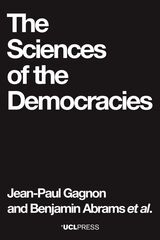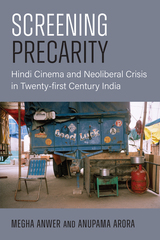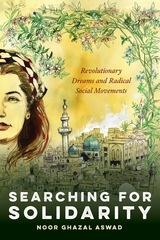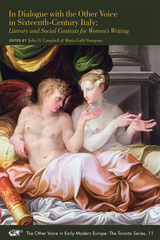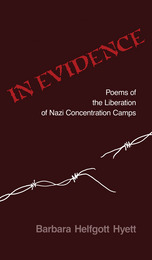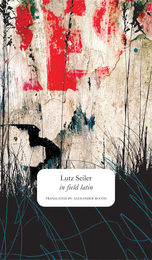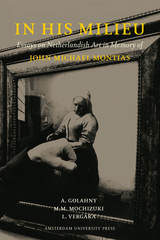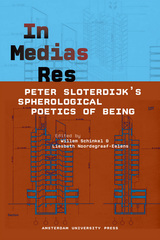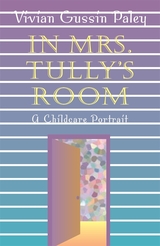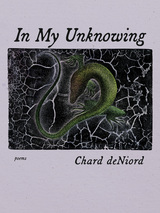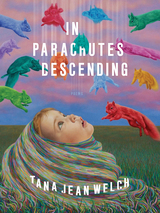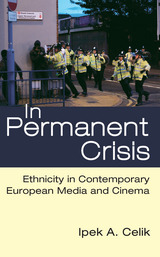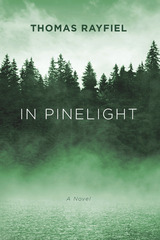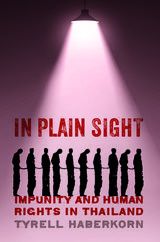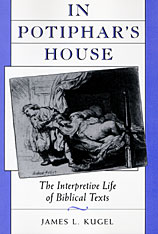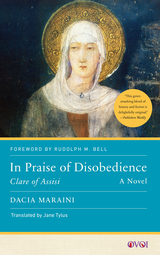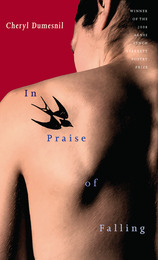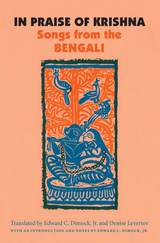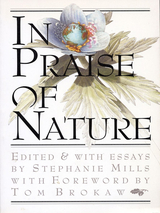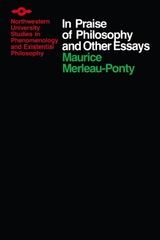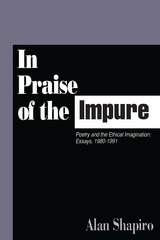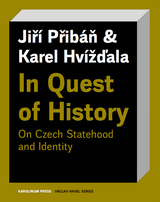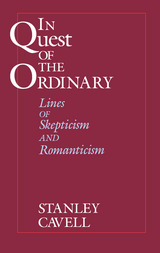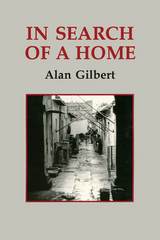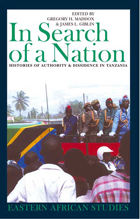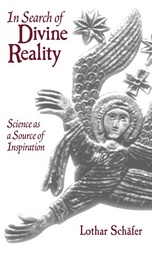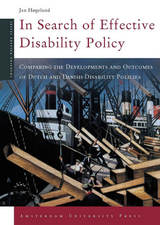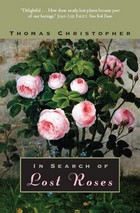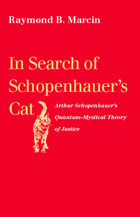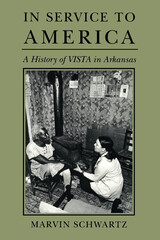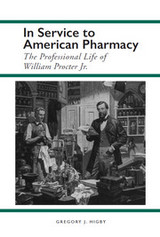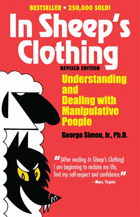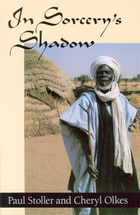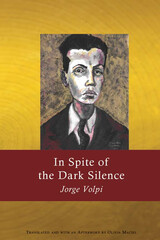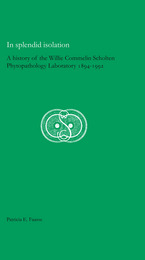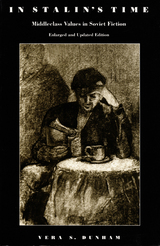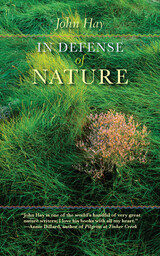 In Defense of Nature
John Hay
University of Iowa Press, 1969 Frequently compared to Edward Abbey, Wendell Berry, and Gary Snyder, John Hay is one of this country’s greatest nature writers. Originally published in 1969, In Defense of Nature is an eloquent and prescient plea on behalf of the natural world. Devoid of sentimentality yet lyrical and deeply moving in its portrayals of our despoliation of nature, Hay’s classic work is now available to a new generation of readers.
Wendell Berry has called John Hay a “carrier of light and wisdom.” In Defense of Nature reveals why this is true. In it Hay has written an extended meditation on the environment and our place in it. Its lessons never more important, In Defense of Nature eerily presages the tenuous state of our environment and our place in it. As our technical abilities have moved forward, our judgment has not kept pace. “What we call natural resources cannot be limited to gas, oil, pulpwood, or uranium,we are starving the natural resources in ourselves. The soul needs to stretch; being needs to exercise.”
 In Defense of Negativity: Attack Ads in Presidential Campaigns
John G. Geer
University of Chicago Press, 2006 Americans tend to see negative campaign ads as just that: negative. Pundits, journalists, voters, and scholars frequently complain that such ads undermine elections and even democratic government itself. But John G. Geer here takes the opposite stance, arguing that when political candidates attack each other, raising doubts about each other’s views and qualifications, voters—and the democratic process—benefit.
In Defense of Negativity, Geer’s study of negative advertising in presidential campaigns from 1960 to 2004, asserts that the proliferating attack ads are far more likely than positive ads to focus on salient political issues, rather than politicians’ personal characteristics. Accordingly, the ads enrich the democratic process, providing voters with relevant and substantial information before they head to the polls.
An important and timely contribution to American political discourse, In Defense of Negativity concludes that if we want campaigns to grapple with relevant issues and address real problems, negative ads just might be the solution.
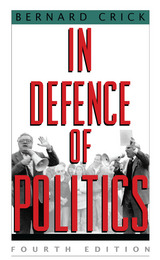 In Defense of Politics
Bernard Crick
University of Chicago Press, 1993 In this illuminating celebration of the political world, Bernard Crick asserts that politics, with
its compromises and power struggles, remains the only tested alternative to government by
coercion, making both freedom and order possible in heterogeneous societies. For Crick,
politics is messy and complex, and his book defends it against those who would identify it with (and reduce it to) ideology, democracy, nationalism, or technology.
This Fourth edition has been updated to include an assessment of the revolutions in 1989 in
Eastern Europe. It also examines current situations in Northern Ireland, Israel and Palestine,
and South Africa.
“A short book written with verve and brilliance. . . . He has written an exceedingly clever and
disturbing book on important issues, all that he writes is alive and much of what he says, even when it seems perversely provocative, turns out to be penetrating and serious.”
—Isaiah Berlin, 20th Century
“One of the most thoughtful products of the political dialogues of the London School of
Economics since the great days of Tawney, Dalton, Wallas and Hobhouse. Its sobriety,
liberal spirit and toughness of mind are rare qualities in any political work.”
—Edward Shils, Guardian
 In Defense of Politics in Public Administration: A Value Pluralist Perspective
Michael W. Spicer
University of Alabama Press, 2009 Where values collide, politics guides the way.
Scholars of public administration have historically too often been disdainful towards politics in the field, viewing political activities and interests as opportunities for corruption, mismanagement, and skewed priorities. Supporters of this anti-political stance have become even more strident in recent years, many of them advancing scientific models for the study and practice of public administration and governance. Michael Spicer argues that politics deserves to be defended as a vital facet of public administration on the grounds that it can promote moral conduct in government and in public administration, principally by bringing to the foreground the role of values in administrative practice. Politics can facilitate the resolution of conflicts that naturally arise from competing values, or conceptions of the good, while minimizing the use of force or violence. Drawing on the writings of Isaiah Berlin, Bernard Crick, and Stuart Hampshire, In Defense of Politics in Public Administration argues that value conflict is an integral part of our moral experience, both in making our own moral choices and in dealing with those whose values conflict with our own. This book is a spirited declaration of principles and a timely contribution to a dialogue that is redefining public administration, both in theory and in practice.
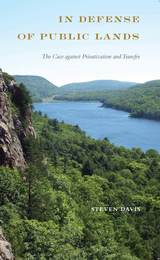 In Defense of Public Lands: The Case against Privatization and Transfer
Steven Davis
Temple University Press, 2018 Debates continue to rage over the merits or flaws of public land and whether or not it should be privatized—or at least, radically reconfigured in some way. In Defense of Public Lands offers a comprehensive refutation of the market-oriented arguments. Steven Davis passionately advocates that public land ought to remain firmly in the public’s hands. He reviews empirical data and theoretical arguments from biological, economic, and political perspectives in order to build a case for why our public lands are an invaluable and irreplaceable asset for the American people. In Defense of Public Lands briefly lays out the history and characteristics of public lands at the local, state, and federal levels while examining the numerous policy prescriptions for their privatization or, in the case of federal lands, transfer. He considers the dimensions of environmental health; markets and valuation of public land, the tensions between collective values and individual preferences, the nature and performance of bureaucratic management, and the legitimacy of interest groups and community decision-making. Offering a fair, good faith overview of the privatizers’ best arguments before refuting them, this timely book contemplates both the immediate and long-term future of our public lands.
 In Defense of Reason: Three Classics of Contemporary Criticism
Yvor Winters
Ohio University Press, 1947 Yvor Winters has here collected, with an introduction, the major critical works—Primitivism and Decadence, Maule’s Curse, and The Anatomy of Nonsense—of the period in which he worked out his famous and influential critical position. The works together show an integrated position which illuminates the force and importance of the individual essays. With The Function of Criticism, a subsequent collection, In Defense of Reason provides an incomparable body of critical writing.
The noted critic bases his analysis upon a belief in the existence of absolute truths and values, in the ethical judgment of literature, and in an insistence that it is the duty of the writer—as it is of very man—to approximate these truths insofar as human fallibility permits. His argument is by theory, but also by definite example—the technique of the “whole critic” who effectively combines close study of specific literary works and a penetrating investigation of aesthetic philosophies.
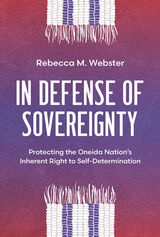 In Defense of Sovereignty: Protecting the Oneida Nation's Inherent Right to Self-Determination
Rebecca M. Webster
University of Wisconsin Press, 2023 In Defense of Sovereignty recounts the history of the Oneida Nation and its struggles for self-determination. Since the nation’s removal from New York in the 1820s to what would become the state of Wisconsin, it has been engaged in legal conflicts with US actors to retain its sovereignty and its lands. Legal scholar and former Oneida Nation senior staff attorney Rebecca M. Webster traces this history, including the nation’s treaties with the US but focusing especially on its relationship with the village of Hobart, Wisconsin. Since 2003 there have been six disputes that have led to litigation between the local government and the nation. Central to these disputes are the local government’s attempts to regulate the nation and relegate its government to the position of a common landowner, subject to municipal authority.
As in so many conflicts between Indigenous nations and local municipalities, the media narrative about the Oneida Nation’s battle for sovereignty has been dominated by the local government’s standpoint. In Defense of Sovereignty offers another perspective, that of a nation citizen directly involved in the litigation, augmented by contributions from historians, attorneys, and a retired nation employee. It makes an important contribution to public debates about the inherent right of Indigenous nations to continue to exist and exercise self-governance within their territories without being challenged at every turn.
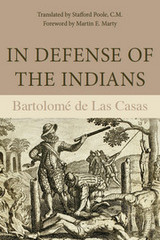 In Defense of the Indians
Bartolomé de Las Casas
Northern Illinois University Press, 1992
Bartolomé de Las Casas championed the rights of the Indians of Mexico and Central America, disputing a widely held belief that they were "beasts" to be enslaved. In a dramatic debate in 1550 with Juan Ginés de Sepúlveda, Las Casas argued vehemently before a royal commission in Valladolid that the native inhabitants should be viewed as fellow human beings, artistically and mechanically adroit, and capable of learning when properly taught.
In Defense of the Indians, Las Casas's classic treatise on the humanity of native peoples, had far-reaching implications for the policies adopted by both the Spanish Crown and the Church toward slavery in the New World. This carefully reasoned but emotionally charged defense addresses issues such as the concept of a just war, the relationships between differing races and cultures, the concept of colonialism, and the problem of racism. Written toward the end of an active career as "Protector of the Indians," the work stands as a summary of the teaching of Las Casas's life.
Available in its entirety for the first time in paperback, with a new foreword by Martin E. Marty, In Defense of the Indians has proved to be an enduring work that speaks with relevance in the twentieth-first century. Skillfully translated from Latin by the Reverend Stafford Poole, it is an eloquent plea for human freedom that will appeal to scholars interested in the founding of the Americas and the development of the New World.
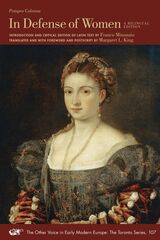 In Defense of Women: A Bilingual Edition
Pompeo Colonna
Iter Press, 2024 An important contribution to early public debates on the nature of women written by a cardinal in the Roman Catholic Church.
Pompeo Colonna’s In Defense of Women (1530), presented in this volume in Latin and English translation, is one of several important defenses of women composed in the fifteenth and sixteenth centuries by male advocates of women’s moral and intellectual worth. Known as a cardinal and a warrior, but also as an active participant in sixteenth-century Italian literary circles, Colonna addresses the work to his cousin Vittoria Colonna, the most renowned Italian woman poet of the era, who, he writes, had urged him to undertake it. His Defense not only refutes arguments of women’s inferiority and incapacity but, remarkably, asserts their ability to hold political office and govern. It contains original Latin text and a critical introduction by Franco Minonzio. It also features a foreword by Margaret L. King, as well as a postscript by King, tracing the separate male-authored and female-authored Renaissance defenses of women.
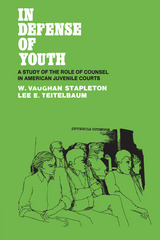 In Defense of Youth: A Study of the Role of Counsel in American Juvenile Courts
William Vaughn Stapleton
Russell Sage Foundation, 1972 In recent years the decisions of the United States Supreme Court in the area of juvenile law and the growing public awareness of the delinquency problem have brought about drastic changes in American juvenile courts. This book represents a major research effort to determine the effect of defense counsel's performance on the conduct and outcome of delinquency cases. After a brief historical analysis of the factors leading to changes in juvenile law, the authors explore in detail the impact of the lawyer's presence and performance on the outcomes of cases in two juvenile courts. The analysis further explores the various factors influencing a lawyer's defense posture and develops the thesis that the effectiveness of counsel is determined largely by the structure of the delinquency hearing and the willingness and ability of court personnel and procedures to adapt to the introduction of an adversarial role of defense counsel. What makes this study unique is the large-scale effort to combine legal analysis and sociological methodology to the study of an action-oriented program. The use of the classical experimental design, the selection of control and experimental groups by random assignment, and the extent to which the use of this methodology increases the validity of the results, will be of interest to both lawyers and social scientists. The book is a major contribution to the growing literature in the field of the sociology of law.
In Dialogue with the Other Voice in Sixteenth-century Italy: Literary and Social Contexts for Women's Writing
Edited by Julie D. Campbell and Maria Galli Stampino
Iter Press, 2011 This excellent collection of essays and texts surveys the culture and intellectual context of early modern Italy in order to render more intelligible the writing of Italian women. The role of women in society and the persistent misogyny even of the most pro-woman texts are explored in the essays, and the recent critical debates are examined. The translations make available in English a selection of male-authored texts which directly or indirectly elicited the spirited responses of women, for which the volume is aptly entitled “In Dialogue.” A valuable classroom resource, the volume is an important addition to The Other Voice: Toronto series.
—Elissa Weaver
Professor of Italian, Emerita, University of Chicago
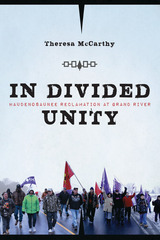 In Divided Unity: Haudenosaunee Reclamation at Grand River
Theresa McCarthy
University of Arizona Press, 2016 Winner of the Best First Book in Native American and Indigenous Studies Prize
In February 2006, the Six Nations occupation of a 132-acre construction site in Caledonia, Ontario, reignited a 200-year-long struggle to reclaim land and rights in the Grand River region. Framed by this ongoing reclamation, In Divided Unity explores community-based initiatives that promote Haudenosaunee traditionalism and languages at Six Nations of the Grand River as crucial enactments of sovereignty both historically and in the present.
Drawing from Haudenosaunee oral traditions, languages, and community-based theorists, In Divided Unity engages the intersecting themes of knowledge production and resistance against the backdrop of the complicated dynamics of the Six Nations community, which has the largest population of all First Nations in Canada. Comprising the Mohawk, Oneida, Onondaga, Cayuga, Seneca, and Tuscarora nations, citizens of the Six Nations Confederacy collectively refer to themselves as Haudenosaunee, which means “we build the house.”
Theresa McCarthy critiques settler colonial narratives of Haudenosaunee decline used to rationalize land theft and political subjugation. In particular, McCarthy illustrates that current efforts to discredit the reclamation continue to draw on the flawed characterizations of Haudenosaunee tradition, factionalism, and “failed” self-government popularized by conventional scholarship about the Iroquois. Countering these narratives of decline and failure, McCarthy argues that the 2006 reclamation ushered in an era of profound intellectual and political resurgence at Six Nations, propelled by the contributions of Haudenosaunee women.
Centering Haudenosaunee intellectual traditions, In Divided Unity provides an important new model for community-based activism and scholarship. Through the active practice and adaptation of ancient teachings and philosophies, McCarthy shows that the Grand River Haudenosaunee are continuing to successfully meet the challenges of reclaiming their land, political autonomy, and control of their future.
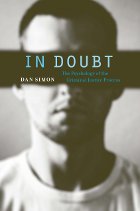 In Doubt: The Psychology of the Criminal Justice Process
Dan Simon
Harvard University Press, 2012 The criminal justice process is unavoidably human. Police detectives, witnesses, suspects, and victims shape the course of investigations, while prosecutors, defense attorneys, jurors, and judges affect the outcome of adjudication. In this sweeping review of psychological research, Dan Simon shows how flawed investigations can produce erroneous evidence and why well-meaning juries send innocent people to prison and set the guilty free.
The investigator’s task is genuinely difficult and prone to bias. This often leads investigators to draw faulty conclusions, assess suspects’ truthfulness incorrectly, and conduct coercive interrogations that can lead to false confessions. Eyewitnesses’ identification of perpetrators and detailed recollections of criminal events rely on cognitive processes that are often mistaken and can easily be skewed by the investigative procedures used. In the courtroom, jurors and judges are ill-equipped to assess the accuracy of testimony, especially in the face of the heavy-handed rhetoric and strong emotions that crimes arouse.
Simon offers an array of feasible ways to improve the accuracy of criminal investigations and trials. While the limitations of human cognition will always be an obstacle, these reforms can enhance the criminal justice system’s ability to decide correctly whom to release and whom to punish.
 In Dylan Town: A Fan's Life
David Gaines
University of Iowa Press, 2015 For fifty years, the music, words, story, and fans of Bob Dylan have fascinated David Gaines. As a son, a husband, a father, a teacher, and a passionate lover of the literary in all its guises, he has pursued the poetic fusion of knowledge and emotion all his life. More often than not, Dylan’s lyrics and music have expressed that fusion for him, and so he has encouraged others to acknowledge the musician or writer or painter or director or actor or athlete who matters deeply (perhaps a bit mysteriously) to them, and to deploy that enigmatic passion in service of self-knowledge and social connection. After all, one of the central reasons to be a fan is to compare notes, explore mysteries, and riff with fellow fans in a community of exploration.
Gaines’s personal journey toward creating such communities of passionate knowledge encompasses his own coming of age and marriages, fatherhood, and teaching. As a devoted fan who is also a professor of American literature, questions about teaching and learning are central to his experience. When asked, “Why Dylan?” he says, “He’s the writer I care about the most. He’s been the way into the best and longest running conversations I have ever had.” Talking with students, exchanging Dylan trivia with fellow fans, or cheering on fan-musicians doing Dylan covers during the Dylan Days festival, Gaines shows that, for many people, being a fan of popular culture couples serious critical and creative engagement with heartfelt commitment. Here, largely unheralded, the ideal of liberal education is realized every day.
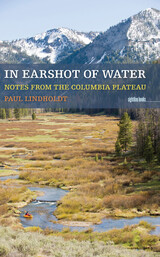 In Earshot of Water: Notes from the Columbia Plateau
Paul Lindholdt
University of Iowa Press, 2011 p.MsoNormal, li.MsoNormal, div.MsoNormal { margin: 0in 0in 0.0001pt; font-size: 12pt; font-family: "Times New Roman"; }div.Section1 { page: Section1; } Whether the subject is the plants that grow there, the animals that live there, the rivers that run there, or the people he has known there, Paul Lindholdt’s In Earshot of Water illuminates the Pacific Northwest in vivid detail. Lindholdt writes with the precision of a naturalist, the critical eye of an ecologist, the affection of an apologist, and the self-revelation and self-awareness of a personal essayist in the manner of Annie Dillard, Loren Eiseley, Derrick Jensen, John McPhee, Robert Michael Pyle, and Kathleen Dean Moore. Exploring both the literal and literary sense of place, with particular emphasis on environmental issues and politics in the far Northwest, Lindholdt weds passages from the journals of Lewis and Clark, the log of Captain James Cook, the novelized memoir of Theodore Winthrop, and Bureau of Reclamation records growing from the paintings that the agency commissioned to publicize its dams in the 1960s and 1970s, to tell ecological and personal histories of the region he knows and loves. In Lindholdt’s beautiful prose, America’s environmental legacies—those inherited from his blood relatives as well as those from the influences of mass culture—and illuminations of the hazards of neglecting nature’s warning signs blur and merge and reemerge in new forms. Themes of fathers and sons layer the book, as well—the narrator as father and as son—interwoven with a call to responsible social activism with appeals to reason and emotion. Like water itself, In Earshot of Water cascades across boundaries and blends genres, at once learned and literary.
 In Envy Country: Stories
Joan Frank
University of Notre Dame Press, 2010
Set in Paris, California, Italy, and Spain, Joan Frank's second story collection explores the uncertainties and triumphs of women and men in and out of love and marriage, at varying ages and stages of contemporary American life. By turns wry, pained, and amused, In Envy Countryinvestigates those small, complex truths that gain clarity with time and distance.
"Joan Frank shows us ourselves. . . . Meticulously observed, with sentences that will make you stop and go back for another look." --Ehud Havazelet, author of Bearing the Body and Like Never Before
"These stories each have a wonderful, intimate feel. . . . Written with authority and intelligence, they are layered and subtle . . . serious, and yet take us back to the sense of discovery; reading them is fun." --Elizabeth Strout, author of Olive Kitteridge and Abide with Me
"Nothing escaps Joan Frank; her stories of not-so-innocent bystanders gleam with subtlety, intelligence, and sly wit." --Brian Morton, author of Breakable You and Starting Out in the Evening
"A worldly collection in all the best ways; a writer of unusual wit, sophistication, and psychological insight; reading these pages is a pleasure." --Margot Livesey, author of The House on Fortune Street
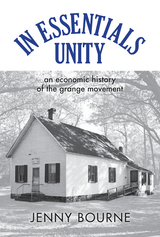 In Essentials, Unity: An Economic History of the Grange Movement
Jenny Bourne
Ohio University Press, 2017 The Patrons of Husbandry—or the Grange—is the longest-lived US agricultural society and, since its founding shortly after the Civil War, has had immeasurable influence on social change as enacted by ordinary Americans. The Grange sought to relieve the struggles of small farmers by encouraging collaboration. Pathbreaking for its inclusion of women, the Grange is also well known for its association with Gilded Age laws aimed at curbing the monopoly power of railroads. In Essentials, Unity takes as its focus Grange founder Oliver Kelley and his home organization in Minnesota. Jenny Bourne draws upon numerous historical records to present a lively picture of a fraternal organization devoted to improving the lot of farmers but whose legacies extend far beyond agriculture. From struggles over minimum wage, birth control, and environmental regulation to the conflicts surrounding the Affordable Care Act, and from lunch-counter sit-ins to Occupy Wall Street, the Grange has shaped the very notion of collective action and how it is deployed even today. As this compact book so effectively illustrates, the history of the Patrons of Husbandry exposes the classic tension between the desires for achieving overall economic success and determining how the spoils are split.
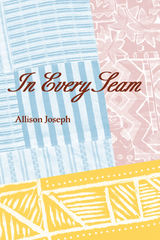 In Every Seam
Allison Joseph
University of Pittsburgh Press, 2020 Joseph presents the events of daily life both plainly and transcendently, as if to summon up the entire cultural setting in which they take place. . . . The triumphant final poem, 'Plenty' is an implied rebuke to any possible misreading of her poems as limited to a poetics of identity, or rooted in the deprivations of history rather than the plenty and richness of her experience, the will and ingenuity of her imagination and her strong poetic gift." --Women's Review of Books
"These poems point to the strong materials needed to make ourselves whole in the modern world. They alert us to the seams we must tug at to see into ourselves." --Yusef Komunyakaa
Allison Joseph is the author of three books and her honors include the 1992 Women Poets Series Competition Award, the 1992 John C. Zacharis First Book Prize, an Illinois Arts Council Fellowship in Poetry for 1996, and a 1997 Literary Award from the Illinois Arts Council. She is Associate Professor of creative writing and poetry at Southern Illinois University at Carbondale.
In Evidence: Poems of the Liberation of Nazi Concentration Camps
Barbara Helfgott Hyett
University of Pittsburgh Press, 2024 In Evidence is a collection of poems in the voices of allied troops who liberated Nazi concentration camps in Europe in the sprong of 1945. Barbara Helfgott Hyett heard poems in the eyewitness testimony of United States soldiers. She has shaped the words of thirty speakers into a songle narrative, a single voice.
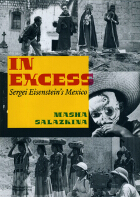 In Excess: Sergei Eisenstein's Mexico
Masha Salazkina
University of Chicago Press, 2009 During the 1920s and ’30s, Mexico attracted an international roster of artists and intellectuals—including Orson Welles, Katherine Anne Porter, and Leon Trotsky—who were drawn to the heady tumult engendered by battling cultural ideologies in an emerging center for the avant-garde. Against the backdrop of this cosmopolitan milieu, In Excess reconstructs the years that the renowned Soviet director Sergei Eisenstein spent in the country to work on his controversial film ¡Que Viva Mexico! Illuminating the inextricability of Eisenstein’s oeuvre from the global cultures of modernity and film, Masha Salazkina situates this unfinished project within the twin contexts of postrevolutionary Mexico and the ideas of such contemporaneous thinkers as Walter Benjamin. In doing so, Salazkina explains how Eisenstein’s engagement with Mexican mythology, politics, and art deeply influenced his ideas, particularly about sexuality. She also uncovers the role Eisenstein’s bisexuality played in his creative thinking and identifies his use of the baroque as an important turn toward excess and hybrid forms. Beautifully illustrated with rare photographs, In Excess provides the most complete genealogy available of major shifts in this modern master’s theories and aesthetics.
 In Face of Mystery: A Constructive Theology
Gordon D. Kaufman
Harvard University Press, 1993 In the symbolic world of Christianity, which millions have inhabited for centuries, is there room for modern and postmodern life—for today’s real world of cultural relativism and religious pluralism, of scientific knowledge and historical understanding? In Face of Mystery draws these two worlds together in a full-scale reconception of Christian theology.
Theology, Gordon Kaufman suggests, is an imaginative construction, the creation of a symbolic world for ordering life. As it has been constructed, so it can be reconstructed, and Kaufman does so in a way that clarifies both the historic roots and the present-day applications of Christian symbolism. He works with a “biohistorical” interpretation of human life, one that portrays humanity as a product of biological evolution and historical development. While taking account of cultural and religious pluralism, and while providing criteria for making comparative assessments and judgments, this interpretation of human historical existence also situates human beings—with their capacities for freedom and creativity—within the ecological wed that sustains all life. Human beings, Kaufman argues, have created religious symbolism as a necessary part of their attempt to orient themselves in the world. He shows how Christianity, as a system of symbols, has figured in this effort, and he carefully examines the separate elements of the Christian perspective—foremost among them, God. How does the concept of God, as an ultimate point of reference, enhance our understanding of today’s world; and how does the symbol “Christ” qualify this concept? The answers Kaufman proposes clarify the changing relevance of the symbolic world of Christianity.
Firmly embedded in physical and social science and in the tradition of American pragmatism, this thorough reconception of a Christian worldview offers insight into the most basic questions confronting humanity today—questions of value, meaning, and self-identity.
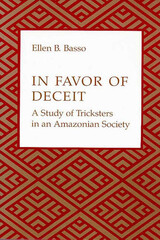 In Favor of Deceit: A Study of Tricksters in an Amazonian Society
Ellen B. Basso
University of Arizona Press, 1988 In stories ranging from subtle creation myths to derisive, off-color tales, the Kalapalo Indians of central Brazil demonstrate a fascination with deception and its many functions. In myths about tricksters and dupes, they explore the ambiguity of human experience, showing how important to human understanding is a sense of illusion, paradox, and contradiction.
Ellen Basso's new study of these stories considers their relationship to other kinds of Kalapalo activities involving deception and features a unique collection of South American Indian narratives translated directly from performances by master storytellers in their original Carib language. Combining an ethnopoetic, performance-focused approach to storytelling with an action-oriented psychology, Basso arrives at an ethnographic understanding of Kalapalo trickster myths and Kalapalo ideas about deception.
The commentary on the translations considers matters of theme, discourse, narrative progression, and performance context. The dialogical, interactive nature of Kalapalo storytelling, the development of characters through their conversations with one another, and the many ways storytelling and ordinary life enrich one another are examined to reveal the complex psychology of trickster myths and the special tricksterish quality of day-to-day Kalapalo behavior.
in field latin
Lutz Seiler
Seagull Books, 2016 Lutz Seiler grew up in the former East Germany and has lived most of his life outside Berlin. His poems, not surprisingly, are works of the border, the in-between, and the provincial, marked by whispers, weather, time’s relentless passing, the dead and their ghosts. It is a contemporary poetry of landscape, fully aware of its literary and non-literary forebears, a walker’s view of the place Seiler lives, anchored by close, unhurried attention to particulars. With his precise, memorable language—rendered here in compelling English—Seiler has pulled off a difficult feat: recontextualizing and radically personalizing the long tradition of German nature writing for the twenty-first century.
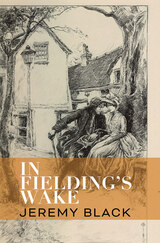 In Fielding’s Wake
Jeremy Black
St. Augustine's Press, 2022 In the second volume of The Weight of Words Series, Jeremy Black continues his efforts to present and preserve Britain's literary genius. Its intelligence and enduring influence is in large part reliant on the underlining conservatism that has motivated authors such as Agatha Christie (Black's earlier subject) and Henry Fielding alike.
Fielding's epic comic novel, Tom Jones, is unforgettable for many reasons, but the author must be credited with an aptitude for documenting contemporary cultural history and his contribution to a new species of writing. Black's treatment of Fielding draws to the fore a man who was of his time but not confined to it. "Philosophy in practice encompassed his stance as a man of action as well as a reflective writer of genius." Fielding is shown to provide across the breadth of his work extensive and invaluable commentary on issues as diverse as law and order, marriage, women, and the interplay of urban and rural life. Black, an historian, is here a student of storytelling and recovers Fielding's rich descriptions of the human heart and call to defy the vices with which circumstances might taunt it.
Black has done a service along many fronts at once: the science of the novel and genre, the history of a people and the figure of a memorable writer.
 In for the Long Haul: The Life of John Ruan
William B. Friedricks
University of Iowa Press, 2003 Driven by grit and determination during the Depression, John Ruan parlayed a one-truck business into Ruan Transportation Management Systems, one of the nation’s leading trucking, leasing, and logistics companies. The trucking business made John Ruan one of the wealthiest and most influential people in Iowa and was the foundation for his vast fortune which included interests in insurance, banking, financial services, international trade, and real estate. In the 1970s and 80s, Ruan led Des Moines’s renaissance with the construction of the 36-story original Ruan Center, the Marriott Hotel tower, and the Two Ruan Center office complex. But his contributions reached far beyond the confines of Iowa. As a philanthropist, Ruan was a long-time sponsor of the World Food Prize, which recognizes the importance of a nutritious and sustainable food supply for all people. Based on extensive interviews with Ruan, family members, business associates, friends, and colleagues, as well as privately held papers and archives, In for the Long Haul presents a discerning portrait of this hard-charging yet compassionate businessman.
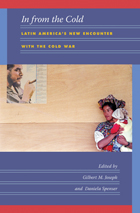 In from the Cold: Latin America’s New Encounter with the Cold War
Gilbert M. Joseph and Daniela Spenser, eds.
Duke University Press, 2008 Over the last decade, studies of the Cold War have mushroomed globally. Unfortunately, work on Latin America has not been well represented in either theoretical or empirical discussions of the broader conflict. With some notable exceptions, studies have proceeded in rather conventional channels, focusing on U.S. policy objectives and high-profile leaders (Fidel Castro) and events (the Cuban Missile Crisis) and drawing largely on U.S. government sources. Moreover, only rarely have U.S. foreign relations scholars engaged productively with Latin American historians who analyze how the international conflict transformed the region's political, social, and cultural life. Representing a collaboration among eleven North American, Latin American, and European historians, anthropologists, and political scientists, this volume attempts to facilitate such a cross-fertilization. In the process, In From the Cold shifts the focus of attention away from the bipolar conflict, the preoccupation of much of the so-called "new Cold War history," in order to showcase research, discussion, and an array of new archival and oral sources centering on the grassroots, where conflicts actually brewed. The collection's contributors examine international and everyday contests over political power and cultural representation, focusing on communities and groups above and underground, on state houses and diplomatic board rooms manned by Latin American and international governing elites, on the relations among states regionally, and, less frequently, on the dynamics between the two great superpowers themselves. In addition to charting new directions for research on the Latin American Cold War, In From the Cold seeks to contribute more generally to an understanding of the conflict in the global south. Contributors. Ariel C. Armony, Steven J. Bachelor, Thomas S. Blanton, Seth Fein, Piero Gleijeses, Gilbert M. Joseph, Victoria Langland, Carlota McAllister, Stephen Pitti, Daniela Spenser, Eric Zolov
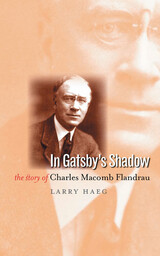 In Gatsby's Shadow: The Story of Charles Macomb Flandrau
Larry Haeg
University of Iowa Press, 2004 In the closing decades of the nineteenth century Minnesota produced three young men of great talent who each went east to become writers. Two of them became famous: F. Scott Fitzgerald and Sinclair Lewis. This is the story of the third man: Charles Macomb Flandrau.
Flandrau, a model of style and worldly sophistication and destined, almost everyone agreed, for greatness, was among the most talented young writers of his generation. His short stories about Harvard in the 1890s were called “the first realistic description of undergraduate life in American colleges” and sold out of the first printing in a few weeks. From 1899 to 1902 Flandrau was among the most popular contributors to the Saturday Evening Post. Alexander Woollcott rated him the best essayist in America. And Viva Mexico!, Flandrau’s account of life on a Mexican coffee plantation, is a classic, perhaps the best travel book ever written by an American. Yet Flandrau turned his back on it all. Financially independent, he chose a solitary, epicurean life in St. Paul, Mexico, Majorca, Paris, and Normandy. In later years, he confined his writing to local newspaper pieces and letters to his small circle of family and friends.
Using excerpts from these newspaper columns and unpublished letters, Larry Haeg has painstakingly recreated the story of this urbane, talented, witty, lazy, enigmatic, supremely private man who never reached the peak of literary success to which his talent might have taken him.
This very readable biography provides a detailed and honest portrayal of Flandrau and his times. It will fascinate readers interested in writers’ life stories and scholars of American literature as well as general readers interested in midwestern literary history.
In Good Company: The Church as Polis
Stanley Hauerwas
University of Notre Dame Press, 1995 By exposing a different account of politics—the church as polis and "counterstory" to the world's politics—Stanley Hauerwas helps Christians to recognize the unifying beliefs and practices that make them a political entity apart from the rest of the world.
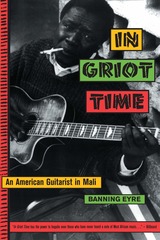 In Griot Time
Banning Eyre
Temple University Press, 2000 "Djelimady Tounkara has powerful hands. His muscled fingers and palms seem almost brutish to the eye, but when he grasps the neck of the guitar and brushes the nail of his right index finger across the strings, the sound lifts effortlessly, like dust in a wind. In Bamako, Mali, where musicians struggle, Djelimady is a big man, and all of his family's good fortunes flow from those hands."
Djelimady Tounkara is only one of the memorable people you will meet in this dramatic narrative of life among the griot musicians of Mali. Born into families where music and the tradition of griot story-telling is a heritage and a privilege, Djelimady and his fellow griots -- both men and women -- live their lives at the intersection of ancient traditions and the modern entertainment industry. During the seven months he spent living and studying with Djelimady, Banning Eyre immersed himself in a world that will fascinate you as it did him.
Eyre creates a range of unforgettable portraits. Some of the people who stride through his pages are internationally known, musicians like Salif Keita, Oumou Sangare, and Grammy winner Ali Farka Toure. But the lesser-known characters are equally fascinating: Adama Kouyate, Djelimady's dynamic wife; Moussa Kouyate, the Tounkara family's own griot; Yayi Kanoute, the flamboyant jelimuso (female griot) who failed to take America by storm; Foutanga Babani Sissoko, the mysterious millionaire who rebuilt an entire town and whose patronage is much sought after by the griots of Bamako.
But the picture Eyre draws is not just a series of portraits. Out of their interactions comes a perceptive panorama of life in Mali in the late twentieth century. The narrative gives us a street-level view of the transformation of musical taste and social customs, the impact of technology and the pressures of poverty, at a crucial time in Mali's history. In individual after individual, family after family, we see the subtle conflicts of heritage and change. Even the complications of democracy -- with democracy, mango vendors think they can charge anything they want, Djelimady points out -- are woven into an unforgettable saga of one man, his family, his profession, and the world of Malian music.
 In Harm’s Way: The Pornography Civil Rights Hearings
Catharine A. MacKinnon
Harvard University Press, 1997 This book contains the oral testimony of victims of pornography, spoken on the record for the first time in history.
Speaking at hearings on a groundbreaking antipornography civil rights law, women offer eloquent witness to the devastation pornography has caused in their lives. Supported by social science experts and authorities on rape, battery, and prostitution, discounted and opposed by free speech advocates and absolutists, their riveting testimony articulates the centrality of pornography to sexual abuse and inequity today.
At issue in these hearings is a law conceived and drafted by Andrea Dworkin and Catharine A. MacKinnon that defines harm done through pornography as a legal injury of sex discrimination warranting civil redress. From the first set of hearings in Minneapolis in 1983 through those before the Massachusetts state legislature in 1992, the witnesses heard here expose the commonplace reality of denigration and sexual subordination due to pornography and refute the widespread notion that pornography is harmless expression that must be protected by the state.
Introduced with powerful essays by MacKinnon and Dworkin, these hearings--unabridged and with each word scrupulously verified--constitute a unique record of a conflict over the meaning of democracy itself--a major civil rights struggle for our time and a fundamental crisis in United States constitutional law: Can we sacrifice the lives of women and children to a pornographer's right to free "speech"? Can we allow the First Amendment to shield sexual exploitation and predatory sexual violence? These pages contain all the arguments for protecting pornography--and dramatically document its human cost.
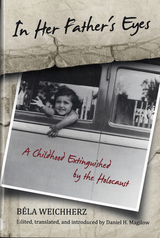 In Her Father's Eyes: A Childhood Extinguished by the Holocaust
Béla Weichherz, Edited by Daniel H. Magilow
Rutgers University Press, 2008 Translated from the German for the first time, In Her Father's Eyes is the diary of Béla Weichherz, in which he documents the life of his only daughter, Kitty, in prewar Czechoslovakia. Started as a baby book before her birth in 1929, the journal contains frequent entries about the ups and downs of Kitty's childhood, often written in vivid detail. Weichherz included photographs, developmental charts, and Kitty's own drawings to enhance the text. The journal entries stop in early spring 1942, just days before the family's deportation to a Nazi death camp. In its final pages, a recognizable tale of one anonymous life becomes a heartbreaking story about how anti-Semitism and nationalism in Slovakia shattered this normalcy. In Her Father's Eyes is a moving tale about Jewish life and a father's profound love for his only child. By bridging prewar and wartime periods, the diary also provides a rich context for understanding the history from which the Holocaust emerged.
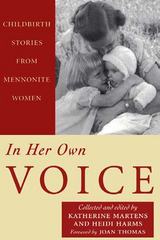 In Her Own Voice: Childbirth Stories from Mennonite Women
Katherine Martens
University of Manitoba Press, 1997 Winnipeg writer Katherine Martens interviewed 26 women from the Mennonite community in southern Manitoba, ranging in age from 22 to 88 years old. They had many different backgrounds, but they all had one important characteristic: all were mothers.In the course of these interviews, Martens was searching for answers to questions that affected her both as a Mennonite and as a woman. How did they feel when they learned of the pregnancy? How did they choose home or hospital birth? How did the traditions of the Mennonite culture affect them as wives and mothers? As they talked, many spoke about the joys and trials of giving birth, and they also told Martens stories about other parts of their lives. Some had escaped the Russian Revolution to emigrate to Canada; others spent their entire lives in rural Manitoba, part of the close-knit Mennonite community, running farms and bearing as many as 15 children. Younger women who had formally left the Mennonite church were still conscious of the impact of the beliefs and customs on their lives.Many women were surprised to be approached for an interview, insisting that they had "no stories to tell." One was visited in a dream by her dead husband, who told her to "leave that alone." Yet, in the privacy of their kitchens and parlours, over sociable cups of tea, many did share with Martens their private fears and joys about what was often seen as a rite of passage into responsible adulthood, and they recalled that childbirth could be a difficult and, at times, traumatic event, but it could also be a radiant and spiritual experience.
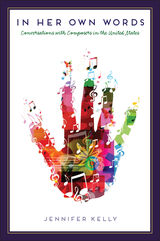 In Her Own Words: Conversations with Composers in the United States
Jennifer Kelly
University of Illinois Press, 2014 This collection of new interviews with twenty-five accomplished female composers substantially advances our knowledge of the work, experiences, compositional approaches, and musical intentions of a diverse group of creative individuals. With personal anecdotes and sometimes surprising intimacy and humor, these wide-ranging conversations represent the diversity of women composing music in the United States from the mid-twentieth century into the twenty-first. The composers work in a variety of genres including classical, jazz, multimedia, or collaborative forms for the stage, film, and video games. Their interviews illuminate questions about the status of women composers in America, the role of women in musical performance and education, the creative process and inspiration, the experiences and qualities that contemporary composers bring to their craft, and balancing creative and personal lives. Candidly sharing their experiences, advice, and views, these vibrant, thoughtful, and creative women open new perspectives on the prospects and possibilities of making music in a changing world.
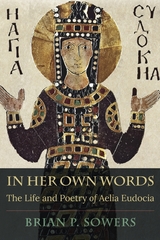 In Her Own Words: The Life and Poetry of Aelia Eudocia
Brian P. Sowers
Harvard University Press, 2019 In Her Own Words: The Life and Poetry of Aelia Eudocia is the first full-length study to examine Eudocia’s writings as a unified whole and to situate them within their wider fifth-century literary, social, and religious contexts. Responsible for over 3,000 lines of extant poetry, Eudocia is one of the best-preserved ancient female poets. Because she wrote in a literary mode frequently suppressed by proto-orthodox (male) leaders, much of her poetry does not survive, and what does survive remains understudied and underappreciated. This book represents a detailed investigation into Eudocia’s works: her epigraphic poem in honor of the therapeutic bath at Hammat Gader, her Homeric cento—a poetic paraphrase of the Bible using lines from Homer—and her epic on the fictional magician-turned-Christian, Cyprian of Antioch.
Reading her poetry as a whole and in context, Eudocia emerges as an exceptional author representing three unique late-antique communities: poets interested in preserving and transforming classical literature; Christians whose religious views positioned them outside and against traditional power structures; and women who challenged social, religious, and literary boundaries.
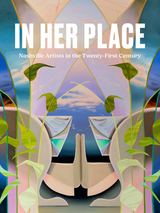 In Her Place: Nashville Artists in the Twenty-First Century
Kathryn E. Delmez
Vanderbilt University Press, 2025 In Her Place charts a network of artists working at a high caliber with deceptively specific criteria—they are all women, and they all work in Nashville, Tennessee. The plurality of styles, subjects, and media they choose to work in is so diverse that grouping them together proves that, if anything, there are as many differences among these artists as there are similarities.
But isn’t that what it is to be Southern? Hasn’t life in the American South been a quagmire of contradictions from the very start?
The South has always been defined as much by what it isn’t as what it is, in much the same way that women have been defined by how they are not like men. The standard for an American artist—and perhaps for a person in general—seems to be a white, straight, cisgender man of vaguely Northern residence. Anything that deviates from that criteria needs to be justified, pointed out, turned into something exceptional in order to simply be visible. It is refreshing, then, that this exhibition does not wallow in the stagnant waters of Southern stereotypes. The artists of In Her Place are legion. They include a Tehran-born sculptor making vessels out of Tennessee red clay, an artist from Arkansas working with cardboard and references to unsettling histories, and a Nashville-born painter whose images of civil rights–era sit-ins read just as poignantly in 2026 as they would have in 1960.
If anything ties these artists together, it is not their gender or their location. It is their shared ingenuity and the comfort with which they subvert.
In His Milieu: Essays on Netherlandish Art in Memory of John Michael Montias
Edited by Amy Golahny, Mia Mochizuki, and Lisa Vergara
Amsterdam University Press, 2007 Gathered in honor of John Michael Montias (1928–2005), the foremost scholar on Johannes Vermeer and a pioneer in the study of the socioeconomic dimensions of art, the essays in In His Milieu are an essential contribution to the study of the social functions of making, collecting, displaying, and donating art. The nearly forty essays here by—all internationally recognized experts in the fields of art history and the economics of art—are especially revealing about the Renaissance and Baroque eras and present new material on such artists as Rembrandt, Van Eyck, Rubens, and da Vinci.
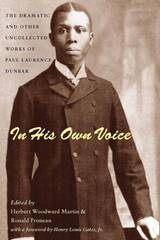 In His Own Voice: The Dramatic and Other Uncollected Works of Paul Laurence Dunbar
Paul Laurence Dunbar
Ohio University Press, 2002 Paul Laurence Dunbar, introduced to the American public by William Dean Howells, was the first native-born African American poet to achieve national and international fame. While there have been many valuable editions of his works over time, gaps have developed when manuscripts were lost or access to uncollected works became difficult. In His Own Voice brings together previously upublished and uncollected short stories, essays, and poems. This volume also establishes Dunbar’s reputation as a dramatist who mastered standard English conventions and used dialect in musical comedy for ironic effects. In His Own Voice collects more than seventy-five works in six genres. Featured are the previously unpublished play Herrick and two one-act plays, largely ignored for a century, that demonstrate Dunbar’s subversion of the minstrel tradition. This generous expansion of the canon also includes a short story never before published. Herbert Woodward Martin, renowned for his live portrayal of Dunbar, and Ronald Primeau provide a literary and historical context for this previously untreated material, firmly securing the reputation of an important American voice.
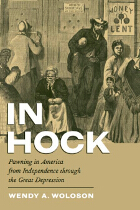 In Hock: Pawning in America from Independence through the Great Depression
Wendy A. Woloson
University of Chicago Press, 2009 The definitive history of pawnbroking in the United States from the nation’s founding through the Great Depression, In Hock demonstrates that the pawnshop was essential to the rise of capitalism. The class of working poor created by this economic tide could make ends meet only, Wendy Woloson argues, by regularly pawning household objects to supplement inadequate wages. Nonetheless, businessmen, reformers, and cultural critics claimed that pawnshops promoted vice, and employed anti-Semitic stereotypes to cast their proprietors as greedy and cold-hearted. Using personal correspondence, business records, and other rich archival sources to uncover the truth behind the rhetoric, Woloson brings to life a diverse cast of characters and shows that pawnbrokers were in fact shrewd businessmen, often from humble origins, who possessed sophisticated knowledge of a wide range of goods in various resale markets. A much-needed new look at a misunderstood institution, In Hock is both a first-rate academic study of a largely ignored facet of the capitalist economy and a resonant portrait of the economic struggles of generations of Americans.
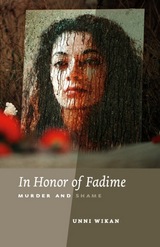 In Honor of Fadime: Murder and Shame
Unni Wikan
University of Chicago Press, 2008 In 2002 young Fadime Sahindal was brutally murdered by her own father. She belonged to a family of Kurdish immigrants who had lived in Sweden for almost two decades. But Fadime’s relationship with a man outside of their community had deeply dishonored her family, and only her death could remove the stain. This abhorrent crime shocked the world, and her name soon became a rallying cry in the struggle to combat so-called honor killings.
Unni Wikan narrates Fadime’s heartbreaking story through her own eloquent words, along with the testimonies of her father, mother, and two sisters. What unfolds is a tale of courage and betrayal, loyalty and love, power and humiliation, and a nearly unfathomable clash of cultures. Despite enduring years of threats over her emancipated life, Fadime advocated compassion for her killer to the end, believing him to be trapped by an unyielding code of honor. Wikan puts this shocking event in context by analyzing similar honor killings throughout Europe, Canada, and the United States. She also examines the concept of honor in historical and cross-cultural depth, concluding that Islam itself is not to blame—indeed, honor killings occur across religious and ethnic traditions—but rather the way that many cultures have resolutely linked honor with violence.
In Honor of Fadime holds profound and timely insights into conservative Kurdish culture, but ultimately the heart of this powerful book is Fadime’s courageous and tragic story—and Wikan’s telling of it is riveting.
 In Hush to Harbor: Black Sanctuary from Slavery to Trump's America
La-Toya L. Scott
Rutgers University Press, 2026 In Hush to Harbor: Black Sanctuary from Slavery to Trump’s America traces the enduring tradition of Black communities creating sanctuaries—spaces of safety, care, and resistance—from the hidden hush harbors of the slavery era to the digital havens of the present day. These sanctuaries, whether physical or virtual, have served as places to strategize, grieve, heal, and imagine new futures in the face of ongoing racial violence. Drawing on history, cultural analysis, and personal insight, this book reveals how these spaces have evolved in form but remained constant in purpose: to preserve Black life and dignity. It also confronts the heightened urgency of such sanctuaries during the Trump era, when state-sanctioned racism and emboldened white nationalism reshaped the landscape of resistance. In Hush to Harbor offers not just a chronicle of survival, but a blueprint for protecting and nurturing Black refuge in the twenty-first century and beyond.
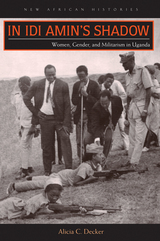 In Idi Amin’s Shadow: Women, Gender, and Militarism in Uganda
Alicia C. Decker
Ohio University Press, 2014 Finalist for the 2015 Aidoo-Snyder Prize In Idi Amin’s Shadow is a rich social history examining Ugandan women’s complex and sometimes paradoxical relationship to Amin’s military state. Based on more than one hundred interviews with women who survived the regime, as well as a wide range of primary sources, this book reveals how the violence of Amin’s militarism resulted in both opportunities and challenges for women. Some assumed positions of political power or became successful entrepreneurs, while others endured sexual assault or experienced the trauma of watching their brothers, husbands, or sons “disappeared” by the state’s security forces. In Idi Amin’s Shadow considers the crucial ways that gender informed and was informed by the ideology and practice of militarism in this period. By exploring this relationship, Alicia C. Decker offers a nuanced interpretation of Amin’s Uganda and the lives of the women who experienced and survived its violence.
Each chapter begins with the story of one woman whose experience illuminates some larger theme of the book. In this way, it becomes clear that the politics of military rule were highly relevant to women and gender relations, just as the politics of gender were central to militarism. By drawing upon critical security studies, feminist studies, and violence studies, Decker demonstrates that Amin’s dictatorship was far more complex and his rule much more strategic than most observers have ever imagined.
 In Isolation: Dispatches from Occupied Donbas
Stanislav Aseyev
Harvard University Press, 2022 In this exceptional collection of dispatches from occupied Donbas, writer and journalist Stanislav Aseyev details the internal and external changes observed in the cities of Makiïvka and Donetsk in eastern Ukraine. Aseyev scrutinizes his immediate environment and questions himself in an attempt to understand the reasons behind the success of Russian propaganda among the working-class residents of the industrial region of Donbas.
In this work of documentary prose, Aseyev focuses on the early period of the Russian-sponsored military aggression in Ukraine’s east, the period of 2015–2017. The author’s testimony ends with his arrest for publishing his dispatches and his subsequent imprisonment and torture in a modern-day concentration camp on the outskirts of Donetsk run by lawless mercenaries and local militants with the tacit approval and support of Moscow. For the first time, an inside account is presented here of the toll on real human lives and civic freedoms that the citizens of Europe’s largest country continue to suffer in Russia’s hybrid war on its territory.
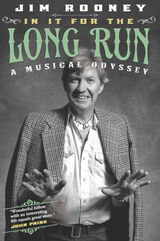 In It for the Long Run: A Musical Odyssey
Jim Rooney
University of Illinois Press, 2014 Inspired by the Hank Williams and Leadbelly recordings he heard as a teenager growing up outside of Boston, Jim Rooney began a musical journey that intersected with some of the biggest names in American music including Bob Dylan, James Taylor, Bill Monroe, Muddy Waters, and Alison Krauss. In It for the Long Run: A Musical Odyssey is Rooney's kaleidoscopic first-hand account of more than five decades of success as a performer, concert promoter, songwriter, music publisher, engineer, and record producer.
As witness to and participant in over a half century of music history, Rooney provides a sophisticated window into American vernacular music. Following his stint as a "Hayloft Jamboree" hillbilly singer in the mid-1950s, Rooney managed Cambridge's Club 47, a catalyst of the ‘60’s folk music boom. He soon moved to the Newport Folk Festival as talent coordinator and director where he had a front row seat to Dylan "going electric."
In the 1970s Rooney's odyssey continued in Nashville where he began engineering and producing records. His work helped alternative country music gain a foothold in Music City and culminated in Grammy nominations for singer-songwriters John Prine, Iris Dement, and Nanci Griffith. Later in his career he was a key link connecting Nashville to Ireland's folk music scene.
Writing songs or writing his memoir, Jim Rooney is the consummate storyteller. In It for the Long Run: A Musical Odyssey is his singular chronicle from the heart of Americana.
 In Julia's Kitchen: Practical and Convivial Kitchen Design Inspired by Julia Child
Pamela Heyne and Jim Scherer
University Press of New England, 2016 “Most architects I know don’t know anything about cooking, and their designs are not practical for cooks!” Julia Child wrote to architect Pamela Heyne. Indeed, our contemporary kitchens are showplaces with islands, hidden appliances, and cold stone surfaces. They resemble laboratories more than the heart of the home, and they are neither cook friendly nor family friendly. American culinary icon Julia Child embraced the significance of the family meal and was devoted to sharing delicious food with friends and family at the comfortable dining table in her kitchen, a place where conversation was as important as cuisine. Pamela Heyne and Julia’s long-time food photographer Jim Scherer collaborate to share Julia’s kitchen design and lifestyle concepts in this book, which examines the kitchens in her Cambridge, Massachusetts, home; at la Pitchoune, the Childs’ French vacation retreat; and in her television studio. The authors reveal which materials, layouts, and equipment Julia preferred and why, providing practical advice interspersed with Julia’s inimitable, wry humor. They bring Julia’s wisdom into the contemporary kitchen, exploring current trends, including modern green sensibilities, and varied styles of kitchens, featuring architectural designs by Heyne, Jacques Pepin’s kitchen, a renovation Julia Child consulted on for PBS’s This Old House, several celebrity home kitchens, and more.
In Kind
Maggie Queeney
University of Iowa Press, 2023 Part wunderkammer, part grimoire, Maggie Queeney’s In Kind is focused on survival. A chorus of personae, speaking into and through a variety of poetic forms, guide the reader through the aftermath of generations of domestic, gendered, and sexual violence, before designing a transformation and rebirth. These are poems of witness, self-creation, and reclamation.
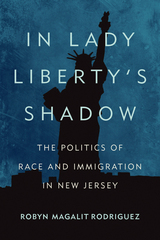 In Lady Liberty's Shadow: The Politics of Race and Immigration in New Jersey
Robyn Magalit Rodriguez
Rutgers University Press, 2017 Home to Ellis Island, New Jersey has been the first stop for many immigrant groups for well over a century. Yet in this highly diverse state, some of the most anti-immigrant policies in the nation are being tested. American suburbs are home to increasing numbers of first and second-generation immigrants who may actually be bypassing the city to settle directly into the neighborhoods that their predecessors have already begun to plant roots in—a trajectory that leads to nativist ordinances and other forms of xenophobia. In Lady Liberty’s Shadow examines popular white perceptions of danger represented by immigrants and their children, as well the specter that lurks at the edges of suburbs in the shape of black and Latino urban underclasses and the ever more nebulous hazard of (presumed-Islamic) terrorism that threatening to undermine “life as we know it.” Robyn Magalit Rodriguez explores the impact of anti-immigrant municipal ordinances on a range of immigrant groups living in varied suburban communities, from undocumented Latinos in predominantly white suburbs to long-established Asian immigrants in “majority-minority” suburbs. The “American Dream” that suburban life is supposed to represent is shown to rest on a racialized, segregated social order meant to be enjoyed only by whites. Although it is a case study of New Jersey, In Lady Liberty’s Shadow offers crucial insights that can shed fresh light on the national immigration debate. For more information, go to: https://www.facebook.com/inlibertysshadow
 In Levittown’s Shadow: Poverty in America’s Wealthiest Postwar Suburb
Tim Keogh
University of Chicago Press, 2023 Named one of the best nonfiction books of 2023 by Publishers Weekly!
There is a familiar narrative about American suburbs: after 1945, white residents left cities for leafy, affluent subdivisions and the prosperity they seemed to embody. In Levittown’s Shadow tells us there’s more to this story, offering an eye-opening account of diverse, poor residents living and working in those same neighborhoods. Tim Keogh shows how public policies produced both suburban plenty and deprivation—and why ignoring suburban poverty doomed efforts to reduce inequality.
Keogh focuses on the suburbs of Long Island, home to Levittown, often considered the archetypal suburb. Here military contracts subsidized well-paid employment welding airplanes or filing paperwork, while weak labor laws impoverished suburbanites who mowed lawns, built houses, scrubbed kitchen floors, and stocked supermarket shelves. Federal mortgage programs helped some families buy orderly single-family homes and enter the middle class but also underwrote landlord efforts to cram poor families into suburban attics, basements, and sheds. Keogh explores how policymakers ignored suburban inequality, addressing housing segregation between cities and suburbs rather than suburbanites’ demands for decent jobs, housing, and schools.
By turning our attention to the suburban poor, Keogh reveals poverty wasn’t just an urban problem but a suburban one, too. In Levittown’s Shadow deepens our understanding of suburbia’s history—and points us toward more effective ways to combat poverty today.
 In Levittown’s Shadow: Poverty in America's Wealthiest Postwar Suburb
Tim Keogh
University of Chicago Press, 2023 This is an auto-narrated audiobook version of this book.
Highlights how low-wage residents have struggled to live and work in a place usually thought of as affluent: suburbia.
There is a familiar narrative about American suburbs: after 1945, white residents left cities for leafy, affluent subdivisions and the prosperity they seemed to embody. In Levittown’s Shadow tells us there’s more to this story, offering an eye-opening account of diverse, poor residents living and working in those same neighborhoods. Tim Keogh shows how public policies produced both suburban plenty and deprivation—and why ignoring suburban poverty doomed efforts to reduce inequality.
Keogh focuses on the suburbs of Long Island, home to Levittown, often considered the archetypal suburb. Here military contracts subsidized well-paid employment welding airplanes or filing paperwork, while weak labor laws impoverished suburbanites who mowed lawns, built houses, scrubbed kitchen floors, and stocked supermarket shelves. Federal mortgage programs helped some families buy orderly single-family homes and enter the middle class but also underwrote landlord efforts to cram poor families into suburban attics, basements, and sheds. Keogh explores how policymakers ignored suburban inequality, addressing housing segregation between cities and suburbs rather than suburbanites’ demands for decent jobs, housing, and schools.
By turning our attention to the suburban poor, Keogh reveals poverty wasn’t just an urban problem but a suburban one, too. In Levittown’s Shadow deepens our understanding of suburbia’s history—and points us toward more effective ways to combat poverty today.
In Light of Stars
Bruce Willard
Four Way Books, 2021 Willard’s love of music combines with his love and respect for the natural world. Often rooted in, or coming out of, domestic encounters, the poems of this collection rise up (much like the clouds over his oft-traversed Rockies), as the speaker throws his attention to earth and sky, better to understand his own dynamic and shifting inner weather.
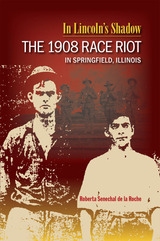 In Lincoln's Shadow: The 1908 Race Riot in Springfield, Illinois
Roberta Senechal de la Roche
Southern Illinois University Press, 2008 Winner of the Gustavus Myers Center Award for the Study of Human Rights in the United States!
Winner of the Illinois State Historical Society Superior Achievement Award!
This detailed case study of the 1908 race riot in Springfield, Illinois, which began only a few blocks from Abraham Lincoln’s family home, explores the social origins of rioting by whites against the city’s African American community after a white woman alleged that a black man had raped her. Over two days rioters wrecked black-owned businesses, burned neighborhoods to the ground, killed two black men, and injured many others. Author Roberta Senechal de la Roche draws from a wide range of sources to describe the riot, identify the rioters and their victims, and challenge previous interpretations that attribute rioting to interracial competition for jobs, housing, or political influence. Written in a direct and clear style, In Lincoln’s Shadow documents a violent explosion of racial hatred that shocked the nation and reveals the complexity of white racial attitudes in the early twentieth century.
 In Love with Jerzy Kosinski: A Novel
Agate Nesaule
University of Wisconsin Press, 2009 From Agate Nesaule, acclaimed by writers across the globe from Doris Lessing to Tim O’Brien, comes a long-awaited novel. In Love with Jerzy Kosinski is a story of courage and persistence, exploring in fiction the themes that gripped readers of Nesaule’s award-winning memoir, A Woman in Amber.
After fleeing Latvia as a child, Anna Duja escapes Russian confinement in displaced persons camps and eventually arrives in America. Years later, she finds herself in a different kind of captivity on isolated Cloudy Lake, Wisconsin, living with her disarming but manipulative husband, Stanley.
Inspired by the transformation of Polish-Jewish émigré Jerzy Kosinski from persecuted wartime escapee to celebrity author in America, Anna slips away from Stanley and Cloudy Lake in small steps: learning to drive, making friends, moving to Madison, falling in love, and learning to forgive. Readers will applaud the book’s power, the beauty of its prose, and its strong evocation of a woman gradually finding her way in the wake of trauma.
Winner, the Chancellor’s Regional Literary Award, University of Wisconsin-Whitewater
In Medias Res: Peter Sloterdijk's Spherological Poetics of Being
Edited by Willem Schinkel and Liesbeth Noordegraaf-Eelens
Amsterdam University Press, 2012
In recent years, Peter Sloterdijk has become one of Germany’s most influential thinkers. His diverse body of work includes a Heideggerian project to think “space and time,” a Diogenes-inspired affirmation of the body, and a Deleuzian ontology of network-spheres. This highly accessible collection of essays brings together a team of internationally renowned scholars, including Sjoerd van Tuinen, Rudi Laermans, Peter Weibel, and Bruno Latour, to provide a series of critical reflections on Sloterdijk’s oeuvre.
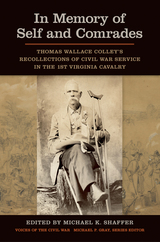 In Memory of Self and Comrades: Thomas Wallace Colley's Recollections of Civil War Service in the 1st Virginia Cavalry
Michael K. Shaffer
University of Tennessee Press, 2020 Thomas W. Colley served in one of the most active and famous units in the Civil War, the 1st Virginia Cavalry, which fought in battles in the Eastern Theater, from First Manassas/Bull Run to the defense of Petersburg. Colley was born November 11, 1837, outside Abingdon, Virginia, and grew up knowing the daily demands of life on a farm. In May 1861, along with the other members of the Washington Mounted Rifles, he left his home in Washington County and reported to camp in Richmond. During the war, Colley received wounds on three different occasions: first at Waterloo Bridge in 1862, again at Kelly’s Ford in 1863, and finally at Haw’s Shop in 1864. The engagement at Haw’s Shop resulted in the amputation of his left foot, thereby ending his wartime service.
The first modern scholarly edition of Colley’s writings, In Memory of Self and Comrades dramatizes Colley’s fate as a wounded soldier mustered out before the war’s conclusion. Colley’s postwar reflections on the war reveal his struggle to earn a living and maintain his integrity while remaining somewhat unreconciled to his condition. He found much of his solace through writing and sought to advance his education after the war. As one of an estimated 20,000 soldiers who underwent amputation during the Civil War, his memoirs reveal the challenges of living with what many might recognize today as post-traumatic stress disorder. Annotations from editor Michael K. Shaffer provide further context to Colley’s colorful and insightful writings on both his own condition and the condition of other veterans also dealing with amputations
In Mrs. Tully's Room: A Childcare Portrait
Vivian Gussin Paley
Harvard University Press, 2001 In Mrs. Tully's Room makes a quiet but powerful case for the pedagogical skill and psychological insight that childcare providers—so often underpaid and undervalued—can bring to their work. It also emphasizes how warm, quasi-familial, even mentoring relationships can develop between childcare providers and their preschool families.
In My Father’s Arms: A Son’s Story of Sexual Abuse
Walter A. de Milly III
University of Wisconsin Press, 2012 To the outside world, Walter de Milly’s father was a prominent businessman, a dignified Presbyterian, and a faithful husband; to Walter, he was an overwhelming, handsome monster. This paperback of In My Father’s Arms: A True Story of Incest adds a reflective preface by the author and a foreword by Richard B. Gartner, PhD, author of Beyond Betrayal: Taking Charge of Your Life after Boyhood Sexual Abuse.
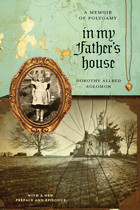 In My Father’s House: A Memoir of Polygamy
Dorothy Allred Solomon
Texas Tech University Press, 2009 Before Big Love, before Eldorado, a groundbreaking memoir explored polygamy, not with outrage but with honesty and grace. In 1984, when polygamous groups knew little but the fear and pain of secrecy and hiding, Dorothy Allred Solomon, the twenty-eighth of forty-eight children, went public with her family’s story. Descended from five generations of Mormon polygamy, Solomon evokes the fervor and dedication that bound the Allreds to “living the Principle.” She vividly renders the persecution and poverty she knew as a child, the joyous awe of a father’s too-rare presence, and an abiding hunger for autonomy. Confronting the paradox of a faith that seals loved ones as families for eternity but casts them as outlaws in the here and now, she traces the events that culminated in her father’s 1977 assassination, a tragedy that rocked all Utah. Now, more than a quarter century later, Solomon revisits her story in a new preface and epilogue and in light of recent events that continue to rivet attention and spotlight our national struggle for understanding and fairness.
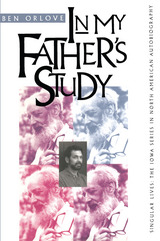 In My Father'S Study
Ben Orlove
University of Iowa Press, 1995 In 1921 Solomon Orlovski, a Russian Jew born in 1904, emigrated to America and transformed himself into Robert Orlove, a pattern maker in two senses of the term: during the day, he worked in the fur trade in New York and Chicago, making patterns for toys and hats; in his private life he became a self-taught artist who created prints, sketches, and collages in his study. More than sixty years later his son Ben—an anthropologist educated at Harvard and Berkeley—walked through the doorway of the deceased Robert's study and began to explore more than a half century of his father's experiences, thoughts, and emotions as well as his own very different life. His wry, sensitive combination of biography, memoir, and autobiography taps a remarkably rich vein of individual and collective experience in our diverse society. Ben Orlove's dual narrative constitutes a family history of notable breadth and immediacy. By turns passionate and cool, dramatic and analytic, he excavates his father Robert's lifetime accumulation of diaries, letters, clippings, photographs, and artworks to create a convincing, deeply satisfying portrait that link both father and son.
 In My Heart
Sofonia Machabe Mofokeng
Seagull Books, 2021 One of few books translated into English from Sesotho, In My Heart introduces a long-neglected voice to global readership.
Elsewhere Texts, edited by Gayatri Chakraborty Spivak and Hosam Aboul-Ela, presents radical new engagements with non-European literary cultures. This volume, the latest in this ambitious series, is a brilliant collection of essays originally written in Sesotho by Sophonia Machabe Mofokeng. Often confined to the role of “native informants” in the nineteenth and twentieth centuries, writers working in African languages laid the foundation for the politics and poetics of decolonization and are legendary among their own communities of readers, though their work remains little known elsewhere. In My Heart belongs to this tradition of colonial renegades. Writing in the 1950s during the cataclysmic events of apartheid that were transforming life in South Africa, Mofokeng offers a series of meditations that provide his readers with a Sesotho worldview outside the categories authorized by colonial knowledge. In My Heart, expertly translated by Nhlanhla Maake, introduces a significant African thinker’s influential work to a global readership.
In My Unknowing: Poems
Chard deNiord
University of Pittsburgh Press, 2020 In his new poetry collection, Chard deNiord explores the paradoxical nature of unknowing.
I WEPT WITH JOY ABOVE THE RIVER
I wept with joy above the river.
I wept with sorrow above the river.
My tears were clear, both sweet and bitter.
One leaf cried out to another,
“Empty me today of all my color.
Fill me tomorrow with a shot of sugar.”
This was the still ritual for my feet:
To stand on the earth that took of earth earth with ill and sing.
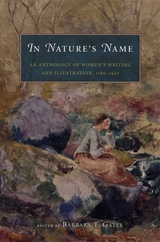 In Nature's Name: An Anthology of Women's Writing and Illustration, 1780-1930
Edited by Barbara T. Gates
University of Chicago Press, 2002 From the late eighteenth to the early twentieth century, hundreds of British women wrote about and drew from nature. Some—like the beloved children's author Beatrix Potter, who produced natural history about hedgehogs as well as fiction about rabbits—are still familiar today. But others have all but disappeared from view. Barbara Gates recovers these lost works and prints them alongside little-known pieces by more famous authors, like Potter's field notes on hedgehogs, reminding us of better known stories that help set the others in context.
The works contained in this volume are as varied as the women who produced them. They include passionate essays on the protection of animals, vivid accounts of travel and adventure from the English seashore to the Indian Alps, poetry and fiction, and marvelous tales of nature for children. Special features of the book include a detailed chronology placing each selection in its historical and literary context; biographical sketches of each author's life and works; a comprehensive bibliography of primary and secondary literature; and over sixty illustrations.
An ideal introduction to women's powerful and diverse responses to the natural world, In Nature's Name will be treasured by anyone interested in natural history, women, or Victorian and Edwardian Britain.
 In Oceania: Visions, Artifacts, Histories
Nicholas Thomas
Duke University Press, 1997 In this collection of essays, Nicholas Thomas, a leading theorist of historical anthropology, explores the historicization of cultural encounters in the region referred to as Oceania. Basing his claims on wide-ranging historical and ethnographic research and building on his celebrated studies of exchange and colonialism in the Pacific, Thomas describes how outsiders and islanders alike have constructed indigenous cultures over the last two hundred years.
In Oceania documents and analyzes the "rhetorical artifacts" of explorers, missionaries, fiction and travel writers, and the people of the Pacific themselves to illustrate how Oceanic identities have been represented over time. Not content with conventional methods of anthropology or history, Thomas draws on postcolonial theory and literary analysis in extraordinarily wide-ranging analyses of texts, visual images, and historical processes. He demonstrates how cultures of the Pacific Islands have dealt with colonialist ventures, modernity, and the debate about the recuperation of histories and traditions. The picture Thomas paints of Oceania, however, is not one of a group of societies stripped of meaning, but one that shows how the interactions between indigenous cultures and European influences have created entirely new identities.
In One Act
Adrienne Kennedy
University of Minnesota Press, 1988 “Since her earliest plays. . . [Adrienne Kennedy] has been creating frightful and seductive theatrical images of her memories and fantasies. Her black, female protagonists enact Kennedy’s nightmares, then make them ours, enveloping the audience in their relentless anger, madness, and fear . . . time and place shift constantly, plot lines are parceled out in bits, and a contextual frame comes clear gradually, like a reflection is stilling waters.” -Alisa SolomonVillage Voice
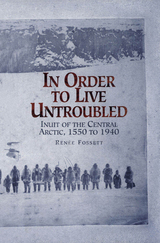 In Order to Live Untroubled: Inuit of the Central Artic 1550 to 1940
Renee Fossett
University of Manitoba Press, 2001 Despite the long human history of the Canadian central arctic, there is still little historical writing on the Inuit peoples of this vast region. Although archaeologists and anthropologists have studied ancient and contemporary Inuit societies, the Inuit world in the crucial period from the 16th to the 20th centuries remains largely undescribed and unexplained. In Order to Live Untroubled helps fill this 400-year gap by providing the first, broad, historical survey of the Inuit peoples of the central arctic.Drawing on a wide array of eyewitness accounts, journals, oral sources, and findings from material culture and other disciplines, historian Renee Fossett explains how different Inuit societies developed strategies and adaptations for survival to deal with the challenges of their physical and social environments over the centuries. In Order to Live Untroubled examines how and why Inuit created their cultural institutions before they came under the pervasive influence of Euro-Canadian society. This fascinating account of Inuit encounters with explorers, fur traders, and other Aboriginal peoples is a rich and detailed glimpse into a long-hidden historical world.
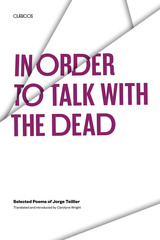 In Order to Talk with the Dead: Selected Poems of Jorge Teillier
By Jorge Teillier
University of Texas Press, 1993 "In order to talk with the dead
you have to know how to wait:
they are fearful
like the first steps of a child.
But if we are patient
one day they will answer us
with a poplar leaf trapped in a broken mirror,
with a flame that suddenly revives in the fireplace,
with a dark return of birds
before the glance of a girl
who waits motionless on the threshold." —from "In Order to Talk with the Dead" Reared in the rainy forests of Chile's "La Frontera" region which had nurtured Pablo Neruda a generation earlier, Jorge Teillier has become one of Chile's leading contemporary poets, whose work is widely read in Latin America and Europe along with the poetry of his well-known contemporaries Nicanor Parra and Enrique Lihn. This English-Spanish bilingual anthology now introduces English-speaking readers to Teillier, with a representative selection of his best work from all phases of his career. Carolyne Wright has translated poems from the volumes Muertes y maravillas (1971), Para un pueblo fantasma (1978), and Cartas para reinas de otras primaveras (1985). Avoiding the bravura effects of some of his contemporaries, Teillier writes from a life lived directly and simply, returning time and again in his poetry to the timeless and mythic South of his boyhood, the "Land of Nevermore."
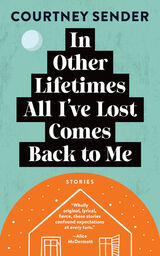 In Other Lifetimes All I've Lost Comes Back to Me: Stories
Courtney Sender
West Virginia University Press, 2023 “A deep and howling portrait of longing and loneliness.” —Boston Globe
“A distinctive debut from a promising author.” —Kirkus Reviews
“A stunner from the very first page.” —Deesha Philyaw, author of The Secret Lives of Church Ladies, in the Millions
And praise from Ann Patchett, Alice McDermott, Danielle Evans, Elisa Albert, and Aimee Bender
Populated with lovers who leave and return, with ghosts of the Holocaust and messages from the dead, Courtney Sender’s debut collection speaks in a singular new voice about the longings and loneliness of contemporary love. The world of these fourteen interlocking stories is fiercely real but suffused with magic and myth, dark wit, and distinct humor. Here, ancient loss works its way deep into the psyche of modern characters, stirring their unrelenting lust for life. In “To Do With the Body,” the Museum of Period Clothes becomes the perfect setting for a bloody crime. In “Lilith in God’s Hands,” Adam’s first wife has an affair in the Garden of Eden. And in the title story, a woman spends her life waiting for any of the men who have left her to come back, only to find them all at her doorstep at once. For readers of Elena Ferrante, Nicole Krauss, and Carmen Maria Machado, and for anyone who has known love and loneliness, In Other Lifetimes All I’ve Lost Comes Back to Me is a wise and sensual collection of old hauntings, new longings, and unexpected returns, with a finale that is a rousing call to the strength we each have, together or alone.
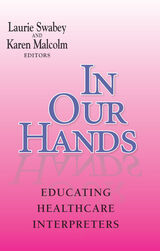 In Our Hands: Educating Healthcare Interpreters
Laurie Swabey
Gallaudet University Press, 2012 Deaf Americans have identified healthcare as the most difficult setting in which to obtain a qualified interpreter. Yet, relatively little attention has been given to developing evidence-based resources and a standardized body of knowledge to educate healthcare interpreters. In Our Hands: Educating Healthcare Interpreters addresses these concerns by delineating the best practices for preparing interpreters to facilitate full access for deaf people in healthcare settings. The first section of this volume begins with developing domains and competencies toward a teaching methodology for medical and mental health interpreters. The next chapter describes a discourse approach that relies on analyzing actual transcripts and recordings to train healthcare interpreters. Other chapters feature a model mental health interpreter training program in Alabama; using a Demand-Control Schema for experiential learning; the risk of vicarious trauma to interpreters; online educational opportunities; and interpreting for deaf health care professionals. The second section offers four perspectives on education, including healthcare literacy of the clients; the education of Deaf interpreters; the development of standards for spoken-language healthcare interpreters; and the perspectives of healthcare interpreter educators in Europe. The range and depth of In Our Hands takes significant strides in presenting educational opportunities that can enhance the critical services provided by healthcare interpreters to deaf clients.
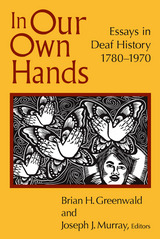 In Our Own Hands: Essays in Deaf History, 1780–1970
Brian H. Greenwald
Gallaudet University Press, 2016 This collection of new research examines the development of deaf people’s autonomy and citizenship discourses as they sought access to full citizenship rights in local and national settings. Covering the period of 1780–1970, the essays in this collection explore deaf peoples’ claims to autonomy in their personal, religious, social, and organizational lives and make the case that deaf Americans sought to engage, claim, and protect deaf autonomy and citizenship in the face of rising nativism and eugenic currents of the late nineteenth and early twentieth century.
These essays reveal how deaf people used their agency to engage in vigorous debates about issues that constantly tested the values of deaf people as Americans. The debates overlapped with social trends and spilled out into particular physical and social spaces such as clubs and churches, as well as within families. These previously unexplored areas in Deaf history intersect with important subthemes in American history, such as Southern history, religious history, and Western history.
The contributors demonstrate that as deaf people pushed for their rights as citizens, they met with resistance from hearing people, and the results of their efforts were decidedly mixed. These works reinforce the Deaf community’s longstanding desire to be part of the nation. In Our Own Hands contributes to an increased understanding of the struggle for citizenship and expands our current understanding of race, gender, religion, and other trends in Deaf history.
 In Over Our Heads: The Mental Demands of Modern Life
Robert Kegan
Harvard University Press, 1998 If contemporary culture were a school, with all the tasks and expectations meted out by modern life as its curriculum, would anyone graduate? In the spirit of a sympathetic teacher, Robert Kegan guides us through this tricky curriculum, assessing the fit between its complex demands and our mental capacities, and showing what happens when we find ourselves, as we so often do, in over our heads. In this dazzling intellectual tour, he completely reintroduces us to the psychological landscape of our private and public lives.
A decade ago in The Evolving Self, Kegan presented a dynamic view of the development of human consciousness. Here he applies this widely acclaimed theory to the mental complexity of adulthood. As parents and partners, employees and bosses, citizens and leaders, we constantly confront a bewildering array of expectations, prescriptions, claims, and demands, as well as an equally confusing assortment of expert opinions that tell us what each of these roles entails. Surveying the disparate expert “literatures,” which normally take no account of each other, Kegan brings them together to reveal, for the first time, what these many demands have in common. Our frequent frustration in trying to meet these complex and often conflicting claims results, he shows us, from a mismatch between the way we ordinarily know the world and the way we are unwittingly expected to understand it.
In Over Our Heads provides us entirely fresh perspectives on a number of cultural controversies—the “abstinence vs. safe sex” debate, the diversity movement, communication across genders, the meaning of postmodernism. What emerges in these pages is a theory of evolving ways of knowing that allows us to view adult development much as we view child development, as an open-ended process born of the dynamic interaction of cultural demands and emerging mental capabilities. If our culture is to be a good “school,” as Kegan suggests, it must offer, along with a challenging curriculum, the guidance and support that we clearly need to master this course—a need that this lucid and richly argued book begins to meet.
In Parachutes Descending: Poems
Tana Jean Welch
University of Pittsburgh Press, 2024 In Parachutes Descending follows the speaker’s decision to leave her Bostonian husband for Jane, a San Franciscan artist, while charting the sensual consequences of our bodily entanglements. These poems capture personal desires fermenting among current earthly cataclysms, including climate change and global capitalism. In doing so, this collection asks us to think inclusively about the ways we become with all humans and nonhumans, all of us—past, present, and future—intimately entwined with others.
In Permanent Crisis: Ethnicity in Contemporary European Media and Cinema
Ipek A. Celik
University of Michigan Press, 2015 Refugees, migrants, and minorities of migrant origin frequently appear in European mainstream news in emergency situations: victims of human trafficking, suspects of terrorism, “bogus” asylum seekers. Through analysis of work by established filmmakers Michael Haneke, Fatih Akin, and Alfonso Cuarón, In Permanent Crisis contemplates the way mass media depictions become invoked by film to frame ethnic and racial Otherness in Europe as adornments of catastrophe. Special attention is given to European auteur films in which riots, terrorism, criminal activities, and honor killings bring Europe’s minorities to the forefront of public visibility only to reduce them to perpetrators or victims of violence.
In Pinelight: A Novel
Thomas Rayfiel
Northwestern University Press, 2013 As the elderly hero of Thomas Rayfiel’s daring new novel, In Pinelight, sits in an old folks home responding to the questions of an unseen interrogator, the fragments he supplies form the portrait of a man’s life in upstate New York. Losses, loves, destructive family relationships, sexual entanglements, and moments of mystical awareness filter through the seeming minutiae of small-town gossip to confront the reader with their cumulative power. In Pinelight stirs the emotions both by its formal virtuosity and by the precision with which the narrator is able to reveal human psychology. Rayfiel seeks to capture the essence of historical forces and to illuminate the inescapable truths we would rather not see.
 In Place/Out of Place: Geography, Ideology, and Transgression
Tim Cresswell
University of Minnesota Press, 1996 In Place/Out of Place was first published in 1996. Minnesota Archive Editions uses digital technology to make long-unavailable books once again accessible, and are published unaltered from the original University of Minnesota Press editions. What is the relationship between place and behavior? In this fascinating volume, Tim Cresswell examines this question via "transgressive acts" that are judged as inappropriate not only because they are committed by marginalized groups but also because of where they occur. In Place/Out of Place seeks to illustrate the ways in which the idea of geographical deviance is used as an ideological tool to maintain an established order. Cresswell looks at graffiti in New York City, the attempts by various "hippie" groups to hold a free festival at Stonehenge during the summer solstices of 1984–86, and the Greenham Common Women's Peace Camp in Berkshire, England. In each of the cases described, the groups involved were designated as out of place both by the media and by politicians, whose descriptions included an array of images such as dirt, disease, madness, and foreignness. Cresswell argues that space and place are key factors in the definition of deviance and, conversely, that space and place are used to construct notions of order and propriety. In addition, whereas ideological concepts being expressed about what is good, just, and appropriate often are delineated geographically, the transgression of these delineations reveals the normally hidden relationships between place and ideology-in other words, the "out-of-place" serves to highlight and define the "in-place." By looking at the transgressions of the marginalized, Cresswell argues, we can gain a novel perspective on the "normal" and "taken-for-granted" expectations of everyday life. The book concludes with a consideration of the possibility of a "politics of transgression," arguing for a link between the challenging of spatial boundaries and the possibility of social transformation. Tim Cresswell is currently lecturer in geography at the University of Wales.
In Plain Sight: Impunity and Human Rights in Thailand
Tyrell Haberkorn
University of Wisconsin Press, 2019 Following a 1932 coup d’état in Thailand that ended absolute monarchy and established a constitution, the Thai state that emerged has suppressed political dissent through detention, torture, forced reeducation, disappearances, assassinations, and massacres. In Plain Sight shows how these abuses, both hidden and occurring in public view, have become institutionalized through a chronic failure to hold perpetrators accountable. Tyrell Haberkorn’s deeply researched revisionist history of modern Thailand highlights the legal, political, and social mechanisms that have produced such impunity and documents continual and courageous challenges to state domination.
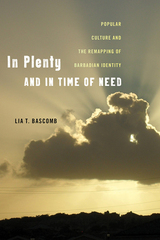 In Plenty and in Time of Need: Popular Culture and the Remapping of Barbadian Identity
Lia T. Bascomb
Rutgers University Press, 2020 In Plenty and in Time of Need demonstrates how the unique history of Barbados has contributed to complex relations of national, gendered, and sexual identities, and how these identities are represented and interpreted on a global stage. As the most widespread manifestation of social commentary, the book uses music and performance to analyze the competing ideals and realities of the national culture. It details the histories of prominent musical artists, including the prolific Pan-Africanist calypsonian the Mighty Gabby, the world-renowned Merrymen, Soca Queen Alison Hinds, artist/activist Rupee, and international superstar Rihanna. Using these artists, the project analyzes how femininity, masculinity, and sexuality are put in service of Barbadian nationalism. By examining websites, blogs, and digital products of these artists in conversation with Barbadian tourism, the book re-examines the ways in which commodity, sexuality, gender performance, and diasporic consciousness undergird individual careers and national representations.
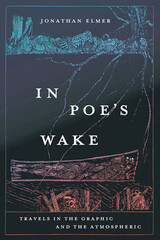 In Poe's Wake: Travels in the Graphic and the Atmospheric
Jonathan Elmer
University of Chicago Press, 2024 Explores how Edgar Allan Poe has become a household name, as much a brand as an author.
You’ll find his face everywhere, from coffee mugs, bobbleheads, and T-shirts to the cover of the Beatles’ Sergeant Pepper’s Lonely Hearts Club Band. Edgar Allan Poe is one of American culture’s most recognizable literary figures, his life and works inspiring countless derivations beyond the literary realm. Poe’s likeness and influence have been found in commercial illustration and kitsch, art installations, films, radio plays, children’s cartoons, and video games. What makes Poe so hugely influential in media other than his own? What do filmmakers, composers, and other artists find in Poe that suits their purposes so often and so variously?
In Poe’s Wake locates the source of the writer’s enduring legacy in two vernacular aesthetic categories: the graphic and the atmospheric. Jonathan Elmer uses Poe to explore these two terms and track some deep patterns in their use, not through theoretical labor but through close encounters with a wide sampling of aesthetic objects that avail themselves of Poe’s work. Poe’s writings are violent and macabre, memorable both for certain grisly images and for certain prevailing moods or atmospheres—dread, creepiness, and mournfulness. Furthermore, a bundle of Poe traits—his thematic emphasis on extreme sensation, his flexible sense of form, his experimental and modular method, and his iconic visage—amount to what could be called a Poe “brand,” one as likely to be found in music videos or comics as in novels and stories. Encompassing René Magritte, Claude Debussy, Lou Reed, Roger Corman, Spongebob Squarepants, and many others, Elmer’s book shows how the Poe brand opens trunk lines to aesthetic experiences fundamental to a multi-media world.
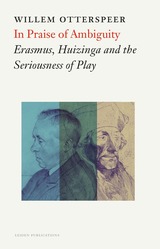 In Praise of Ambiguity: Erasmus, Huizinga and the Seriousness of Play
Willem Otterspeer
Leiden University Press, 2018 "In Praise of Ambiguity presents a discourse about the seriousness of play. Erasmus and Huizinga are its main characters, their books In Praise of Folly (1511) and Homo Ludens (1938) its main subject. It treats those books as contemporaries and asks what they still have to say to us. The main theme of both books is the contrast between two attitudes of life: the conviction that each subject has two or more sides as opposed to the certainty that there is always only one side to the matter. It is relativism versus essentialism, play versus seriousness. In these times of populism and fundamentalism the relationship between play and seriousness is more significant than ever. Erasmus and Huizinga conceived a compromise as brilliant as it was paradoxical: turn seriousness into play, play into seriousness. Their solution is the life blood of literature. Literature is always paradoxical, always ‘true’ and ‘not true’ at the same time, both reality and fiction. Ambiguity is its home territory. Literature is the best answer to the purity and peremptoriness of prophets. "
 In Praise of Annada
Bharatchandra Ray
Harvard University Press, 2017 The first English translation of the narrative poem that is widely recognized as one of treasures of pre-modern Bengali culture.
In 1752, the Bengali poet Bharatchandra Ray completed a long narrative poem dedicated to the glory of Annada, the consort of Shiva and the divinity who, as her name proclaims, “bestows the bounty of rice.”
A poet well-versed in Sanskrit, Persian, and Hindi—all of which enrich his work—Bharatchandra took up the literary performance genre maṅgalkāvya and thoroughly transformed it, addressing the aesthetic tastes of the court rather than those of the traditional village audience. He added depth and sensitivity to well-known legends, along with allusions to his own experiences of poverty, and more than a dash of mischievous wit.
The second volume recounts the clandestine love affair of Princess Vidya and Prince Sundar, and how Bhavananda, ancestor of the poet’s patron, stopped a rebellion and became a king.
This translation, the first in English, features the original text in the Bangla script. Lively and entertaining, In Praise of Annada was regarded as a major achievement in its own time and is now counted one of the treasures of Bengali literature.
 In Praise of Annada
Bharatchandra Ray
Harvard University Press, 2017 The first English translation of the narrative poem that is widely recognized as one of treasures of pre-modern Bengali culture.
In 1752, the Bengali poet Bharatchandra Ray completed a long narrative poem dedicated to the glory of Annada, Shiva’s consort and the divinity who, as her name proclaims, “bestows the bounty of rice.”
A poet well versed in Sanskrit, Persian, and Hindi—all of which enrich his work—Bharatchandra took up the literary performance genre maṅgalkāvya and thoroughly transformed it, addressing the aesthetic tastes of the court rather than of the traditional village audience. He added depth and sensitivity to well-known legends, along with allusions to his own experiences of poverty, and more than a dash of mischievous wit. The first volume narrates Annada’s origins, including the building of her city and temple under Shiva’s direction and the spread of her worship, and incorporates praise of the poet’s patron, the Nadia royal family.
This translation, the first into English, accompanies the original text in the Bangla script. Lively and entertaining, In Praise of Annada was regarded as a major achievement in its own time and remains a treasure of Bengali literature.
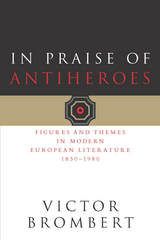 In Praise of Antiheroes: Figures and Themes in Modern European Literature, 1830-1980
Victor Brombert
University of Chicago Press, 1999 In an age of upheaval and challenged faith, traditional heroes are hard to come by, and harder still to love, with their bloodstained hands and backs unbowed by the consequences of their actions. Through penetrating readings of key works of modern European literature, Victor Brombert shows how a new kind of hero—the antihero—has arisen to replace the toppled heroic model.
Though they fail, by design, to live up to conventional expectations of mythic heroes, antiheroes are not necessarily "failures." They display different kinds of courage more in tune with our time and our needs: deficiency translated into strength, failure experienced as honesty, dignity achieved through humiliation. Brombert explores these paradoxes in the works of Büchner, Gogol, Dostoevsky, Flaubert, Svevo, Hašek, Frisch, Camus, and Levi. Coming from diverse cultural and linguistic traditions, these writers all use the figure of the antihero to question handed-down assumptions, to reexamine moral categories, and to raise issues of survival and renewal embodying the spirit of an uneasy age.
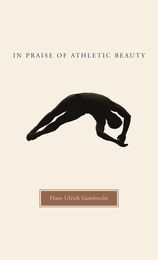 In Praise of Athletic Beauty
Hans Ulrich Gumbrecht
Harvard University Press, 2006 “A thought-provoking—and academically rigorous—defense of the grace and aesthetic worth of sports.” —Sports Illustrated
By the hundreds of millions we show up, stand in line, turn on, and tune in to watch, mesmerized, as athletes perform. And yet this experience, so widely craved and intensely felt, we commonly dismiss as “only a game.” A book that looks beyond the usual explanations of why sports fascinates, In Praise of Athletic Beauty also strives for a language that can frame—even enhance—the pleasure we take in watching athletic events.
The vicarious thrill, anxiety release, competitive spirit: in place of these traditional answers to the mystery of sports’ allure, Hans Ulrich Gumbrecht proposes a more powerful and provocative alternative. The fascination with watching sports, he argues, is probably the most popular and potent contemporary form of aesthetic experience—in the classic, very literal sense of this concept. In exploring this idea, Gumbrecht develops a lucid reflection on the pleasures of sports spectatorship and the nature of athletic beauty. Where we might readily pronounce certain athletic moves and plays “beautiful,” this book gives us the means to explore, understand, and enjoy even more acutely the aesthetic experience that our words-in-passing barely suggest.
With a new perspective on the appreciation of—and, indeed, a new tone of praising—sports, Gumbrecht also offers a new way of narrating the history of athletics and a fresh vocabulary for analyzing various sports. Exploring athletic beauty, this book makes us understand the widespread passion sport inspires as an untamed form of aesthetic fascination.
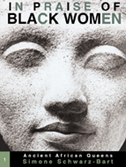 In Praise of Black Women, Volume 1: Ancient African Queens
Simone Schwarz-Bart with Andre Schwarz-Bart
University of Wisconsin Press, 2001 In Praise of Black Women is a magnificent tribute to women in Africa and the African diaspora from the ancient past to the present. Lavishly illustrated, with text written and selected by the celebrated Guadeloupian novelist Simone Schwarz-Bart, this four-volume series celebrates remarkable women who distinguished themselves in their time and shaped the course of culture and history.
Volume 1: Ancient African Queens weaves together oral tradition, folk legends and stories, songs and poems, historical accounts, and travelers’ tales from Egypt to southern Africa, from prehistory to the nineteenth century. These women rulers, warriors, and heroines include Amanirenas, the queen of Kush who battled Roman armies and defeated them at Aswan; Daurama, mother of the seven Hausa kingdoms; Amina Kulibali, founder of the Gabu dynasty in Senegal; Ana de Sousa Nzinga, who resisted the Portuguese conquest of Angola; Beatrice Kimpa Vita, a Kongo prophet burned at the stake by Christian missionaries; Nanda, mother of the famous warrior-king Shaka Zulu; and many others.
These extraordinary women's stories, narrated in the style of African oral tradition, are absorbing, informative, and accessible. The abundant illustrations, many of them rare archival images, depict the diversity among Black women and make this volume a unique treasure for every art lover, every school, and every family.
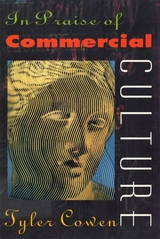 In Praise of Commercial Culture
Tyler Cowen
Harvard University Press, 2000 Does a market economy encourage or discourage music, literature, and the visual arts? Do economic forces of supply and demand help or harm the pursuit of creativity? This book seeks to redress the current intellectual and popular balance and to encourage a more favorable attitude toward the commercialization of culture that we associate with modernity. Economist Tyler Cowen argues that the capitalist market economy is a vital but underappreciated institutional framework for supporting a plurality of coexisting artistic visions, providing a steady stream of new and satisfying creations, supporting both high and low culture, helping consumers and artists refine their tastes, and paying homage to the past by capturing, reproducing, and disseminating it. Contemporary culture, Cowen argues, is flourishing in its various manifestations, including the visual arts, literature, music, architecture, and the cinema.
Successful high culture usually comes out of a healthy and prosperous popular culture. Shakespeare and Mozart were highly popular in their own time. Beethoven’s later, less accessible music was made possible in part by his early popularity. Today, consumer demand ensures that archival blues recordings, a wide array of past and current symphonies, and this week’s Top 40 hit sit side by side in the music megastore. High and low culture indeed complement each other.
Cowen’s philosophy of cultural optimism stands in opposition to the many varieties of cultural pessimism found among conservatives, neoconservatives, the Frankfurt School, and some versions of the political correctness and multiculturalist movements, as well as historical figures, including Rousseau and Plato. He shows that even when contemporary culture is thriving, it appears degenerate, as evidenced by the widespread acceptance of pessimism. He ends by considering the reasons why cultural pessimism has such a powerful hold on intellectuals and opinion-makers.
 In Praise of Copying
Marcus Boon
Harvard University Press, 2013 This book is devoted to a deceptively simple but original argument: that copying is an essential part of being human, that the ability to copy is worthy of celebration, and that, without recognizing how integral copying is to being human, we cannot understand ourselves or the world we live in.
In spite of the laws, stigmas, and anxieties attached to it, the word “copying” permeates contemporary culture, shaping discourse on issues from hip hop to digitization to gender reassignment, and is particularly crucial in legal debates concerning intellectual property and copyright. Yet as a philosophical concept, copying remains poorly understood. Working comparatively across cultures and times, Marcus Boon undertakes an examination of what this word means—historically, culturally, philosophically—and why it fills us with fear and fascination. He argues that the dominant legal-political structures that define copying today obscure much broader processes of imitation that have constituted human communities for ages and continue to shape various subcultures today. Drawing on contemporary art, music and film, the history of aesthetics, critical theory, and Buddhist philosophy and practice, In Praise of Copying seeks to show how and why copying works, what the sources of its power are, and the political stakes of renegotiating the way we value copying in the age of globalization.
In Praise of Disobedience: Clare of Assisi, A Novel
Dacia Maraini
Rutgers University Press, 2023 An author receives a mysterious e-mail begging her to tell the story of Clare of Assisi, the thirteenth-century Italian saint. At first annoyed by the request, the author begins to research Saint Clare and becomes captivated by her life. We too are transported into the strange and beautiful world of medieval Italy, witnessing the daily rituals of convent life. At the center of that life is Saint Clare, a subversive and compelling figure full of contradictions: a physically disabled woman who travels widely in her imagination, someone unforgivingly harsh to herself yet infinitely generous to the women she supervises, a practitioner of self-abnegation who nevertheless knows her own worth. A visionary who liberated herself from the chains of materialism and patriarchy, Saint Clare here becomes an inspirational figure for a new generation of readers.
 In Praise of Failure: Four Lessons in Humility
Costica Bradatan
Harvard University Press, 2023 A New York Times Book Review Editors’ Choice
“Charming and brilliant.” —Times Literary Supplement
“Provocative, stimulating, wise―the book that our success-obsessed age needs to read.”―Tom Holland
“Bradatan, a philosopher, writes with elegance and wit, his every thought and sentence slipping smoothly into the next…I was absorbed by Bradatan’s book even—or especially—when I felt uncomfortable with its implications.” —Jennifer Szalai, New York Times
“Bradatan wears his erudition lightly. He is a pleasure to read, and his prose conveys a happy resilience in the face of life’s inevitable contradictions. His lessons in humility remind us that the pursuit of success is often motivated by the dread of failure—and that our attempts to create things are often driven by an avoidance of our mortality.” —Michael S. Roth, Washington Post
“Bradatan writes with the same daring, the same interpretive anger that made his subjects notorious in their own day for choosing failure over what their respective worlds counted as success. A gripping read, start to finish.” ―Jack Miles, author of God: A Biography
Our obsession with success is hard to overlook. Everywhere we compete, rank, and measure. Yet this relentless drive to be the best blinds us to something vitally important: the need to be humble in the face of life’s challenges.
In Praise of Failure explores several arenas of failure, from the social and political to the spiritual and biological. Gleefully breaching the boundaries between argument and storytelling, scholarship and spiritual quest, Costica Bradatan mounts his case for failure through the stories of four historical figures who led lives of impact and meaning and assiduously courted failure. Their struggles show that engaging with our limitations can be not just therapeutic but positively transformative.
In Praise of Falling
Cheryl Dumesnil
University of Pittsburgh Press, 2009 The poems in this collection are the proverbial spring bulbs abandoned in the basement, growing toward a slim crack of sunlight. They are both aware of the limitations of social structures and forcefully committed to breaking out of those traps, urging toward a better way of living. The characters in these poems resist the twenty-first century’s prescription for a life of emotional-spiritual bankruptcy, reaching toward an ever-elusive glimmer on the horizon.
In Praise of Krishna: Songs from the Bengali
Edward C. Dimock Jr. and Denise Levertov
University of Chicago Press, 1981 Arising out of a devotional and enthusiastic religious movement that swept across most of northern and eastern India in the period from the fourteenth through the seventeenth centuries, the powerful and moving lyrics collected and elegantly translated here depict the love of Radha for the god Krishna—a love whose intensity and range of emotions trace the course of all true love between man and woman and between man and God. Intermingling physical and metaphysical imagery, the spiritual yearning for the divine is articulated in the passionate language of intense sensual desire for an irresistible but ultimately unpossessable lover, thus touching a resonant chord in our humanity.
In Praise of Nature
Edited by Stephanie Mills; Foreword by Tom Brokaw
Island Press, 1990 Five thought-provoking essays by Stephanie Mills are followed by reviews and excerpts of the ten most important pieces of related literature written by experts in the various fields. Reviewers include Peter Borrelli, David Brower, Ernest Callenbach, J. Baird Callicott, Lois Gibbs, and others. Following the essays is an annotated bibliography listing over 100 important environmental works.
 In Praise of Older Women: The Amorous Recollections of A. V
Stephen Vizinczey
University of Chicago Press, 1990 "A cool, comic survey of the sexual education of a young Hungarian, from his first encounter, as a twelve-year-old refugee with the American forces, to his unsatisfactory liaison with a reporter's wife in Canada at the belated end of his youth, when he was twenty-three . . . elegantly erotic, with masses of that indefinable quality, style . . . this has the real stuff of immortality."—B. A. Young, Punch
"A pleasure. Vizinczey writes of women beautifully, with sympathy, tact and delight, and he writes about sex with more lucidity and grace than most writers ever acquire."—Larry McMurtry, Houston Post
"Like James Joyce, who was as far from being a writer of erotica as Dostoevsky, Vizinczey has a refreshing message to deliver: Life is not about sex, sex is about life."—John Podhoretz, Washington Times
"The gracefully written story of a young man growing up among older women . . . although some passages may well arouse the reader, this novel brims with what the courts have termed "redeeming literary merit."—Clarence Petersen, Chicago Tribune
"A funny novel about sex, or rather (which is rarer) a novel which is funny as well as touching about sex . . . elegant, exact and melodious—has style, presence and individuality."—Isabel Quigly, Sunday Telegraph
"The delicious adventures of a young Casanova who appreciates maturity while acquiring it himself. In turn naive, sophisticated, arrogant, disarming, the narrator woos his women and his tale wins the reader."—Polly Devlin, Vogue
In Praise of Philosophy and Other Essays
Maurice Merleau-Ponty
Northwestern University Press, 1988 In Praise of Philosophy and Other Essays explores Lavelle, Bergson, and Socrates and provides themes from Merleau-Ponty lectures at the Collége de France including “The Problem of Speech” and “Nature and Logos: The Human Body.”
In Primary Light
John Wood
University of Iowa Press, 1994 John Wood is well known for his brilliant writing on the history of photography, but for many years he has also centered on his work as a poet, publishing in some of the very best magazines and gaining the deep admiration of many writers and poets. This book is testimony of his devotion to his craft – a fully realized, mature, and carefully constructed collection.
 In Protest: 150 Poems for Human Rights
Edited by Helle Abelvik-Lawson, Anthony Hett, and Laila Sumpton
University of London Press, 2013 In Protest: 150 Poems for Human Rights is an anthology of new poetry exploring human rights and social justice themes. This collection, a collaboration between the Human Rights Consortium at the School of Advanced Study, University of London, and the Keats House Poets, brings together writing that is often very moving, frequently touching, and occasionally humorous. The 150 poems included here come from over 16 countries, and provide a rare insight into experiences of oppression, discrimination, and dispossession - and yet they also offer strong messages of hope and solidarity. This anthology brings you contemporary works that are truly outstanding for both their human rights and poetic content. Arranged across thirteen themes - Expression, History, Land, Exile, War, Children, Sentenced, Slavery, Women, Regimes, Workers, Unequal, and Protest - you will find within this collection a poem that inspires and engages you.
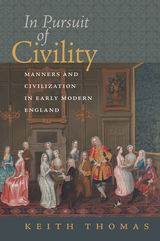 In Pursuit of Civility: Manners and Civilization in Early Modern England
Keith Thomas
Brandeis University Press, 2018 Keith Thomas’s earlier studies in the ethnography of early modern England, Religion and the Decline of Magic, Man and the Natural World, and The Ends of Life, were all attempts to explore beliefs, values, and social practices in the centuries from 1500 to 1800. In Pursuit of Civility continues this quest by examining what English people thought it meant to be “civilized” and how that condition differed from being “barbarous” or “savage.” Thomas shows that the upper ranks of society sought to distinguish themselves from their social inferiors by distinctive ways of moving, speaking, and comporting themselves, and that the common people developed their own form of civility. The belief of the English in their superior civility shaped their relations with the Welsh, the Scots, and the Irish, and was fundamental to their dealings with the native peoples of North America, India, and Australia. Yet not everyone shared this belief in the superiority of Western civilization; the book sheds light on the origins of both anticolonialism and cultural relativism. Thomas has written an accessible history based on wide reading, abounding in fresh insights, and illustrated by many striking quotations and anecdotes from contemporary sources.
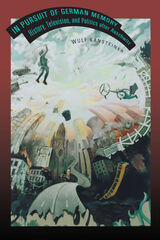 In Pursuit of German Memory: History, Television, and Politics after Auschwitz
Wulf Kansteiner
Ohio University Press, 2006 The collective memories of Nazism that developed in postwar Germany have helped define a new paradigm of memory politics. From Europe to South Africa and from Latin America to Iraq, scholars have studied the German case to learn how to overcome internal division and regain international recognition.
In Pursuit of German Memory: History, Television, and Politics after Auschwitz examines three arenas of German memory politics—professional historiography, national politics, and national public television—that have played key roles in the reinvention of the Nazi past in the last sixty years. Wulf Kansteiner shows that the interpretations of the past proposed by historians, politicians, and television producers reflect political and generational divisions and an extraordinary concern for Germany's image abroad. At the same time, each of these theaters of memory has developed its own dynamics and formats of historical reflection.
Kansteiner’s analysis of the German scene reveals a complex social geography of collective memory. In Pursuit of German Memory underscores the fact that German memories of Nazism, like many other collective memories, combine two seemingly contradictory qualities: They are highly mediated and part of a global exchange of images and story fragments but, at the same time, they can be reproduced only locally, in narrowly circumscribed networks of communication.
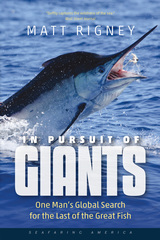 In Pursuit of Giants: One Man's Global Search for the Last of the Great Fish
Matt Rigney
University Press of New England, 2017 For millennia the great fish—marlin, bluefin tuna, and swordfish—have reigned over the world’s oceans and awed human beings. Naturalists, photographers, sportfishermen, and writers from Zane Grey to Ernest Hemingway have been inspired by their beauty, power, and sheer size. But like much other marine life today, these fish face perilous reductions in their populations due to destructive and illegal fishing, inept fisheries management practices, and dramatic changes in ocean ecology, including those wrought by climate change. In Pursuit of Giants is a moving elegy and a call to arms for the protection of these creatures, as well as a five-year, 75,000-mile global adventure story that takes author Matt Rigney on a quest to discover how once-thriving species are now threatened. Rigney’s pilgrimage to encounter these giants takes him from the sportfishing mecca of Cabo San Lucas, to the Great Barrier Reef, from New Zealand to Nova Scotia, Japan and the Mediterranean, as he joins commercial and sport fishermen, marine biologists, fish-farming pioneers, and ocean activists to investigate the dangers these species face, and the various efforts being made—or not—to protect them.
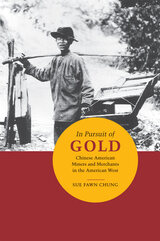 In Pursuit of Gold: Chinese American Miners and Merchants in the American West
Sue Fawn Chung
University of Illinois Press, 2011 Both a history of an overlooked community and a well-rounded reassessment of prevailing assumptions about Chinese miners in the American West, In Pursuit of Gold brings to life in rich detail the world of turn-of-the-century mining towns in the Northwest. Sue Fawn Chung meticulously recreates the lives of Chinese immigrants, miners, merchants, and others who populated these towns and interacted amicably with their white and Native American neighbors, defying the common perception of nineteenth-century Chinese communities as insular enclaves subject to increasing prejudice and violence. While most research has focused on Chinese miners in California, this book is the first extensive study of Chinese experiences in the towns of John Day in Oregon and Tuscarora, Island Mountain, and Gold Creek in Nevada. Chung illustrates the relationships between miners and merchants within the communities and in the larger context of immigration, arguing that the leaders of the Chinese and non-Chinese communities worked together to create economic interdependence and to short-circuit many of the hostilities and tensions that plagued other mining towns. Peppered with fascinating details about these communities from the intricacies of Chinese gambling games to the techniques of hydraulic mining, In Pursuit of Gold draws on a wealth of historical materials, including immigration records, census manuscripts, legal documents, newspapers, memoirs, and manuscript collections. Chung supplements this historical research with invaluable first-hand observations of artifacts that she experienced in archaeological digs and restoration efforts at several of the sites of the former booming mining towns. In clear, analytical prose, Chung expertly characterizes the movement of Chinese miners into Oregon and Nevada, the heyday of their mining efforts in the region, and the decline of the communities due to changes in the mining industry. Highlighting the positive experiences and friendships many of the immigrants had in these relatively isolated mining communities, In Pursuit of Gold also suggests comparisons with the Chinese diaspora in other locations such as British Columbia and South Africa.
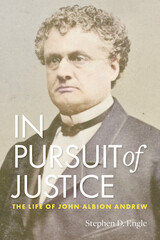 In Pursuit of Justice: The Life of John Albion Andrew
Stephen D. Engle
University of Massachusetts Press, 2023 Widely known as the “poor man’s lawyer” in antebellum Boston, John Albion Andrew (1818–1867) was involved in nearly every cause and case that advanced social and racial justice in Boston in the years preceding the Civil War. Inspired by the legacies of John Quincy Adams and Ralph Waldo Emerson, and mentored by Charles Sumner, Andrew devoted himself to the battle for equality. By day, he fought to protect those condemned to the death penalty, women seeking divorce, and fugitives ensnared by the Fugitive Slave Law. By night, he coordinated logistics and funding for the Underground Railroad as it ferried enslaved African Americans northward. In this revealing and accessible biography, Stephen D. Engle traces Andrew’s life and legacy, giving this important, but largely forgotten, figure his due. Rising to national prominence during the Civil War years as the governor of Massachusetts, Andrew raised the African American regiment known as the Glorious 54th and rallied thousands of soldiers to the Union cause. Upon his sudden death in 1867, a correspondent for Harper’s Weekly wrote, “Not since the news came of Abraham Lincoln’s death were so many hearts truly smitten.”
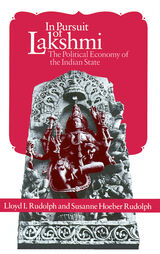 In Pursuit of Lakshmi: The Political Economy of the Indian State
Lloyd I. Rudolph and Susanne Hoeber Rudolph
University of Chicago Press, 1987 The pursuit of Lakshmi, the fickle goddess of prosperity and good fortune, is a metaphor for the aspirations of the state and people of independent India. In the latest of their distinguished contributions to South Asian studies, scholars Lloyd I. Rudolph and Susanne Hoeber Rudolph focus on this modern-day pursuit by offering a comprehensive analysis of India's political economy.
India occupies a paradoxical plane among nation states: it is both developed and underdeveloped, rich and poor, strong and weak. These contrasts locate India in the international order. The Rudolphs' theory of demand and command polities provides a general framework for explaining the special circumstances of the Indian experience.
Contrary to what one might expect in a country with great disparities of wealth, no national party, right or left, pursues the politics of class. Instead, the Rudolphs argue, private capital and organized labor in India face a "third actor"—the state. Because of the dominance of the state makes class politics marginal, the state is itself an element in the creation of the centrist-oriented social pluralism that has characterized Indian politics since independence.
In analyzing the relationship between India's politics and its economy, the Rudolphs maintain that India's economic performance has been only marginally affected by the type of regime in power—authoritarian or democratic. More important, they show that rising levels of social mobilization and personalistic rule have contributed to declining state capacity and autonomy. At the same time, social mobilization has led to a more equitable distribution of economic benefits and political power, which has enhanced the state's legitimacy among its citizens.
The scope and explanatory power of In Pursuit of Lakshmi will make it essential for all those interested in political economy, comparative politics, Asian studies and India.
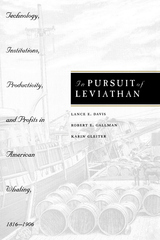 In Pursuit of Leviathan: Technology, Institutions, Productivity, and Profits in American Whaling, 1816-1906
Lance E. Davis, Robert E. Gallman, and Karin Gleiter
University of Chicago Press, 1997 In Pursuit of Leviathan traces the American whaling industry from its rise in the 1840s to its precipitous fall at the end of the nineteenth century. Using detailed and comprehensive data that describe more than four thousand whaling voyages from New Bedford, Massachusetts, the leading nineteenth-century whaling port, the authors explore the market for whale products, crew quality and labor contracts, and whale biology and distribution, and assess the productivity of the American fleet. They then examine new whaling techniques developed at the end of the nineteenth century, such as modified clippers and harpoons, and the introduction of darting guns. Despite the common belief that the whaling industry declined due to a fall in whale stocks, the authors argue that the industry's collapse was related to changes in technology and market conditions.
Providing a wealth of historical information, In Pursuit of Leviathan is a classic industry study that will provide intriguing reading for anyone interested in the history of whaling.
 In Pursuit of Peace in Israel and Palestine
Gershon Baskin
Vanderbilt University Press, 2017 Gershon Baskin's memoir of thirty-eight years of intensive pursuit of peace begins with a childhood on Long Island and a bar mitzvah trip to Israel with his family. Baskin joined Young Judaea back in the States, then later lived on a kibbutz in Israel, where he announced to his parents that he had decided to make aliya, emigrate to Israel. They persuaded him to return to study at NYU, after which he finally emigrated under the auspices of Interns for Peace. In Israel he spent a pivotal two years living with Arabs in the village of Kufr Qara.
Despite the atmosphere of fear, Baskin found he could talk with both Jews and Palestinians, and that very few others were engaged in efforts at mutual understanding. At his initiative, the Ministry of Education and the office of right-wing prime minister Menachem Begin created the Institute for Education for Jewish-Arab Coexistence with Baskin himself as director. Eight years later he founded and codirected the only joint Israeli-Palestinian public policy think-and-do tank in the world, the Israel/Palestine Center for Research and Information. For decades he continued to cross borders, often with a kaffiyeh (Arab headdress) on his dashboard to protect his car in Palestinian neighborhoods. Airport passport control became Kafkaesque as Israeli agents routinely identified him as a security threat.
During the many cycles of peace negotiations, Baskin has served both as an outside agitator for peace and as an advisor on the inside of secret talks—for example, during the prime ministership of Yitzhak Rabin and during the initiative led by Secretary of State John Kerry. Baskin ends the book with his own proposal, which includes establishing a peace education program and cabinet-level Ministries of Peace in both countries, in order to foster a culture of peace.
 In Pursuit of Prosperity: Industrial Policy and the Politics of Economic Upgrading
Charles R. Hankla
University of Michigan Press, 2025 With so many states committed to economic transformation, and so many experts ready to provide technical advice on how to achieve it, why does progress so often remain elusive? In Pursuit of Prosperity examines the process of economic upgrading—moving to more valuable activities in production, improving technology, knowledge, and skills, and participating in global value chains—and develops a new theory to explain the form and success of national policies designed to promote it.
Using a mixed-methods approach, Charles R. Hankla draws upon archival research and interviews from France and India as well as quantitative models of sixteen countries across six decades. He finds that when state and private actors are aligned in their institutional structures, which can happen in both corporatist and pluralist systems, industrial policy tends to be more effective. It is when the state or the private sector independently dominates industrial policy that poor outcomes are most likely. As In Pursuit of Prosperity shows, rather than being fixed characteristics of countries, policymaking styles vary across time and across sectors of the economy, reflecting the changing power dynamics and organizational resources of stakeholders. The book sheds light on how industrial policy—which is experiencing a comeback in the United States and beyond—can best be harnessed for upgrading. It offers a valuable contribution to our understanding of the complex relationship between state politics and economic performance in the modern globalized world.
In Pursuit of Status: The Making of South Korea’s “New” Urban Middle Class
Denise Potrzeba Lett
Harvard University Press, 1998 In this ethnography of the everyday life of contemporary Korea, Denise Lett argues that South Korea's contemporary urban middle class not only exhibits upper-class characteristics but also that this reflects a culturally inherited disposition of Koreans to seek high status. Lett shows that Koreans have adapted traditional ways of asserting high status to modern life, and analyzes strategies for claiming high status in terms of occupation, family, lifestyle, education, and marriage.
The Harvard-Hallym Series on Korean Studies, published by the Harvard Council on East Asian Studies, is supported by the Korean Institute of Harvard and Hallym University in Korea. The series is committed to the publication of outstanding new scholarly work on Korea, regardless of discipline, in both the humanities and the social sciences.
 In Pursuit of the Gene: From Darwin to DNA
James Schwartz
Harvard University Press, 2008 The mystery of inheritance has captivated thinkers since antiquity, and the unlocking of this mystery—the development of classical genetics—is one of humanity’s greatest achievements. This great scientific and human drama is the story told fully and for the first time in this book.
Acclaimed science writer James Schwartz presents the history of genetics through the eyes of a dozen or so central players, beginning with Charles Darwin and ending with Nobel laureate Hermann J. Muller. In tracing the emerging idea of the gene, Schwartz deconstructs many often-told stories that were meant to reflect glory on the participants and finds that the “official” version of discovery often hides a far more complex and illuminating narrative. The discovery of the structure of DNA and the more recent advances in genome science represent the culmination of one hundred years of concentrated inquiry into the nature of the gene. Schwartz’s multifaceted training as a mathematician, geneticist, and writer enables him to provide a remarkably lucid account of the development of the central ideas about heredity, and at the same time bring to life the brilliant and often eccentric individuals who shaped these ideas.
In the spirit of the late Stephen Jay Gould, this book offers a thoroughly engaging story about one of the oldest and most controversial fields of scientific inquiry. It offers readers the background they need to understand the latest findings in genetics and those still to come in the search for the genetic basis of complex diseases and traits.
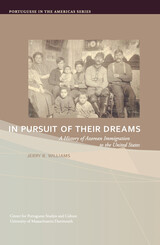 In Pursuit of Their Dreams: A History of Azorean Immigration to the United States
Jerry R. Williams
Tagus Press, 2007 Jerry Williams' history of Azorean immigration to the United States offers us valuable insight into the experience and culture of Portuguese immigrants and their descendents. This account fills a major gap in American immigration history and gives us a comprehensive overview of how Portuguese-Americans—now numbering close to a million people—have come to constitute a vibrant and highly visible presence within southeastern New England, the areas around San Francisco and San Diego, Hawaii, and the New Jersey/New York metropolitan area. Even though Azorean immigrants all came from similar cultural and social backgrounds, Williams shows how regionally specific opportunity structures and social hierarchies have contributed to significant differences within the Portuguese-American experience.
Starting with the whaling routes that first connected the mid-Atlantic archipelago with the ports of call in New England and California in the early 1800s, Williams lays out the complex relationship between the Azores and the US that has continued into the present. We learn how particular patterns of poverty, overpopulation and social inequality in the Azores pushed large numbers of the islands' inhabitants to leave their homes in search of better opportunities for themselves and their children. He tells the story of how the early whalers who jumped ship in New Bedford, San Francisco, or Hawaii were followed by kin and fellow villagers who had heard of plentiful jobs in New England's textile mills, gold and land in California, or agricultural work on Hawaiian plantations. Williams' account allows us to understand the importance of family and community connections throughout the immigrants' arduous transition from peasant life to industrial society.
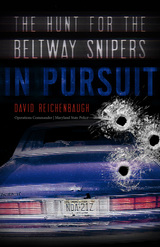 In Pursuit: The Hunt for the Beltway Snipers
David Reichenbaugh
University Press of New England, 2018 October 2, 2002. A bullet pierced the window of a crafts store in Maryland, just missing the cashier. But other bullets hit their targets. In Pursuit follows the hunt for the Beltway snipers during the twenty-three-day shooting spree that terrorized Maryland, Virginia, and the District of Columbia. David Reichenbaugh—the criminal intelligence operations commander for the Maryland State Police, and commanding officer at the scene during the snipers’ capture in Myersville, Maryland—played a major role in the investigation from the first day of the killing spree through its final act, as the snipers were cornered in a rest area in western Maryland. He is one of very few people who know the complete details of the investigation and capture of the snipers. Working against the clock with few clues and little evidence, hundreds of investigators from federal, state, county, and city law enforcement agencies struggled to find answers to the questions: Who were the killers? Was their choice of victims random? And most of all, Why did they kill? When the killers began leaving notes to taunt the police, investigators were finally able to begin assembling a picture, piercing the fog of uncertainty and terror that filled the region.
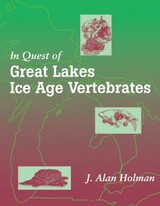 In Quest of Great Lakes Ice Age Vertebrates
J. Alan Holman
Michigan State University Press, 2001
The first book of its kind, In Quest of Great Lakes Ice Age Vertebrates details the Ice Age fishes, amphibians, reptiles, birds and mammals in the provinces and states surrounding the Great Lakes. Holman's work begins with definitions of concepts and terms for the general audience and a general discussion of how the last ice age, the Pleistocene Epoch, affected our physical and biological world. Methods employed and tools used in the collection of vertebrate fossils, as well as ethics and protocol in the maintenance of a useful collection follow, coupled with details of each animal's structure, habits, habitats, and ecological importance. The heart of the book is a species-by-species account of the Pleistocene vertebrates of the region, followed by an examination of the compelling problems of the Pleistocene relative to faunal interpretations, including overall ecological makeup of the region's fauna, vertebrate range adjustment that occurred in the region, Pleistocene extinction effects on the animals of the region, the aftermath of the Ice Age, and a look at what the future may hold for the region.
In Quest of History: On Czech Statehood and Identity
Jirí Pribán and Karel Hvíždala
Karolinum Press, 2019 In honor of the 2018 centennial of Czech independence, philosopher of law Jiří Přibán and award-winning Czech journalist Karel Hvížďala took the opportunity to examine key moments in Czech history from the ninth century to the twenty-first. Covering such a broad span of time allowed them to look into the past and question how Czechs have viewed their history at different points—and what that means for the Czech present and future. As contemporary politics drift closer towards totalitarianism, historiography from scholars and thinkers who experienced twentieth-century totalitarian regimes is more important than ever. In their spirited dialogue, Hvížďala and Přibán raise and explore these crucial issues, sharing subjects normally reserved for university seminars with the broader public.
In Quest of the Ordinary: Lines of Skepticism and Romanticism
Stanley Cavell
University of Chicago Press, 1988 These lectures by one of the most influential and original philosophers of the twentieth century constitute a sustained argument for the philosophical basis of romanticism, particularly in its American rendering. Through his examination of such authors as Emerson, Thoreau, Poe, Wordsworth, and Coleridge, Stanley Cavell shows that romanticism and American transcendentalism represent a serious philosophical response to the challenge of skepticism that underlies the writings of Wittgenstein and Austin on ordinary language.
 In quibus visitabit nobis, oriens ex alto: Studies Offered in Honor of Father Robert J. Kaslyn, SJ (1956-2019)
Kurt Martens
Catholic University of America Press, 2025 On March 13, 2019, five years ago, Fr. Robert Kaslyn S.J., passed away. He was a dear friend, colleague, mentor and so much more to many. In honor of him, his colleagues, former students, and friends from the academy and beyond honor him and his legacy with a festschrift dedicated to him. Because his outreach went beyond the field of canon law, the contributions in this volume go also beyond the strict canon law and include contributions from other fields, such as law and social work. Each of the contributors have written an academic article on a topic of their choice in honor of their
friend. The contributors are, in alphabetical order: Nancy Bauer, John Beal, Philip Brown, William Daniel, Zabrina Decker, Eileen Dombo, Sarah Duggin, Robert Geisinger, Eduard Giurgi, Mary Graw Leary, William King, John Chrysostom Kozlowski, Jeannine Marino, Kurt Martens, Rose McDermott, Robert Oliver, Ladislas Orsy, Roch Pagé, Kenneth Pennington, Sean Sheridan, Patrick Valdrini.
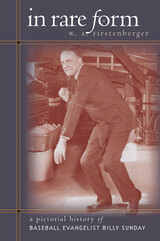 In Rare Form: A Pictorial History of Baseball Evangelist Billy Sunday
W. A. Firstenberger
University of Iowa Press, 2005 From 1896 to 1935, the flamboyant and controversial Billy Sunday preached his version of the gospel to millions of people across the nation. In this nontraditional biography of the man regarded by his enthralled fans as God's unconventional messenger to a sinful world, the curator of the Billy Sunday Historic Site Museum recreates Sunday’s life through a material culture lens. W. A. Firstenberger views the photographic record and the print record as well as the landscape, structure, and contents of the Sunday home in Winona Lake, Indiana, to give us an intimate view of Sunday and his family.
Through an organizational scheme that incorporates memorabilia from childhood (samplers, Civil War badges), baseball (Billy’s 1891 Philadelphia contract, scorecards), evangelism (cartoons, books such as Monkeys and Missing Links), social issues (KKK ads endorsing Sunday, his Women's Christian Temperance life membership certificate), life style (Arts and Crafts decorative pieces, extensive photos of the family's Mount Hood bungalow), and family relations (his personal possessions and those of his wife, Nell, and their children), In Rare Form brings together the inconsistencies between Sunday’s material world and his spiritual world.
Since Sunday might have objected to a materialistic analysis of his life, Firstenberger has allowed him a say: each section of the book begins with an apt quote from Sunday’s sermons and writings. Firstenberger also includes appendixes providing detailed information on Sunday’s revivals and speaking appearances, his 870,075 documented converts, the members of his evangelistic team, the overall structure of his family, and an extensive bibliography. Acknowledging Sunday’s faults and contradictions alongside his heroic accomplishments, the author presents a wryly insightful and innovative perspective on this larger-than-life figure.
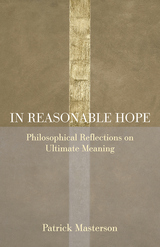 In Reasonable Hope: Philosophical Reflections on Ultimate Meaning
Patrick Masterson
Catholic University of America Press, 2021 In Reasonable Hope considers three foundational responses to this quest for some understanding of the existence, meaning, and value of everything. Other approaches can be considered as combinations or variations of these. Firstly, there is the approach which claims that it is our humanity, exercising its unique intelligent subjectivity, that is the source and measure of all possible meaning and value. Nothing can be thought of as existing, meaningful or of value apart from a thinking human subject. This is a broadly Humanist approach to ultimate meaning. Man is the measure of all things. Secondly, there is the approach of Scientism. This claims that an ultimate understanding of the world and ourselves must be sought, less anthropocentrically, in terms of the findings of basic empirical sciences such as physics and chemistry. We live in a world ever-increasingly dominated by the autonomous system of science and technology. Such Scientism implies an explicitly reductionist and materialist conception of the meaning and value of everything. Thirdly, there is the approach of Theism which maintains that, in the final analysis, the meaning and value of everything, insofar as this can be known, is to be explained in terms of a transcendent infinitely perfect personal being we call God.
The first two approaches are carefully considered. However, it is the third to which most attention is devoted. Consideration is given to the traditional impersonal metaphysical approach to questions about the existence and nature of God. The alternative approaches of linguistic philosophy and phenomenology, which reject such metaphysical speculation are also discussed. These various approaches are judged to be complementary rather than strict alternatives.
In the latter half of the book is devoted to a more personal and self-involving discussion of the relevance of an affirmation of the existence of God. It explores the implications of a rational commitment to live one's life in accordance with the requirements of values which transcend explanation in purely physical terms, such as truth, goodness, beauty, and especially love. It provides a personal and existential development of the rational hope that such values are ultimately more objectively real and dependable than the eventual universal material chaos predicted by empirical science. It argues that the existence of God as the infinite expression and source of these values is the necessary and sufficient condition of this rational hope in their enduring significance. Finally, there is an account of how the Christian Revelation illuminates and transforms our rational hope in the enduring significance of love of God and neighbor.
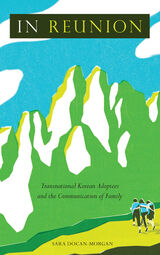 In Reunion: Transnational Korean Adoptees and the Communication of Family
Docan-Morgan, Sara
Temple University Press, 2024 “Do you know your real parents?” is a question many adoptees are asked. In In Reunion, Sara Docan-Morgan probes the basic notions of family, adoption, and parenthood by exploring initial meetings and ongoing relationships that transnational Korean adoptees have had with their birth parents and other birth family members. Drawing from qualitative interviews with adult Korean adoptees in the United States and Denmark, as well as her own experiences as an adoptee, Docan-Morgan illuminates the complexities of communication surrounding reunion.
The paradoxes of adoption and reunion—shared history without blood relations, and blood relations without shared history—generate questions: What does it mean to be “family”? How do people use communication to constitute family relationships? How are family relationships created, maintained, and negotiated over time? In Reunion details adoptive and cultural identities, highlighting how adoptees often end up shouldering communicative responsibility in their family relationships. Interviews reveal how adoptees navigate birth family relationships across language and culture while also attempting to maintain relationships with their adoptive family members.
Docan-Morgan details the challenges, rewards, and contradictions of reunion. She also offers practical recommendations for transnational adoptees in reunion, adoptees considering reunion, adoptive families, and adoption practitioners.
In tracing the stories of the intercultural dynamics inherent in adoptees’ reunions, Docan-Morgan demonstrates the effort, flexibility, empathy, self-reflection, and time required to navigate long-term relationships with birth families.
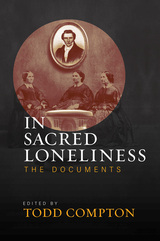 In Sacred Loneliness: The Documents
Todd Compton
Signature Books, 2022 Plural marriage in the Nauvoo era of LDS Church history has long been a fascinating subject. To understand it fully requires one to look at it from the perspective of the man who introduced it, but just as crucial is a dive into the lives of the women he married, all who have their stories to tell. In his 1997 award-winning study, In Sacred Loneliness: The Plural Wives of Joseph Smith, Todd Compton focused on the thirty-three women who he could demonstrate that Smith married, providing life stories of many who were well-known and others who have been largely forgotten. In his new work, In Sacred Loneliness: The Documents, Compton returns to his subject and provides the raw materials that helped him create his original study, writings composed by the women themselves.
This volume includes many autobiographical writings, diaries, and letters, with Compton providing annotations and introductory material that illuminates these crucial primary sources. This allows readers to take their understanding of this unique group of women to a new level and to drive home that fact that their lives go far beyond the Nauvoo experiment that forever links them to Mormonism’s founding prophet.
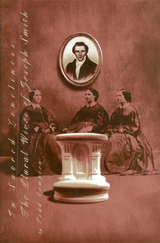 In Sacred Loneliness: The Plural Wives of Joseph Smith
Todd Compton
Signature Books, 1997 Beginning in the 1830s, at least thirty-three women married Joseph Smith, the founder of Mormonism. These were passionate relationships which also had some longevity, except in cases such as that of two young sisters, one of whom was discovered by Joseph’s first wife, Emma, in a locked bedroom with the prophet. Emma remained a steadfast opponent of polygamy throughout her life.
The majority of Smith’s wives were younger than he, and one-third were between fourteen and twenty years of age. Another third were already married, and some of the husbands served as witnesses at their own wife’s polyandrous wedding. In addition, some of the wives hinted that they bore Smith children—most notably Sylvia Sessions’s daughter Josephine—although the children carried their stepfather’s surname.
For all of Smith’s wives, the experience of being secretly married was socially isolating, emotionally draining, and sexually frustrating. Despite the spiritual and temporal benefits, which they acknowledged, they found their faith tested to the limit of its endurance. After Smith’s death in 1844, their lives became even more “lonely and desolate.” One even joined a convent. The majority were appropriated by Smith’s successors, based on the Old Testament law of the Levirate, and had children by them, though they considered these guardianships unsatisfying. Others stayed in the Midwest and remarried, while one moved to California. But all considered their lives unhappy, except for the joy they found in their children and grandchildren.
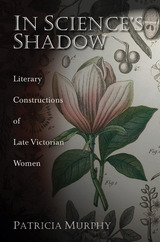 In Science's Shadow: Literary Constructions of Late Victorian Women
Patricia Murphy
University of Missouri Press, 2006 The Victorian era was characterized by great scientific curiosity—as exemplified by the publication of Darwin’s Descent of Man—as well as by new questions regarding the place of women in society. Patricia Murphy now explores the tenuous interplay of gender and science to show how the era’s literature both challenged and reinforced a constrictive role for Victorian women. Focusing on a specific body of literature involving women intensely associated with scientific pursuits, and examining selected noncanonical writings—both fictional and nonfictional representations of scientific women—Murphy demonstrates how these works informed the “Woman Question” by reinforcing or rejecting presumed truths about gender and science. Some of these texts offer lucid insights into the ways in which women were defined, marginalized, and excluded. In his novel Two on a Tower, Thomas Hardy presented science as a masculine realm threatened by female intrusion, while Wilkie Collins in Heart and Science depicted a woman interested in science as a villainous schemer who falls far short of the Victorian ideal of femininity. And although Charles Reade’s novel A Woman-Hater was more sympathetic in its portrayal of a female physician, it continued to reinforce Victorian stereotypes. In contrast, Murphy also shows us the poetry of science enthusiast Constance Naden, who used the language of the discipline to reflect its marginalization of women. Murphy also uses the travel memoirs of botanical painter Marianne North, which reveal her attempts to achieve a gender-neutral voice to position her work within the Victorian scientific realm. Through the words of these women, Murphy shows how popular notions of women’s inferiority and marginality were internalized and addressed. These close readings further elucidate the status of women in late-nineteenth-century England and show how prejudices about women’s intellectual inferiority infiltrated popular culture. In Science’s Shadow makes new inroads in the study of gendered scientific discourse while introducing readers to some little-known, but most revealing, literary works
In Search of a Home: Rental and Shared Housing in Latin America
Alan Gilbert
University of Arizona Press, 1993 Based on three extensive surveys carried out by research teams from Caracas, Mexico City, and Santiago, In Search of a Home investigates the nature of owners, tenants, sharers, and landlords and exploring the relationships between them.
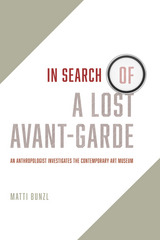 In Search of a Lost Avant-Garde: An Anthropologist Investigates the Contemporary Art Museum
Matti Bunzl
University of Chicago Press, 2014 In 2008, anthropologist Matti Bunzl was given rare access to observe the curatorial department of Chicago’s Museum of Contemporary Art. For five months, he sat with the institution’s staff, witnessing firsthand what truly goes on behind the scenes at a contemporary art museum. From fund-raising and owner loans to museum-artist relations to the immense effort involved in safely shipping sixty works from twenty-seven lenders in fourteen cities and five countries, Matti Bunzl’s In Search of a Lost Avant-Garde illustrates the inner workings of one of Chicago’s premier cultural institutions.
Bunzl’s ethnography is designed to show how a commitment to the avant-garde can come into conflict with an imperative for growth, leading to the abandonment of the new and difficult in favor of the entertaining and profitable. Jeff Koons, whose massive retrospective debuted during Bunzl's research, occupies a central place in his book and exposes the anxieties caused by such seemingly pornographic work as the infamous Made in Heaven series. Featuring cameos by other leading artists, including Liam Gillick, Jenny Holzer, Karen Kilimnik, and Tino Sehgal, the drama Bunzl narrates is palpable and entertaining and sheds an altogether new light on the contemporary art boom.
In Search of a Nation: Histories of Authority & Dissidence in Tanzania
Gregory H. Maddox
Ohio University Press, 2005 The double-sided nature of African nationalism—its capacity to inspire expressions of unity, and its tendency to narrow political debate—are explored by sixteen historians, focusing on the experience of Tanzania. The narrative of the nation of Tanzania, which was created by the anticolonial nationalist movement, expanded by the Union after the Zanzibar Revolution, and fused by the ideology of Ujamaa by Julius Nyerere, has shaped Tanzanian political discourse for decades, but has not obliterated the great wealth of political discourses and identities which exist within the nation.
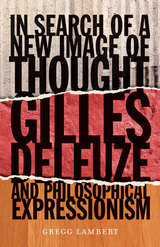 In Search of a New Image of Thought: Gilles Deleuze and Philosophical Expressionism
Gregg Lambert
University of Minnesota Press, 2012 Gregg Lambert demonstrates that since the publication of Proust and Signs in 1964 Gilles Deleuze’s search for a new means of philosophical expression became a central theme of all of his oeuvre, including those written with psychoanalyst Félix Guattari. Lambert, like Deleuze, calls this “the image of thought.” Lambert’s exploration begins with Deleuze’s earliest exposition of the Proustian image of thought and then follows the “tangled history” of the image that runs through subsequent works, such as Kafka: Toward a Minor Literature, The Rhizome (which serves as an introduction to Deleuze’s A Thousand Plateaus), and several later writings from the 1980s collected in Essays Critical and Clinical. Lambert shows how this topic underlies Deleuze’s studies of modern cinema, where the image of thought is predominant in the analysis of the cinematic image—particularly in The Time-Image. Lambert finds it to be the fundamental concern of the brain proposed by Deleuze in the conclusion of What Is Philosophy?
By connecting the various appearances of the image of thought that permeate Deleuze’s entire corpus, Lambert reveals how thinking first assumes an image, how the images of thought become identified with the problem of expression early in the works, and how this issue turns into a primary motive for the more experimental works of philosophy written with Guattari. The study traces a distinctly modern relationship between philosophy and non-philosophy (literature and cinema especially) that has developed into a hallmark of the term “Deleuzian.” However, Lambert argues, this aspect of the philosopher’s vision has not been fully appreciated in terms of its significance for philosophy: “not only ‘for today’ but, to quote Nietzsche, meaning also ‘for tomorrow, and for the day after tomorrow.’”
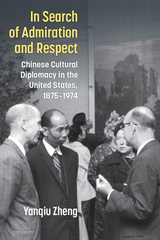 In Search of Admiration and Respect: Chinese Cultural Diplomacy in the United States, 1875–1974
Yanqui Zheng
University of Michigan Press, 2024 In Search of Admiration and Respect examines the institutionalization of Chinese cultural diplomacy in the period between high imperialism and the international ascendance of the People’s Republic of China. During these years, Chinese intellectuals and officials tried to promote the idea of China’s cultural refinement in an effort to combat negative perceptions of the nation. Yanqiu Zheng argues that, unlike similar projects by more established powers, Chinese cultural diplomacy in this era was not carried out solely by a functional government agency; rather, limited resources forced an uneasy collaboration between the New York-based China Institute and the Chinese Nationalist government.
In Search of Admiration and Respect uses the Chinese case to underscore what Zheng calls “infrastructure of persuasion,” in which American philanthropy, museums, exhibitions, and show business had disproportionate power in setting the agenda of unequal intercultural encounters. This volume also provides historical insights into China’s ongoing quest for international recognition. Drawing upon diverse archival sources, Zheng expands the contours of cultural diplomacy beyond established powers and sheds light on the limited agency of peripheral nations in their self-representation.
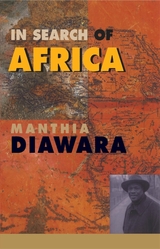 In Search of Africa
Manthia Diawara
Harvard University Press, 2000 "There I was, standing alone, unable to cry as I said goodbye to Sidimé Laye, my best friend, and to the revolution that had opened the door of modernity for me--the revolution that had invented me." This book gives us the story of a quest for a childhood friend, for the past and present, and above all for an Africa that is struggling to find its future.
In 1996 Manthia Diawara, a distinguished professor of film and literature in New York City, returns to Guinea, thirty-two years after he and his family were expelled from the newly liberated country. He is beginning work on a documentary about Sékou Touré, the dictator who was Guinea's first post-independence leader. Despite the years that have gone by, Diawara expects to be welcomed as an insider, and is shocked to discover that he is not.
The Africa that Diawara finds is not the one on the verge of barbarism, as described in the Western press. Yet neither is it the Africa of his childhood, when the excitement of independence made everything seem possible for young Africans. His search for Sidimé Laye leads Diawara to profound meditations on Africa's culture. He suggests solutions that might overcome the stultifying legacy of colonialism and age-old social practices, yet that will mobilize indigenous strengths and energies.
In the face of Africa's dilemmas, Diawara accords an important role to the culture of the diaspora as well as to traditional music and literature--to James Brown, Miles Davis, and Salif Kéita, to Richard Wright, Spike Lee, and the ancient epics of the griots. And Diawara's journey enlightens us in the most disarming way with humor, conversations, and well-told tales.
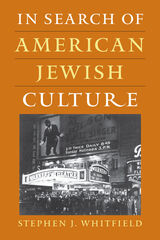 In Search of American Jewish Culture
Stephen J. Whitfield
Brandeis University Press, 2001 In drama and in musical comedy, in popular song and in symphonic music, in movies and in literature, Jews have contributed to American culture in the 20th century to a degree out of all proportion to their numbers. But does this vast creative output coalesce into something identifiable as an American Jewish culture? Stephen J. Whitfield answers this question with a resounding "yes!" Whitfield focuses on areas where the specifically Jewish contribution has been little explored. He surveys such fields as popular music, musical theater, and drama, focusing on key figures from Jerome Kern and the Gershwins to Stephen Sondheim and Jerome Robbins; Leonard Bernstein and Aaron Copland to Irving Berlin and Bob Dylan; Arthur Miller and Lillian Hellman to David Mamet and Wendy Wasserstein. At the same time, Whitfield tackles the complex issue of race and American Jewish culture, tracing the extensive interpenetrations of Jewish and African American music. He also offers a stunning examination of Jewish American representations of the Holocaust, focusing on stage and film adaptations of Anne Frank's Diary and on Steven Spielberg's Schindler's List. In a poignant, final chapter, Whitfield ponders the future of American Jewish culture after a century of assimilationist pressure and mainstream success. The distinctive culture that he has traced through the 20th century, Whitfield concludes, may finally become submerged and lost. Only a renewed emphasis on Judaism itself, he believes, offers the hope for American Jews to maintain the dual cultural identities that they have so long succeeded in nurturing.
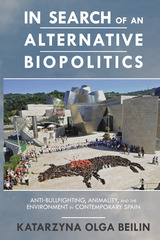 In Search of an Alternative Biopolitics: Anti-Bullfighting, Animality, and the Environment in Contemporary Spain
Katarzyna Olga Beilin
Ohio State University Press, 2015 In Search of an Alternative Biopolitics: Anti-Bullfighting, Animality, and the Environment in Contemporary Spain by Katarzyna Olga Beilin takes readers on a journey through the history of alternative thought that challenges mainstream understandings of the relations between the human and nonhuman realms. Weaving through the works of Mariano José de Larra, Eugenio Noel, Luis Buñuel, Luis Martín-Santos, Pedro Almodóvar, Pablo Bérguer, Juan Mayorga, and Rosa Montero, Beilin convincingly demonstrates that “the question of the animal” has long been of particular significance for Spanish culture.
Analyses of the synergy of press debates on bullfighting and the War on Terror, as well as media debates on King Juan Carlos’s hunt in Botswana and his resignation, reveal how the concepts structuring human/animal relations condition national biopolitics. Beilin traces a main principle, where sacrifice of some lives is deemed necessary for the sake of others, from bullfighting, through environmental destruction and immigration policies, to bioeconomy. Ultimately, In Search of an Alternative Biopolitics argues that to address ever-increasing threats of global warming and future catastrophes, we urgently need to redefine concepts structuring the human and the nonhuman realms.
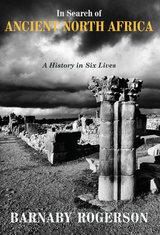 In Search of Ancient North Africa: A History in Six Lives
Barnaby Rogerson
Haus Publishing, 2019 During years of travelling through North Africa, author Barnaby Rogerson has encountered a handful of stories so complicated that he could not place them into neat, tidy narratives. These are stories of characters who were neither distinctly good nor noticeably bad, neither malicious nor noble. In Search of Ancient North Africa is a journey into the ruins of a landscape to make sense of these stories through the multilayered lives of six individuals. Rogerson digs into the lives of Queen Dido, who was a sacrificial refugee; King Juba II, a prisoner of war who became a compliant tool of the Roman Empire; Septimius Severus, an unpromising provincial who, as its leader, brought his empire to its dazzling apogee; St. Augustine, an intellectual careerist who became a bishop and a saint; Hannibal, the greatest general the world has ever known; and Masinissa, the man who eventually defeated him. Together these six lives, clouded with as much myth as fact, are characters that represent classical North Africa. Among these life stories, we explore ruins and monuments tell of their lives and see the multiple connections that bind the culture of this region with the wider world, particularly the spiritual traditions of the ancient Near East.
In Search of Ancient North Africa sheds new light on a time and place at the crossroads of numerous histories and cultures. It offers the first history of ancient North Africa told through the lives of North Africans themselves.
In Search of "Aryan Blood": Serology in Interwar and National Socialist Germany
Rachel E. Boaz
Central European University Press, 2012 Explores the course of development of German seroanthropology from its origins in World War I until the end of the Third Reich. Gives an all encompassing interpretation of how the discovery of blood groups in around 1900 galvanised not only old mythologies of blood and origin but also new developments in anthropology and eugenics in the 1920s and 1930s. Boaz portrays how the personal motivations of blood scientists influenced their professional research, ultimately demonstrating how conceptually indeterminate and politically volatile the science of race was under the Nazi regime.
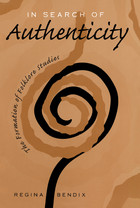 In Search of Authenticity: The Formation of Folklore Studies
Regina Bendix
University of Wisconsin Press, 1997 Authenticity is a notion much debated, among discussants as diverse as cultural theorists and art dealers, music critics and tour operators. The desire to find and somehow capture or protect the “authentic” narrative, art object, or ceremonial dance is hardly new. In this masterful examination of German and American folklore studies from the eighteenth century to the present, Regina Bendix demonstrates that the longing for authenticity remains deeply implicated in scholarly approaches to cultural analysis.
Searches for authenticity, Bendix contends, have been a constant companion to the feelings of loss inherent in modernization, forever upholding a belief in a pristine yet endangered cultural essence and fueling cultural nationalism worldwide. Beginning with precursors of Herder and Emerson and the “discovery” of the authentic in expressive culture and literature, she traces the different, albeit intertwined, histories of German Volkskunde and American folklore studies. A Swiss native educated in American folklore programs, Bendix moves effortlessly between the two traditions, demonstrating how the notion of authenticity was used not only to foster national causes, but also to lay the foundations for categories of documentation and analysis within the nascent field of folklore studies.
Bendix shows that, in an increasingly transcultural world, where Zulu singers back up Paul Simon and where indigenous artists seek copyright for their traditional crafts, the politics of authenticity mingles with the forces of the market. Arguing against the dichotomies implied in the very idea of authenticity, she underscores the emptiness of efforts to distinguish between folklore and fakelore, between echt and ersatz.
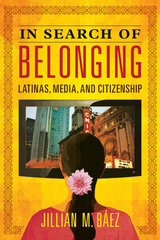 In Search of Belonging: Latinas, Media, and Citizenship
Jillian M Baez
University of Illinois Press, 2018 In Search of Belonging explores the ways Latina/o audiences in general, and women in particular, make sense of and engage both mainstream and Spanish-language media. Jillian M. Báez’s eye-opening ethnographic analysis draws on the experiences of a diverse group of Latinas in Chicago. In-depth interviews reveal Latinas viewing media images through a lens of citizenship. These women search for nothing less than recognition—and belonging—through representations of Latinas in films, advertising, telenovelas, and TV shows like Ugly Betty and Modern Family. Báez's personal interactions and research merge to create a fascinating portrait, one that privileges the perspectives of the women themselves as they consume media in complex, unpredictable ways. Innovative and informed by a wealth of new evidence, In Search of Belonging answers important questions about the ways Latinas perform citizenship in today’s America.
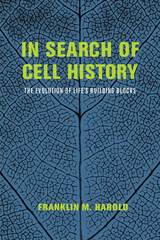 In Search of Cell History: The Evolution of Life's Building Blocks
Franklin M. Harold
University of Chicago Press, 2014 The origin of cells remains one of the most fundamental problems in biology, one that over the past two decades has spawned a large body of research and debate. With In Search of Cell History, Franklin M. Harold offers a comprehensive, impartial take on that research and the controversies that keep the field in turmoil.
Written in accessible language and complemented by a glossary for easy reference, this book investigates the full scope of cellular history. Assuming only a basic knowledge of cell biology, Harold examines such pivotal subjects as the relationship between cells and genes; the central role of bioenergetics in the origin of life; the status of the universal tree of life with its three stems and viral outliers; and the controversies surrounding the last universal common ancestor. He also delves deeply into the evolution of cellular organization, the origin of complex cells, and the incorporation of symbiotic organelles, and considers the fossil evidence for the earliest life on earth. In Search of Cell History shows us just how far we have come in understanding cell evolution—and the evolution of life in general—and how far we still have to go.
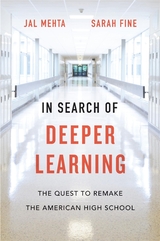 In Search of Deeper Learning: The Quest to Remake the American High School
Jal Mehta and Sarah Fine
Harvard University Press, 2019 Winner of the Grawemeyer Award
“In their brave search for depth in American high schools, scholars Jal Mehta and Sarah Fine suffered many disappointments…Undeterred, they spent 750 hours observing classes, interviewed more than 300 people, and produced the best book on high school dynamics I have ever read.”
—Jay Mathews, Washington Post
“A hopeful, easy-to-read narrative on what the best teachers do and what deep, engaging learning looks like for students. Grab this text if you’re looking for a celebration of what’s possible in American schools.”
—Edutopia
“This is the first and only book to depict not just the constraints on good teaching, but also how good teachers transcend them. A superb book in every way: timely, lively, and entertaining.”
—Jonathan Zimmerman, University of Pennsylvania
What would it take to transform our high schools into places capable of supporting deep learning for students across a wide range of aptitudes and interests? To find out, Jal Mehta and Sarah Fine spent hundreds of hours observing and talking to teachers and students in and out of the classroom at thirty of the country’s most innovative schools. To their dismay, they discovered that deeper learning is more often the exception than the rule. And yet they found pockets of powerful learning at almost every school, often in extracurriculars but also in a few mold-breaking academic courses. So what must schools do to achieve the integrations that support deep learning: rigor with joy, precision with play, mastery with identity and creativity?
In Search of Deeper Learning takes a deep dive into the state of our schools and lays out an inspiring new vision for American education.
In Search of Divine Reality: Science as a Source of Inspiration
Lothar Schäfer
University of Arkansas Press, 1997 The message of modern physics is that physical reality has, at its frontiers, all the aspects of a transcendent order. At the foundation of things, elementary particles can exert instantaneous long-distance influences on each other, can be meaningfully said to have mind-like properties, and can exist in states which are, as Heisenberg wrote, “not quite real, but between the idea of a thing and a real thing.” Thus, just as dead atoms form living organisms and stupid molecules form intelligent brains, metaphysical entities form physical reality. This remarkable book clearly explains the concepts of quantum physics in order to show how science and spirituality are not separate.
 In Search of Donna Reed
Jay Fultz
University of Iowa Press, 2001 But who was Donna Reed? Perhaps no celebrity of her symbolic importance is so little known. Moving from the backroads of Iowa to the mansions of Bel Air, Jay Fultz goes in search of the woman behind the image. In Search of Donna Reed reveals a woman whose intelligence and force of character often put her at odds with the roles she portrayed both on and off screen. Reed, always angered by the treatment of women in Hollywood, turned political activist in middle age, confronting for the first time the arrogance of power. She was, said writer Barbara Avedon, a feminist before there was a feminist vocabulary. But she eludes any label. This first biography of Donna Reed also contains the first extended discussion of her television show. The personal richness that Reed brought to her television role has been filtered out in the caricature perpetuated by pop critics. In the media "Donna Reed" is Donna Stone distorted as a female-manqué who wears pearls and high heels around the house. But Donna Reed's long hold on viewers depends on irreducible qualities that have nothing to do with this fixed image, as Fultz suggests. He follows her development from Iowa farm girl to apprentice in Hollywood to mature juggler of the demands of family and career to antiwar activist. Drawing on Reed's letters and on interviews, Fultz looks for what was real in a very private person without discarding what is romantic in any pursuit of a public one. He shows why the rich and principled life of Donna Reed matters in this more cynical time.
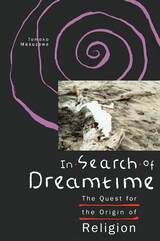 In Search of Dreamtime: The Quest for the Origin of Religion
Tomoko Masuzawa
University of Chicago Press, 1993 In this pioneering work of discourse analysis, Tomoko Masuzawa observes that the modern study of religion is peculiarly ambivalent toward the question of origin. Today's historians of religion maintain that they have abandoned speculative quests for the origin of religion; at the same time, they allege that concepts of absolute beginnings are fundamental to religion itself. By renouncing the desire for origins that they claim religious peoples embrace, historians can vicariously participate in the forbidden quest—so it seems—without forfeiting the authority accruing from their objectivist position.
This ambivalence of contemporary scholars echoes their ambivalence toward the ancestral "giants" of the discipline: Durkheim, Müller, and Freud. Masuzawa shows that the speculations of these three men on the origins of religion render the very notion of time and history problematic and contain powerful instruments for dislodging the position of "Western man" as the keeper of knowledge. Her critical rereading of these forefathers is framed by a compelling discussion of the postmodernist subversion of absolute origins in the works of Walter Benjamin and Rosalind Krauss and a comparison of Mircea Eliade and Nancy Munn's accounts of the Australian aboriginal "dreamtime." Engaging a number of critical issues within the burgeoning field of cultural studies, Masuzawa's book will have far-reaching implications not only for religious studies but throughout the human sciences.
In Search of Effective Disability Policy: Comparing the Developments and Outcomes of the Dutch and Danish Disability Policies
Jan Høgelund
Amsterdam University Press, 2004 In the Netherlands, employers are responsible for integrating disabled people into the workforce. Employers in Denmark, however, can dismiss workers with health problems, leaving the public authorities to bear the responsibility of ensuring disabled people's participation in the workforce. In Search of Effective Disability Policy combines micro-level empirical analysis with a macro-level approach to examine the potentials of these two contrasting policies. Høgelund presents a thorough and detailed investigation into how to develop an effective disability policy, and his conclusion productively compares the virtues and drawbacks of each national policy.
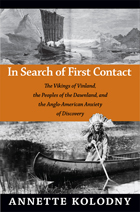 In Search of First Contact: The Vikings of Vinland, the Peoples of the Dawnland, and the Anglo-American Anxiety of Discovery
Annette Kolodny
Duke University Press, 2012 In Search of First Contact is a monumental achievement by the influential literary critic Annette Kolodny. In this book, she offers a radically new interpretation of two medieval Icelandic tales, known as the Vinland sagas. She contends that they are the first known European narratives about contact with North America. After carefully explaining the evidence for that conclusion, Kolodny examines what happened after 1837, when English translations of the two sagas became widely available and enormously popular in the United States. She assesses their impact on literature, immigration policy, and concepts of masculinity. Kolodny considers what the sagas reveal about the Native peoples encountered by the Norse in Vinland around the year A.D. 1000, and she recovers Native American stories of first contacts with Europeans, including one that has never before been shared outside of Native communities. These stories contradict the dominant narrative of "first contact" between Europeans and the New World. Kolodny rethinks the lingering power of a mythic American Viking heritage and the long-standing debate over whether Leif Eiriksson or Christopher Columbus should be credited as the first discoverer. With this paradigm-shattering work, Kolodny shows what literary criticism can bring to historical and social scientific endeavors.
In Search of France
Stanley Hoffmann, Charles P. Kindleberger, Laurence William Wylie, Jesse R. Pitts, Jean-Baptiste Duroselle, and François Goguel
Harvard University Press Six writers, four in America and two in France, have collaborated to assess the present condition and future potential of France with comprehensiveness, clarity, and depth. Over the last decade, the French economy has acquired competitive confidence, and is growing rapidly; the familiar image of France as economically “retarded” is no longer valid. Social change has included a rising birth rate, a transformation of the family, a resurgence of religion. In foreign policy, France has largely adapted itself to the new facts of international life. The authors, however, are not sanguine about the political system; France, in Stanley Hoffmann’s words, “is surrounded by the ruins of the old political system and does not know how to get to the new.”
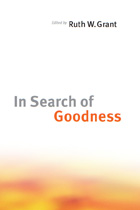 In Search of Goodness
Edited by Ruth W. Grant
University of Chicago Press, 2011 The recent spate of books and articles reflecting on the question of evil might make one forget that the question of just what constitutes goodness is no less urgent or perplexing. Everyone wants to think of him- or herself as good. But what does a good life look like? And how do people become good? Are there multiple, competing possibilities for what counts as a good life, all equally worthy? Or, is there a unified and transcendent conception of the good that should guide our judgment of the possibilities? What does a good life look like when it is guided by God? How is a good life involved with the lives of others? And, finally, how good is good enough?
These questions are the focus of In Search of Goodness, the product of a year-long conversation about goodness. The eight essays in this volume challenge the dichotomies that usually govern how goodness has been discussed in the past: altruism versus egoism; reason versus emotion; or moral choice versus moral character. Instead, the contributors seek to expand the terms of the discussion by coming at goodness from a variety of perspectives: psychological, philosophic, literary, religious, and political. In each case, they emphasize the lived realities and particulars of moral phenomena, taking up examples and illustrations from life, literature, and film. From Achilles and Billy Budd, to Oskar Schindler and Shel Silverstein’s The Giving Tree, to Iris Murdoch and the citizens of Flagstaff, Arizona, readers will find a wealth of thought-provoking insights to help them better understand this most basic, but complex, element of human life and happiness.
 In Search of Identity: The Japanese Overseas Scholar in America and Japan
John Bennett
University of Minnesota Press, 1958
In Search of Identity was first published in 1958. Minnesota Archive Editions uses digital technology to make long-unavailable books once again accessible, and are published unaltered from the original University of Minnesota Press editions.Educated Japanese have been faced with a basic ideological problem emerging out of their country’s modernization program. They have had to declare themselves on the great issues involved in their nation’s planning: West versus Orient, democracy opposed to autocracy, individualism versus collectivism. To the individual this ideological debate became a search for identity, and it is this problem, the search for identity, that forms the background of this book.The authors report upon a cross-disciplinary study of the Amerikaryugakusei – “those who study in America” – in the historical context of the modernization of Japanese society and Japan’s cultural relations with the United States; they describe and portray the experiences of the individual Japanese student on the American campus and back in Japan; and they analyze the adjustment of the Japanese student to different cultural environments.One group studied included Japanese students who were enrolled at two American universities. Another group consisted of Japanese who had returned to their homeland after their American education. The study is concerned, not with education per se, but with social and psychological aspects of the educational experiences.This is the fourth in a series of monographs resulting from a program of research sponsored by the Committee on Cross-Cultural Education of the Social Science Research Council.
In Search of Justice: The 1905-1906 Chinese Anti-American Boycott
Guanhua Wang
Harvard University Press, 2001 How could late Qing China, a country bound largely by parochial ties of family, clan, and native place, produce a nationwide mass movement? Was this popular outburst symptomatic of a domestic "nationalist awakening," as historians of modern China claim, or a result of pressure from Chinese overseas suffering under harsh U.S. immigration laws, as students of American history contend? In considering these vying explanations for the boycott of American products, Wang identifies a coalition of interests that came together to shape the movement's strategy, objectives, and outcome. He explores the larger structural and organizational resources available to boycott organizers and participants and the role of this common experience in laying the groundwork for later reform and revolutionary movements.
In Search of Lost Roses
Thomas Christopher
University of Chicago Press, 2002 Once upon a time—before the 1860s—people loved old roses like "Pearl of Gold," "Marchionesse of Lorne," or "Autumn Damask." Then along came the hybrid tea roses, which were easier to arrange, more dramatic, and longer-blooming, and the old roses were all but forgotten. Now the lovely, subtle-hued, richly perfumed old roses are making a comeback, thanks to the efforts of a stubborn band of eccentric characters who rescued them from back alleys, ramshackle cottages, and overgrown graveyards across the country. Thomas Christopher tells us the fascinating stories of the old roses—how they were created and made their way to America—and the unforgettable people who "rustle" them from abandoned lots and secret gardens today, revelling in the mystery of an "unknown yellow."
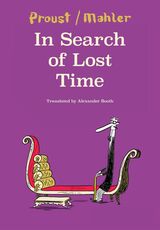 In Search of Lost Time: Mahler after Proust
Nicolas Mahler
Seagull Books, 2022 A twist on the French literary classic In Search of Lost Time told through Nicolas Mahler’s distinctive graphic novel style.
Marcel Proust’s In Search of Lost Time is one of the most important works of French literature—if not the most important. Reading it can be life-changing. Nicolas Mahler’s comic is not a retelling of this classic, nor a shortened version of Proust’s monumental work. Rather, it is a surprisingly funny graphic novel, comically disrespectful of the celebrated work yet completely permeated by Proustian spirit. Complemented by his clear and sparse illustrations, Mahler’s minimal nature of text use is easy on the eye, even for those uninitiated into graphic novels. For long-time fans of graphic novels, it is a perfect entry into a beloved literary classic.
A compact picture stream through time and space, Mahler’s In Search of Lost Time is a brilliantly complex house of mirrors replete with Proustian motives and perceptions.
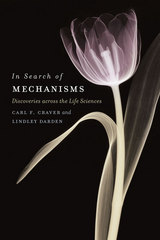 In Search of Mechanisms: Discoveries across the Life Sciences
Carl F. Craver and Lindley Darden
University of Chicago Press, 2013 Neuroscientists investigate the mechanisms of spatial memory. Molecular biologists study the mechanisms of protein synthesis and the myriad mechanisms of gene regulation. Ecologists study nutrient cycling mechanisms and their devastating imbalances in estuaries such as the Chesapeake Bay. In fact, much of biology and its history involves biologists constructing, evaluating, and revising their understanding of mechanisms. With In Search of Mechanisms, Carl F. Craver and Lindley Darden offer both a descriptive and an instructional account of how biologists discover mechanisms. Drawing on examples from across the life sciences and through the centuries, Craver and Darden compile an impressive toolbox of strategies that biologists have used and will use again to reveal the mechanisms that produce, underlie, or maintain the phenomena characteristic of living things. They discuss the questions that figure in the search for mechanisms, characterizing the experimental, observational, and conceptual considerations used to answer them, all the while providing examples from the history of biology to highlight the kinds of evidence and reasoning strategies employed to assess mechanisms. At a deeper level, Craver and Darden pose a systematic view of what biology is, of how biology makes progress, of how biological discoveries are and might be made, and of why knowledge of biological mechanisms is important for the future of the human species.
In Search of Music Education
Estelle R. Jorgensen
University of Illinois Press, 1997 What is music education, and what ought it to be? By challenging narrow
and inadequate conceptions of the field, Estelle Jorgensen raises the
possibility of alternative views that can dignify the teacher's task,
enrich and enliven the profession, and validate an exciting range of additional
ways in which music education can be undertaken in the contemporary world.
One of the most respected leaders in music education, Jorgensen emphasizes
world music and ethnomusicology as equal partners alongside the more conventional
sounds and styles that have dominated the classroom. Exemplifying sound
scholarship, thorough research, and compelling argument, In Search
of Music Education will be especially welcome wherever teachers strive
to deal with requirements for responsible music education.
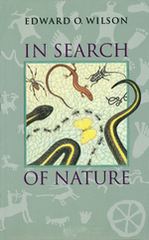 In Search of Nature
Edward O. Wilson
Island Press, 1996 " Perhaps more than any other scientist of our century, Edward O. Wilson has scrutinized animals in their natural settings, tweezing out the dynamics of their social organization, their relationship with their environments, and their behavior, not only for what it tells us about the animals themselves, but for what it can tell us about human nature and our own behavior. He has brought the fascinating and sometimes surprising results of these studies to general readers through a remarkable collection of books, including The Diversity of Life, The Ants, On Human Nature, and Sociobiology. The grace and precision with which he writes of seemingly complex topics has earned him two Pulitzer prizes, and the admiration of scientists and general readers around the world. In Search of Nature presents for the first time a collection of the seminal short writings of Edward O. Wilson, addressing in brief and eminently readable form the themes that have actively engaged this remarkable intellect throughout his career. ""The central theme of the essays is that wild nature and human nature are closely interwoven. I argue that the only way to make complete sense of either is by examining both closely and together as products of evolution.... Human behavior is seen not just as the product of recorded history, ten thousand years recent, but of deep history, the combined genetic and cultural changes that created humanity over hundreds of thousands of years. We need this longer view, I believe, not only to understand our species, but more firmly to secure its future. The book is composed of three sections. ""Animal Nature, Human Nature"" ranges from serpents to sharks to sociality in ants. It asks how and why the universal aversion to snakes might have evolved in humans and primates, marvels at the diversity of the world's 350 species of shark and how their adaptive success has affected our conception of the world, and admonishes us to ""be careful of little lives""-to see in the construction of insect social systems ""another grand experiment in evolution for our delectation. ""The Patterns of Nature"" probes at the foundation of sociobiology, asking what is the underlying genetic basis of social behavior, and what that means for the future of the human species. Beginning with altruism and aggression, the two poles of behavior, these essays describe how science, like art, adds new information to the accumulated wisdom, establishing new patterns of explanation and inquiry. In ""The Bird of Paradise: The Hunter and the Poet,"" the analytic and synthetic impulses-exemplified in the sciences and the humanities-are called upon to give full definition to the human prospect. ""Nature's Abundance"" celebrates biodiversity, explaining its fundamental importance to the continued existence of humanity. From ""The Little Things That Run the World""-invertebrate species that make life possible for everyone and everything else-to the emergent belief of many scientists in the human species' possible innate affinity for other living things, known as biophilia, Wilson sets forth clear and compelling reasons why humans should concern themselves with species loss. ""Is Humanity Suicidal?"" compares the environmentalist's view with that of the exemptionalist, who holds that since humankind is transcendent in intelligence and spirit, our species must have been released from the iron laws of ecology that bind all other species. Not without optimism, Wilson concludes that we are smart enough and have time enough to avoid an environmental catastrophe of civilization-threatening dimensions-if we are willing both to redirect our science and technology and to reconsider our self-image as a species. In Search of Nature is a lively and accessible introduction to the writings of one of the most brilliant scientists of the 20th century. Imaginatively illustrated by noted artist Laura Southworth, it is a book all readers will treasure."
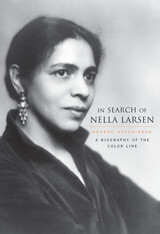 In Search of Nella Larsen: A Biography of the Color Line
George Hutchinson
Harvard University Press, 2006 Born to a Danish seamstress and a black West Indian cook in one of the Western Hemisphere's most infamous vice districts, Nella Larsen (1891-1964) lived her life in the shadows of America's racial divide. She wrote about that life, was briefly celebrated in her time, then was lost to later generations--only to be rediscovered and hailed by many as the best black novelist of her generation. In his search for Nella Larsen, the "mystery woman of the Harlem Renaissance," George Hutchinson exposes the truths and half-truths surrounding this central figure of modern literary studies, as well as the complex reality they mask and mirror. His book is a cultural biography of the color line as it was lived by one person who truly embodied all of its ambiguities and complexities.
Author of a landmark study of the Harlem Renaissance, Hutchinson here produces the definitive account of a life long obscured by misinterpretations, fabrications, and omissions. He brings Larsen to life as an often tormented modernist, from the trauma of her childhood to her emergence as a star of the Harlem Renaissance. Showing the links between her experiences and her writings, Hutchinson illuminates the singularity of her achievement and shatters previous notions of her position in the modernist landscape. Revealing the suppressions and misunderstandings that accompany the effort to separate black from white, his book addresses the vast consequences for all Americans of color-line culture's fundamental rule: race trumps family.
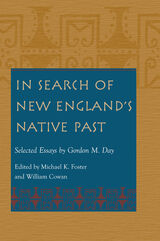 In Search of New England's Native Past: Selected Essays by Gordon M. Day
Gordon M. Day
University of Massachusetts Press, 1998 This volume highlights the work of the late Gordon M. Day, renowned for his groundbreaking research on the history and culture of the Western Abenakis and their Indian neighbors. Where previous historians had tended to portray northern New England as an area largely devoid of aboriginal peoples, Day established beyond all doubt the presence of Abenaki settlements along the eastern shore of Lake Champlain as well as the upper reaches of the Connecticut and Merrimack rivers.
For nearly three decades, Day focused his work on the community of Saint Francis, or Odanak, in Quebec, to which Abenaki refugees from interior New England had fled, beginning in the mid-seventeenth century and continuing into the nineteenth. Drawing on t he methods of several disciplines, including ethnology, linguistics, and ethnohistory, he synthesized data from fragmentary historical records, oral traditions, and place names to reconstruct a world assumed to be lost.
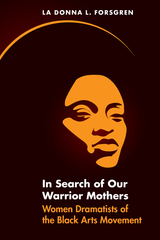 In Search of Our Warrior Mothers: Women Dramatists of the Black Arts Movement
La Donna L. Forsgren
Northwestern University Press, 2018 The Black Arts Movement (1965–76) consisted of artists across the United States deeply concerned with the relationship between politics and the black aesthetic. In Search of Our Warrior Mothers examines the ways in which black women playwrights in the movement advanced feminist and womanist perspectives from within black nationalist discourses. La Donna L. Forsgren recuperates the careers, artistic theories, and dramatic contributions of four leading playwrights: Martie Evans-Charles, J.e. Franklin, Sonia Sanchez, and Barbara Ann Teer. Using original interviews, production recordings, playbills, and unpublished manuscripts, she investigates how these women, despite operating within a context that equated the collective well-being of black people with black male agency, created works that validated black women's aspirations for autonomy and explored women's roles in the struggle for black liberation.
In Search of Our Warrior Mothers demonstrates the powerful contributions of women to the creation, interpretation, and dissemination of black aesthetic theory, thus opening an interdisciplinary conversation at the intersections of theater, performance, feminist, and African American studies and identifying and critiquing the gaps and silences within these fields.
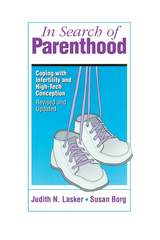 In Search Of Parenthood: Coping with Infertility and High-Tech Conception
Judith N. Lasker and Susan Borg
Temple University Press, 1994 "Anyone considering a new method of conception or struggling to resolve infertility should read this book. The authors point to the need for more public discussion of infertility and more social support groups for the infertile. Reading and discussing this book is a first step. It is also an excellent supplementary text for courses in human sexuality, sex and gender roles, women and society, or medical ethics, and is guaranteed to provoke lively class discussion."
--Contemporary Sociology
This revised and updated edition provides an accessible discussion of how new reproductive technologies work and how well they work. Includes gripping personal and professional accounts from infertility specialists and would-be parents who have used in vitro fertilization, donor insemination, surrogacy, and other technologies. Would-be parents speak candidly about the difficult process--repeated office visits, frequent tests, and anxious waiting for results--and the staggering costs--in dollars, stress, and physical consequences.
"This book will be useful for several audiences. Infertile women and men considering the new reproductive technologies will find this book an invaluable resource. Health professionals working with infertility patients will find that the book offers helpful insights into the experiences and concerns of their clients. Finally, researchers studying infertility will find this book to be a rich source of interesting hypotheses."
--Contemporary Psychology
"Lasker and Borg present a thoughtful and sensitive examination of the world of the new reproductive technologies. Most importantly, they offer us the voices of the women and men who have been there: in infertility clinics, in in vitro programs, in so-called 'surrogacy' contracts. They share with us the success and failure, joy and grief of our brave new world of reproduction."
--Barbara Katz Rothman, author of The Tentative Pregnancy: Prenatal Diagnosis and the Future of Motherhood
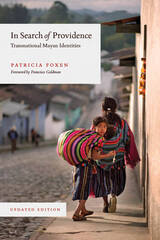 In Search of Providence: Transnational Mayan Identities, Updated Edition
Patricia Foxen
Vanderbilt University Press, 2020 In the mid-1990s, Patricia Foxen traveled back and forth between the Guatemalan highlands and Providence, Rhode Island, to understand the migration paths of K'iche' Mayan Indians who had fled the Guatemalan civil war to work in the factories and fisheries of New England. More than two decades later, many Mayans are still migrating to the US, today part of the "border crisis" that prompted the Trump administration's ruthless immigration and asylum policy backlash. As Foxen argues, the recent surge in Mayan border crossings must be contextualized within both the longer history of violence, marginality, and exclusion that has long led Guatemala's Indigenous populations to be "survivors on the move," as well as contemporary push factors such as climate change and growing inequality that have forced people from their communities.
And yet one of the most significant drivers of continued emigration today, ironically, is the very culture of migration (described in the book) that has accelerated social change within many Indigenous communities, setting in motion a complex series of economic and cultural shifts that have compelled a continuous movement of people and generations to the US. Reading this story in 2020—at a time of massive growth in flows of irregular migrations around the world—can help us better understand the highly complex set of factors that propel long-term migrations and that shape transnational communities on both sides of the border.
In Search of Providence offers a layered, historically grounded perspective that speaks to the local specificity behind the migration experience in order to point to the universal themes and contradictions of contemporary global displacements.
 In Search of Roosevelt
Rexford G. Tugwell
Harvard University Press, 1972 Franklin Delano Roosevelt, the author comments, "was one of those individuals who, because he rose to leadership in national and world affairs in times of crisis, threw a long shadow... his shadow lay over America for a long time in the sense that his absence was felt and comparisons with him persisted. He will continue to be a point of reference even when the inevitable processes of change have extinguished the problems he was so well suited to tackle." In this collection of essays, Rexford Tugwell seeks to explain this indomitable force. He explores Roosevelt's influence, assesses the means he used to achieve his ends, and penetrates some of the hidden places of his character. As stated in the preface to this volume, many of the mysteries surrounding Roosevelt will never be unlocked, yet, as evidenced throughout its pages, this study is an unrivaled success in its depiction of the man and the President.
In Search of Roosevelt begins with a revealing interview with Otis Moore, manager of Roosevelt's farm in Warm Springs, Georgia. The underlying intention here is to uncover the source of Roosevelt's emotional involvement in the problems of American agriculture. The work then proceeds with in-depth recollections of Roosevelt as individual, as reformer, and as uncommitted believer in a federally controlled balance of wages and prices.
These essays are inevitably tinged with nostalgia. Mr. Tugwell's relationship with Roosevelt was that of a confidant and an associate; he was a member of the so-called Brains Trust, and served under Roosevelt as Assistant Secretary and then Under Secretary of Agriculture (1933-1937), and, during the war years, as governor of Puerto Rico. He cannot bring to this study total indifference to the subject, but he does bring his insight as an astute political observer and historian.
 In Search of Safety: Chemicals and Cancer Risk
John D. Graham, Laura C. Green, and Marc J. Roberts
Harvard University Press, 1988 Most public controversies about the effects of chemicals on human health revolve around the risk of cancer—hardly surprising, considering that it is the second leading cause of death in the United States. People are concerned about the dangers of carcinogens in air, water, and food, and they expect their representatives in government to protect them from such hazards. On the other hand, the economic costs of eliminating every suspected carcinogen from the environment would cause tremendous economic hardship. How should policymakers use science to help strike a balance between the benefits of lowering the risk of cancer and the economic costs of regulation?
In this important book the authors squarely address the complex interaction of science and regulatory policy. They begin by clarifying the scientific issues that are central to regulatory decisions, then explain how and why scientists can honestly disagree about these issues. They demonstrate with two cogent case studies: the heated debates about formaldehyde and benzene, both useful but potentially toxic chemicals. By examining how scientists evaluated the risks from these chemicals, and what kinds of legislative, administrative, and judicial decisions emerged from the evaluations, the authors furnish insight into the checks and balances of health-risk regulation.
They point out that overselling science in this context is harmful to both science and democracy. Their final chapter proposes creative methods for constructing a bridge between the scientist and the regulator that will be invaluable to anyone concerned about health risks.
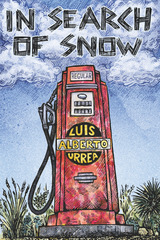 In Search of Snow
Luis Alberto Urrea
University of Arizona Press, 1999 In the hot Arizona desert of the late 1950s, Mike McGurk comes of age in one big, riotous gush. Trapped pumping gas at a desolate roadstop, he yearns for things he has never known: love, hope, and the soft, white calmness of snow. Mike's world is filled with a menagerie of quirky characters, who cope with the weight of their unfulfilled dreams with bravado, humor, and violence. Mike trades snappy insults with his macho father, Texaco Turk McGurk, a moustachioed amateur boxer and self-proclaimed war hero who is unable to talk about love. Mike lusts after Lily, his seductive, poem-writing cousin. He cowers before and then confronts the vicious Ramses, grandson of Mr. Sneezy, the wisecracking Apache. And he is rescued by his best friend, Bobo, who delivers him into the care of the loving and generous Mama and Papa Garcia.
In Search of Snow is an explosive coming-of-age adventure, full of hilarious episodes and still, poignant moments. Like a blue-collar Don Quixote, Mike must blow up his windmills before he can set off to find the things he lacks, especially the snow that will temper the passion he has just set aflame.
In Search of Susanna
Suzanne L. Bunkers
University of Iowa Press, 1996 On a summer day in 1980 in Niederfeulen, Luxembourg, Suzanne Bunkers pored over parish records of her maternal ancestors, immigrants to the rural American Midwest in the mid 1800s. Suddenly, chance led her to the name Simmerl and to the missing piece in the genealogical puzzle that had brought her so far: Susanna Simmerl, Bunkers' paternal great-great-grandmother, who had given birth to an illegitimate daughter in 1856 before coming to America. Finding Susanna was the catalyst for Bunkers' intensely personal book, which blends history, memory, and imagination into a drama of two women's lives within their multigenerational family.
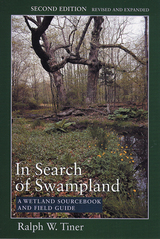 In Search of Swampland: A Wetland Sourcebook and Field Guide
Ralph W. Tiner
Rutgers University Press, 2005 In the revised and expanded edition of this classic guide, Ralph W. Tiner introduces readers to the ecology and beauty of the wetlands in eastern North America. Topics include their formation and functions, wetland types, causes of loss and degradation, and recent efforts to protect them. The discussion now includes many examples from the Great Lakes region and information on best management practices for working in and around wetlands including vernal pools. A new chapter on classification and assessment further clarifies how the unique characteristics of these important natural resources serve specific functions.In Search of Swampland alsoprovides a field guide to wetland plants, soils, and animals. It includes detailed descriptions and illustrations—many of which are new to this edition—of more than 300 plants and 200 animals. Clear identification keys, information on how to distinguish typical hydric or “wet” soils from dryland soils, and general procedures for identifying wetlands in the field make this book an indispensable resource for readers with little or no training in wetland science, as well as for the scientist or amateur naturalist.
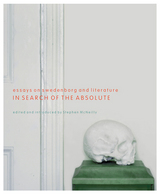 In Search of the Absolute: Essays on Swedenborg and Literature
Stephen McNeilly
Swedenborg Foundation Publishers, 2004 In Search of the Absolute: Essays on Swedenborg and Literature looks at the enduring influence of the eighteenth-century Swedish philosopher and mystic Emanuel Swedenborg on poetry, drama, and short fiction in Europe and both North and South America. Swedenborg’s lingering presence in nineteenth-century English poetry is represented by essays on Samuel Taylor Coleridge and Robert and Elizabeth Barrett Browning, while his influence upon American literature is charted by studies of Ralph Waldo Emerson and Walt Whitman. The collection also contains one of the first critical appraisals of Swedenborg’s significant impact upon the Argentinian writer Jorge Luis Borges and an essay on the great Swedish dramatist August Strindberg. This volume, the third in the Journal of the Swedenborg Society series, contains the following six essays:
• H. J. Jackson, “‘Swedenborg’s Meaning Is the Truth’: Coleridge, Tulk, and Swedenborg”
• Anders Hallengren, “Swedenborgian Simile in Emersonian Edification”
• Richard Lines, “Swedenborgian Ideas in the Poetry of Elizabeth Barrett Browning and Robert Browning”
• Anders Hallengren, “A Hermeneutic Key to the title Leaves of Grass”
• Lars Bergquist, “Subjectivity and Truth: Strindberg and Swedenborg”
• Emilio R. Báez-Rivera, “Swedenborg and Borges: the Mystic of the North and the Mystic in puribus”
Also included are an introduction by Stephen McNeilly, a chronology of Swedenborg, biographies of the essay subjects, and an index.
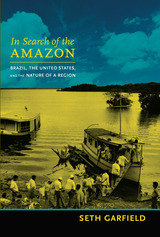 In Search of the Amazon: Brazil, the United States, and the Nature of a Region
Seth Garfield
Duke University Press, 2013 Chronicling the dramatic history of the Brazilian Amazon during the Second World War, Seth Garfield provides fresh perspectives on contemporary environmental debates. His multifaceted analysis explains how the Amazon became the object of geopolitical rivalries, state planning, media coverage, popular fascination, and social conflict. In need of rubber, a vital war material, the United States spent millions of dollars to revive the Amazon's rubber trade. In the name of development and national security, Brazilian officials implemented public programs to engineer the hinterland's transformation. Migrants from Brazil's drought-stricken Northeast flocked to the Amazon in search of work. In defense of traditional ways of life, longtime Amazon residents sought to temper outside intervention. Garfield's environmental history offers an integrated analysis of the struggles among distinct social groups over resources and power in the Amazon, as well as the repercussions of those wartime conflicts in the decades to come.
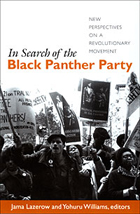 In Search of the Black Panther Party: New Perspectives on a Revolutionary Movement
Jama Lazerow and Yohuru Williams, eds.
Duke University Press, 2006 Controversy swirled around the Black Panthers from the moment the revolutionary black nationalist Party was founded in Oakland, California, in 1966. Since that time, the group that J. Edgar Hoover called “the single greatest threat to the nation’s internal security” has been celebrated and denigrated, deified and vilified. Rarely, though, has it received the sort of nuanced analysis offered in this rich interdisciplinary collection. Historians, along with scholars in the fields of political science, English, sociology, and criminal justice, examine the Panthers and their present-day legacy with regard to revolutionary violence, radical ideology, urban politics, popular culture, and the media. The essays consider the Panthers as distinctly American revolutionaries, as the products of specific local conditions, and as parts of other movements of the late 1960s and early 1970s. One contributor evaluates the legal basis of the Panthers’ revolutionary struggle, explaining how they utilized and critiqued the language of the Constitution. Others explore the roles of individuals, looking at a one-time Panther imprisoned for a murder he did not commit and an FBI agent who monitored the activities of the Panthers’ Oakland branch. Contributors assess the Panthers’ relations with Students for a Democratic Society, the Young Lords, the Brown Berets, and the Peace and Freedom Party. They discuss the Party’s use of revolutionary aesthetics, and they show how the Panthers manipulated and were manipulated by the media. Illuminating some of the complexities involved in placing the Panthers in historical context, this collection demonstrates that the scholarly search for the Black Panthers has only just begun. Contributors. Bridgette Baldwin, Davarian L. Baldwin, David Barber, Rod Bush, James T. Campbell, Tim Lake, Jama Lazerow, Edward P. Morgan, Jeffrey O. G. Ogbar, Roz Payne, Robert O. Self, Yohuru Williams, Joel Wilson
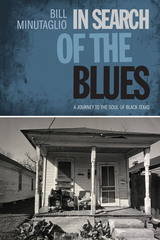 In Search of the Blues: A Journey to the Soul of Black Texas
By Bill Minutaglio
University of Texas Press, 2010 The rich, complex lives of African Americans in Texas were often neglected by the mainstream media, which historically seldom ventured into Houston's Fourth Ward, San Antonio's East Side, South Dallas, or the black neighborhoods in smaller cities. When Bill Minutaglio began writing for Texas newspapers in the 1970s, few large publications had more than a token number of African American journalists, and they barely acknowledged the things of lasting importance to the African American community. Though hardly the most likely reporter—as a white, Italian American transplant from New York City—for the black Texas beat, Minutaglio was drawn to the African American heritage, seeking its soul in churches, on front porches, at juke joints, and anywhere else that people would allow him into their lives. His nationally award-winning writing offered many Americans their first deeper understanding of Texas's singular, complicated African American history. This eclectic collection gathers the best of Minutaglio's writing about the soul of black Texas. He profiles individuals both unknown and famous, including blues legends Lightnin' Hopkins, Amos Milburn, Robert Shaw, and Dr. Hepcat. He looks at neglected, even intentionally hidden, communities. And he wades into the musical undercurrent that touches on African Americans' joys, longings, and frustrations, and the passing of generations. Minutaglio's stories offer an understanding of the sweeping evolution of music, race, and justice in Texas. Moved forward by the musical heartbeat of the blues and defined by the long shadow of racism, the stories measure how far Texas has come . . . or still has to go.
 In Search of the Golden Frog
Marty Crump
University of Chicago Press, 2000 Marty Crump has searched for salamanders along the Amazon River; she has surveyed amphibians and reptiles in hostile Huaorani Indian territory; she has been stung by a conga ant and had run-ins with an electric eel, a boa constrictor, and a bushmaster viper. In the course of her travels she has dined, not always eagerly, on wild rat, parrot, guinea pig, and chicken foot soup. And for those among us who prefer our experiences to be vicarious and far away from biting insects, venomous snakes, and inhospitable surroundings, she has written In Search of the Golden Frog.
The book is a detailed and fascinating chronicle of Crump's adventures as a field biologist—and as a wife and mother—in South and Central America. Following Crump on her research trips through Costa Rica, Ecuador, Brazil, Argentina, and Chile, we learn of amazingly diverse landscapes, equally diverse national traditions and customs, and the natural history of her subject of study, the frog. In leading us through rain forests and onto windswept coasts, Crump introduces us to such compelling creatures as female harlequin frogs, who pounce on males and pound their heads against the ground, and also sounds an alarm about the precipitous decline in amphibian populations around the globe.
Crump's perspectives as both a scientist and a mother, juggling the demands of family and professional life, make this highly readable account of fieldwork simultaneously close to home and wildly exotic. A combination of nature writing and travel writing, the richly illustrated In Search of the Golden Frog will whet travelers' appetites, affirm the experiences of seasoned field biologists, and offer the armchair naturalist vivid descriptions of amphibians and their habitats.
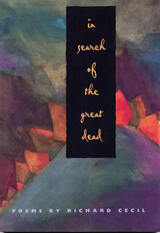 In Search of the Great Dead
Richard Cecil
Southern Illinois University Press, 1999 With grim humor and humorous grimness, In Search of the Great Dead engages the great themes of poetry: death and fame. The title poem of this collection records Richard Cecil's quest for the tombs of the famous dead. At first the search leads him on a tour of famous European tombstones—the grave of Chateaubriand in St. Malo, the shared tomb of Gertrude Stein and Alice B. Toklas in Pere-Lachaise cemetery in Paris, Yeats's old Celtic cross in Sligo—but gradually it expands into areas where all the tombs have been erased by time or vandalism—the tombs of Seneca and Lucan, and all of the great dead poets whose names have been lost. These once famous, now unknown poets lead Cecil to consider those graveyards full of anonymous dead—the civil war soldiers buried under tiny stones with numbers instead of names inscribed on them. Are they more anonymous than the once famous, now forgotten "great" dead? Though Cecil is wryly aware of his own obscurity, his poems are strangely optimistic and life-affirming. His reply to Emily Dickinson's question: "I'm Nobody—are you / Nobody, too?" is an enthusiastic yes! In Search of the Great Dead conveys the joy of being Nobody and the shy, almost buried hope that someday (after death), he might become Somebody.
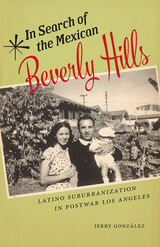 In Search of the Mexican Beverly Hills: Latino Suburbanization in Postwar Los Angeles
González, Jerry
Rutgers University Press, 2018 Residential and industrial sprawl changed more than the political landscape of postwar Los Angeles. It expanded the employment and living opportunities for millions of Angelinos into new suburbs. In Search of the Mexican Beverly Hills examines the struggle for inclusion into this exclusive world—a multilayered process by which Mexican Americans moved out of the barrios and emerged as a majority population in the San Gabriel Valley—and the impact that movement had on collective racial and class identity. Contrary to the assimilation processes experienced by most Euro-Americans, Mexican Americans did not graduate to whiteness on the basis of their suburban residence. Rather, In Search of the Mexican Beverly Hills illuminates how Mexican American racial and class identity were both reinforced by and took on added metropolitan and transnational dimensions in the city during the second half of the twentieth century.
 In Search of the Modern Hippocrates
Roger J. Bulger
University of Iowa Press, 1987 The ancient Hippocratic oath that every doctor pledges upon graduation from medical school is a code based on genuine devotion to people and a desire to serve them. It is also a code in urgent need of updating to reflect the technological and moral changes of modern society and the complicated dilemmas facing every practicing physician. This collection of essays by some of the wisest observers of modern medicine probes the various forces affecting health care today: the power of the new technology in diagnosing and treating illnesses, the growing appreciation of mind/body interactions, the emergence of corporate hospitals and health care centers, and, most importantly, the essence of physicianhood—what makes a doctor want to practice medicine. In considering these issues, the essayists question whether the medical-industrial complex will destroy physicians as we know them, making doctors employees of large profit-making institutions and more responsible to their companies than to their patients. Will increasing versatility in technological medicine remove doctors even further from the patient's bedside, weakening the diminishing bond between patient and doctor? Are there points of contact between western "scientific" medicine and holistic practices? Is there a place in modern medicine for work therapy and the placebo effect? Each of these issues prevalent in medicine today has, in its own particular way, an effect upon the core relationship between doctor and patient. In Search of the Modern Hippocrates is dedicated to the premise that current changes in medicine can produce an altered and strengthened medical profession resolved to preserve the inextricable link between commitment and care. Ending with the development of a modern oath of ethics, it provides an important guide to medicine in the complex world we now face.
In Search of the Paper Tiger: A Sociological Perspective of Myth, Formula, and the Mystery Genre in the Entertainment Print Mass Medium
Gary Hoppenstand
University of Wisconsin Press, 1987 The author examines the process of social life and the relationship of myth, popular formula, and the mystery genre to social psychology. The book presents social construction of reality theory as a methodology upon which the structure of mass-mediated popular fiction can be examined, postulating definitions of myth and formula and advancing a new language of literary analysis that acknowledges the socially defining, democratizing experience of popular fiction. Social-psychological analysis is focused on the mystery genre and examines its taxonomy, including the supernatural, fiction noir, gangster, thief, thriller, and detective formulas.
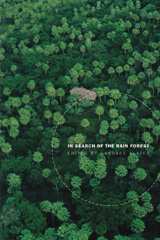 In Search of the Rain Forest
Candace Slater, ed.
Duke University Press, 2004 The essays collected here offer important new reflections on the multiple images of and rhetoric surrounding the rain forest. The slogan “Save the Rain Forest!”—emblazoned on glossy posters of tall trees wreathed in vines and studded with monkeys and parrots—promotes the popular image of a marvelously wild and vulnerable rain forest. Although representations like these have fueled laudable rescue efforts, in many ways they have done more harm than good, as these essays show. Such icons tend to conceal both the biological variety of rain forests and the diversity of their human inhabitants. They also frequently obscure the specific local and global interactions that are as much a part of today’s rain forests as are the array of plants and animals. In attending to these complexities, this volume focuses on specific portrayals of rain forests and the consequences of these characterizations for both forest inhabitants and outsiders. From diverse disciplines—history, archaeology, sociology, literature, law, and cultural anthropology—the contributors provide case studies from Latin America, Asia, and Africa. They point the way toward a search for a rain forest that is both a natural entity and a social history, an inhabited place and a shifting set of ideas. The essayists demonstrate how the single image of a wild and yet fragile forest became fixed in the popular mind in the late twentieth century, thereby influencing the policies of corporations, environmental groups, and governments. Such simplistic conceptions, In Search of the Rain Forest shows, might lead companies to tout their “green” technologies even as they try to downplay the dissenting voices of native populations. Or they might cause a government to create a tiger reserve that displaces peaceful peasants while opening the doors to poachers and bandits. By encouraging a nuanced understanding of distinctive, constantly evolving forests with different social and natural histories, this volume provides an important impetus for protection efforts that take into account the rain forest in all of its complexity. Contributors. Scott Fedick, Alex Greene, Paul Greenough, Nancy Peluso, Suzana Sawyer, Candace Slater, Charles Zerner
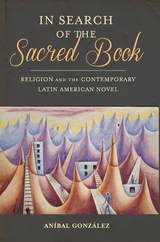 In Search of the Sacred Book: Religion and the Contemporary Latin American Novel
Aníbal Gonzalez
University of Pittsburgh Press, 2018 In Search of the Sacred Book studies the artistic incorporation of religious concepts such as prophecy, eternity, and the afterlife in the contemporary Latin American novel. It departs from sociopolitical readings by noting the continued relevance of religion in Latin American life and culture, despite modernity’s powerful secularizing influence. Analyzing Jorge Luis Borges’s secularized “narrative theology” in his essays and short stories, the book follows the development of the Latin American novel from the early twentieth century until today by examining the attempts of major novelists, from María Luisa Bombal, Alejo Carpentier, and Juan Rulfo, to Julio Cortázar, Gabriel García Márquez, and José Lezama Lima, to “sacralize” the novel by incorporating traits present in the sacred texts of many religions. It concludes with a view of the “desacralization” of the novel by more recent authors, from Elena Poniatowska and Fernando Vallejo to Roberto Bolaño.
 In Search of the Talented Tenth: Howard University Public Intellectuals and the Dilemmas of Race, 1926-1970
Zachery R. Williams
University of Missouri Press, 2009 From the 1920s through the 1970s, Howard University was home to America’s most renowned assemblage of black scholars. This book traces some of the personal and professional activities of this community of public intellectuals, demonstrating their scholar-activist nature and the myriad ways they influenced modern African American, African, and Africana policy studies.
In Search of the Talented Tenth tells how individuals like Rayford Logan, E. Franklin Frazier, John Hope Franklin, Merze Tate, Charles Wesley, and Dorothy Porter left an indelible imprint on academia and black communities alike through their impact on civil rights, anticolonialism, and women’s rights. Zachery Williams explores W. E. B. Du Bois’s Talented Tenth by describing the role of public intellectuals from the Harlem Renaissance to the Black Power movement, in times as trying as the Jim Crow and Cold War eras.
Williams first describes how the years 1890 to 1926 laid the foundation for Howard’s emergence as the “capstone of Negro education” during the administration of university president Mordecai Johnson. He offers a wide-ranging discussion of how the African American community of Washington, D.C., contributed to the dynamism and intellectual life of the university, and he delineates the ties that linked many faculty members to one another in ways that energized their intellectual growth and productivity as scholars. He also discusses the interaction of Howard’s intellectual community with those of the West Indies, Africa, and other places, showing the international impact of Howard’s intellectuals and the ways in which black and brown elites outside the United States stimulated the thought and scholarship of the Howard intellectuals.
In Search of the Talented Tenth marks the first in-depth study of the intellectual activity of this community of scholars and further attests to the historic role of women faculty in shaping the university. It testifies to the impact of this group as a model against which the twenty-first century’s black public intellectuals can be measured.
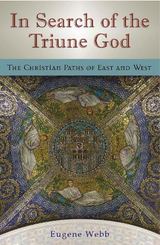 In Search of the Triune God: The Christian Paths of East and West
Eugene Webb
University of Missouri Press, 2013 Under the broad umbrella of the Christian religion, there exists a great divide between two fundamentally different ways of thinking about key aspects of the Christian faith. Eugene Webb explores the sources of that divide, looking at how the Eastern and Western Christian worlds drifted apart due both to the different ways they interpreted their symbols and to the different roles political power played in their histories. Previous studies have focused on historical events or on the history of theological ideas. In Search of the Triune God delves deeper by exploring how the Christian East and the Christian West have conceived the relation between symbol and experience. Webb demonstrates that whereas for Western Christianity discussion of the doctrine of the Trinity has tended toward speculation about the internal structure of the Godhead, in the Eastern tradition the symbolism of the Triune God has always been closely connected to religious experience. In their approaches to theology, Western Christianity has tended toward a speculative theology, and Eastern Christianity toward a mystical theology. This difference of focus has led to a large range of fundamental differences in many areas not only of theology but also of religious life. Webb traces the history of the pertinent symbols (God as Father, Son of God, Spirit of God, Messiah, King, etc.) from the Hebrew Bible and New Testament through patristic thinkers and the councils that eventually defined orthodoxy. In addition, he shows how the symbols, interpreted through the different cultural lenses of the East and the West, gradually took on meanings that became the material of very different worldviews, especially as the respective histories of the Eastern and Western Christian worlds led them into different kinds of entanglement with ambition and power. Through this incisive exploration, Webb offers a dramatic and provocative new picture of the history of Christianity.
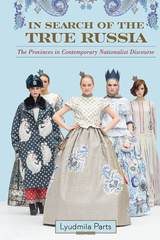 In Search of the True Russia: The Provinces in Contemporary Nationalist Discourse
Lyudmila Parts
University of Wisconsin Press, 2020 Russia's provinces have long held a prominent place in the nation's cultural imagination. Lyudmila Parts looks at the contested place of the provinces in twenty-first-century Russian literature and popular culture, addressing notions of nationalism, authenticity, Orientalism, Occidentalism, and postimperial identity.
Surveying a largely unexplored body of Russian journalism, literature, and film from the late twentieth and early twenty-first centuries, Parts finds that the harshest portrayals of the provinces arise within "high" culture. Popular culture, however, has increasingly turned from the newly prosperous, multiethnic, and westernized Moscow to celebrate the hinterlands as repositories of national traditions and moral strength. This change, she argues, has directed debate about Russia's identity away from its loss of imperial might and global prestige and toward a hermetic national identity based on the opposition of "us vs. us" rather than "us vs. them." She offers an intriguing analysis of the contemporary debate over what it means to be Russian and where "true" Russians reside.
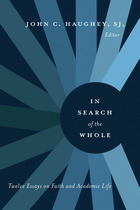 In Search of the Whole: Twelve Essays on Faith and Academic Life
John C. Haughey, SJ, Editor
Georgetown University Press, 2013 The contributors to this inspiring anthology meet the challenge that everyone faces: that of becoming a whole person in both their personal and professional lives. John C. Haughey, SJ, has gathered twelve professionals in higher education from a variety of disciplines—philosophy, theology, health care, business, and administration. What they have in common reflects the creative understanding of the meaning of “catholic” as Haughey has found it to operate in Catholic higher education. Each essay in the first six chapters describes how its author has assembled a unique whole from within his or her particular area of academic competence. The last six chapters are more autobiographical, with each author describing what has become central to his or her identity. All twelve are “anticipating an entirety” with each contributing a coherence that is as surprising as it is delightful.
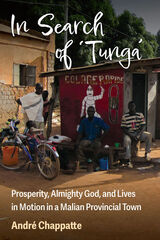 In Search of Tunga: Prosperity, Almighty God, and Lives in Motion in a Malian Provincial Town
André Chappatte
University of Michigan Press, 2022 This volume on Muslim life focuses on young male migrants of rural origin who move to build better lives in Bougouni, a provincial town in southwest Mali. Describing themselves as “simply Muslims” and “adventurers,” these migrants aim to be both prosperous and good Muslims. Drawing upon seventeen months of fieldwork, author André Chappatte explores their sense of prosperity and piety as they embark on tunga (adventure), a customary search for money and more in a tradition that dates back to the colonial period.
In the context of the current global war on terrorism, most studies of Muslim life have focused on the politics of piety of reformist movements, their leaders, and members. By contrast, In Search of “Tunga” takes a perspective from below. It opens piety up to “simply Muslims,” although the religious elites have always claimed authority and legitimacy over piety. Is piety an exclusive field of experiences for those who claim to strive for it? What does piety involve for the majority of Muslims, the non-elite and unaffiliated Muslims? This volume “democratizes” piety by documenting its practice as going beyond sharply defined religious affiliations and Islamic scholarship, and by showing it is both alive and normative, existential and prescriptive. As opposed to studies that build on the classic historical connections between the Maghreb and the Sahel, the southbound migration from the Sahel documented in this book stresses the overlooked historical connections between the southern shores of the Sahara and the lands south of those shores. It demonstrates how the Malian savanna, this former buffer-zone between ancient Mande kingdoms and thereafter remote areas of French Sudan, is increasingly becoming central in today’s Sahel contexts of desiccation and insecurity.
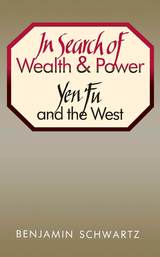 In Search of Wealth and Power: Yen Fu and the West
Benjamin I. Schwartz
Harvard University Press, 1964 In a serious effort to divine the secret of the West's success in achieving wealth and power, Yen Fu, a Chinese thinker, undertook, at the turn of the century, years of laborious translation and commentary on the work of such thinkers as Spencer, Huxley, Adam Smith, Mill, and Montesquieu. In addition to the inevitable difficulties involved in translating modern English into classical Chinese, Yen Fu was faced with the formidable problem of interpreting and making palatable many Western ideas which were to a large extent antithetical to traditional Chinese thought.
In an absorbing study of Yen Fu's translations, essays, and commentaries, Benjamin Schwartz examines the modifications and consequent revaluation of these familiar works as they were presented to their new audience, and analyzes the impact of this Western thought on the Chinese culture of the time. Drawing on a unique knowledge of both intellectual traditions, Schwartz describes the diverse and complex effects of this confrontation of Eastern and Western philosophies and provides a new vantage point to assess and appreciate these two disparate worlds.
IN SEARCH OF WORKING CLASS: ESSAYS IN AMERICAN LABOR HISTORY AND POLITICAL CULTURE
Leon Fink
University of Illinois Press, 1994 These nine essays by a prominent scholar in American labor history self-consciously evoke the tensions between the worker as historical subject and the historian as outside observer. Encompassing studies of labor culture, strategy, and movement building from the late nineteenth century to the present, In Search of the Working Class also connects the trials of the early labor economists to the conceptual challenges facing today's academic practitioners.
"Fink places American labor history in the broader context of American political historiography better than any other historian I can think of." -- James R. Barrett, author of Work and Community in the Jungle: Chicago's Packinghouse Workers, 1894-1922
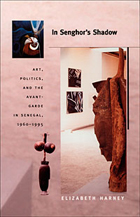 In Senghor's Shadow: Art, Politics, and the Avant-Garde in Senegal, 1960–1995
Elizabeth Harney
Duke University Press, 2004 In Senghor’s Shadow is a unique study of modern art in postindependence Senegal. Elizabeth Harney examines the art that flourished during the administration of Léopold Sédar Senghor, Senegal’s first president, and in the decades since he stepped down in 1980. As a major philosopher and poet of Negritude, Senghor envisioned an active and revolutionary role for modern artists, and he created a well-funded system for nurturing their work. In questioning the canon of art produced under his aegis—known as the Ecole de Dakar—Harney reconsiders Senghor’s Negritude philosophy, his desire to express Senegal’s postcolonial national identity through art, and the system of art schools and exhibits he developed. She expands scholarship on global modernisms by highlighting the distinctive cultural history that shaped Senegalese modernism and the complex and often contradictory choices made by its early artists. Heavily illustrated with nearly one hundred images, including some in color, In Senghor’s Shadow surveys the work of a range of Senegalese artists, including painters, muralists, sculptors, and performance-based groups—from those who worked at the height of Senghor’s patronage system to those who graduated from art school in the early 1990s. Harney reveals how, in the 1970s, avant-gardists contested Negritude beliefs by breaking out of established artistic forms. During the 1980s and 1990s, artists such as Moustapha Dimé, Germaine Anta Gaye, and Kan-Si engaged with avant-garde methods and local artistic forms to challenge both Senghor’s legacy and the broader art world’s understandings of cultural syncretism. Ultimately, Harney’s work illuminates the production and reception of modern Senegalese art within the global arena.
In Service to America: A History of VISTA in Arkansas, 1965-1985
Marvin Schwartz
University of Arkansas Press, 1988 As part of President Johnson's War on Poverty, VISTA volunteers in the 1960s began fanning out across the United States to try to break the cycle of poverty in which many Americans were caught. This work takes a close look at the effect these volunteers had on Arkansas communities and, in turn, the effect the communities had on the volunteers.
In Service to American Pharmacy: The Professional Life of William Procter Jr.
Gregory J. Higby
University of Alabama Press, 1992 The position of the pharmacist in the structure of health care in the United States evolved during the middle half of the 19th century, roughly from the founding of the Philadelphia College of Pharmacy in 1821 to the passage of meaningful pharmaceutical legislation in the 1870s. Higby examines the professional life of William Procter, Jr., generally regarded as the “Father of American Pharmacy,” and follows the development of American pharmacy through four decades of Procter’s professional commitment to the field.
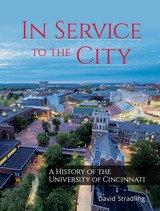 In Service to the City: A History of the University of Cincinnati
David Stradling
University of Minnesota Press, 2018 With roots reaching back to 1819, the University of Cincinnati has long been at the frontier of higher education in the Ohio Valley. While it has aspired to fulfill its mission to serve the public good, some residents, particularly those living near campus, have wondered how university decisions benefited the city at large. Long a municipal university, UC struggled to serve a broad diverse population, even as Cincinnati itself struggled in the late twentieth century. Through it all, the university has maintained its importance to the city and its alumni.
In Service to the City: A History of the University of Cincinnati, the first history of the university written in over fifty years, explores the evolving, complex relationship between UC and the city of Cincinnati. In Service to the City casts an unvarnished lens on the details of student demographics, faculty research, curricular changes, and athletic controversy to challenges associated with campus architecture and planning, neighborhood relations, regional and national consequences of urban decline, and the roles of municipal, state, and federal governments within American higher education.
Urban, environmental historian David Stradling traces UC’s story through starts and stops, growth and contraction. In the 1870s the institution began its transformation into a comprehensive, municipal university located in America’s thriving heartland. Expansion continued through mergers with Cincinnati College-Conservatory of Music and Cincinnati Medical College, among others. In 1977, University President Warren Bennis and Governor Jim Rhodes signed papers ending UC’s municipal status while securing its future as part of the state university system of Ohio.
UC maintains its strong relationship with Cincinnati, pioneering countless community and regionally oriented programs, from its expanding co-op education system, the first in the nation, to the Niehoff Urban Studio. Stradling describes the social and political activism of UC students and faculty—front and center in the civil rights and women’s rights movements, as well as the public health and environmental movements. Often they struggled to change the culture within their own institution, which at times appeared conservative or reactionary.
Drawing on archival research, Stradling recounts in lively prose and through dozens of illustrations, two-hundred years of UC history, setting the story in the context of changes within higher education in the United States.
With the cost of higher education on the minds of legislators and the public, questions first posed by Daniel Drake in 1819 upon the founding of Cincinnati College remain relevant. Who should the college serve? What and how should students learn? How can we pay for it? In Service to the City encourages readers to consider how the University of Cincinnati—with a history so entwined with its city—can balance its urban-serving tradition with its aspiration to be a leader global research university.
In Sheep's Clothing: Understanding and Dealing with Manipulative People
George K. Simon, Ph.D.
Parkhurst Brothers, Inc., 2010 Dr. George Simon knows how people push your buttons. Your children--especially teens--are expert at it, as is your mate. A co-worker may quietly undermine your efforts while professing to be helpful, or your boss may prey on your weaknesses. Manipulative people have two goals: to win and to look good doing it. Often those they abuse are only vaguely aware of what is happening to them. In this eye-opening book, you'll also discover... * 4 reasons why victims have a hard time leaving abusive relationships * Power tactics manipulators use to push their own agendas and justify their behavior *Ways to redefine the rules of engagement between you and an abuser * How to spot potential weaknesses in your character that can set you up for manipulation. * 12 tools for personal empowerment to help you maintain greater strength in all relationships
 In Sickness and in Play: Children Coping with Chronic Illness
Clark, Cindy Dell
Rutgers University Press, 2003 For children who live with a chronic illness, each day is filled with endless treatments, painful symptoms, confusion, and embarrassment. How can an eight-year old girl understand diabetes let alone explain to her schoolmates why she has to leave class to have her blood tested? How can the father of a child with asthma ever sleep soundly through the night with the fear that his son may suffocate in the next room.
In In Sickness and in Play, Cindy Dell Clark tells the stories of children who suffer from two common illnesses that are often underestimated by those not directly touched by them—asthma and diabetes. She describes how play, humor, and other expressive methods, invented by the kids themselves, allow families to cope with the pain. Clark’s work is one of the few studies to focus on maladies that kids must learn to live with rather than die from. Her interviews with forty-six families give readers an understanding of how children comprehend their illnesses and how parents struggle daily to care for their kids while trying to give them a “normal” childhood. Chronically ill children are at a greater risk of developing mental health or social adjustment problems than their peers, and asthma has been gaining ground in both incidence and fatality in recent years. Clark’s eye-opening work emphasizes the importance of improving the lives of these kids by understanding their perspectives, both imagined and real.
In Sickness and in Play is part of the Rutgers Series in Childhood Studies edited by Myra Bluebond-Langer.
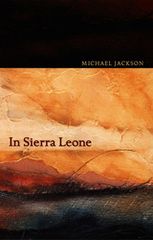 In Sierra Leone
Michael Jackson
Duke University Press, 2004 In 2002, as Sierra Leone prepared to announce the end of its brutal civil war, the distinguished anthropologist, poet, and novelist Michael Jackson returned to the country where he had intermittently lived and worked as an ethnographer since 1969. While his initial concern was to help his old friend Sewa Bockarie (S. B.) Marah—a prominent figure in Sierra Leonean politics—write his autobiography, Jackson’s experiences during his stay led him to create a more complex work: In Sierra Leone, a beautifully rendered mosaic integrating S. B.’s moving stories with personal reflections, ethnographic digressions, and meditations on history and violence. Though the Revolutionary United Front (R.U.F.) ostensibly fought its war (1991–2002) against corrupt government, the people of Sierra Leone were its victims. By the time the war was over, more than fifty thousand were dead, thousands more had been maimed, and over one million were displaced. Jackson relates the stories of political leaders and ordinary people trying to salvage their lives and livelihoods in the aftermath of cataclysmic violence. Combining these with his own knowledge of African folklore, history, and politics and with S. B.’s bittersweet memories—of his family’s rich heritage, his imprisonment as a political detainee, and his position in several of Sierra Leone’s post-independence governments—Jackson has created a work of elegiac, literary, and philosophical power.
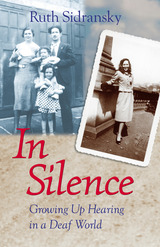 In Silence: Growing Up Hearing in a Deaf World
Ruth Sidransky
Gallaudet University Press, 2006 At last, Ruth Sidranksy’s groundbreaking book In Silence: Growing Up Hearing in a Deaf World is back in print. Her account of growing up as the hearing daughter of deaf Jewish parents in the Bronx and Brooklyn during the 1930s and1940s reveals the challenges deaf people faced during the Depression and afterward.
Inside her family’s apartment, Sidransky knew a warm, secure place. She recalls her earliest memories of seeing words fall from her parents’ hands. She remembers her father entertaining the family endlessly with his stories, and her mother’s story of tying a red ribbon to herself and her infant daughter to know when she needed anything in the night.
Outside the apartment, the cacophonous hearing world greeted Sidransky’s family with stark stares of curiosity as though they were “freaks.” Always upbeat, her proud father still found it hard to earn a living. When Sidransky started school, she was placed in a class for special needs children until the principal realized that she could hear and speak.
Sidransky portrays her family with deep affection and honesty, and her frank account provides a living narrative of the Deaf experience in pre- and post-World War II America. In Silence has become an invaluable chronicle of a special time and place that will affect all who read it for years to come.
 In So Many More Words: Arguments and Adventures, Second Edition
Robert Schmuhl
University of Notre Dame Press, 2010
When In So Many Words first appeared in 2006, the Chicago Tribune observed that Robert Schmuhl's collection of essays offered "some of the sharpest and most informative cultural criticism available."
In So Many More Wordsexpands on the writings in the first edition and includes seventeen new essays written during the past four years. Schmuhl analyzes the emergence of Barack Obama and evaluates America's new political landscape in light of the 2008 election. Schmuhl also looks at contemporary media and the cultural effects created by bloggers, pundits, and cable shouters. The explosive growth of news sources, he says, "comes at a public price--a continuing fragmentation of audiences and a marked decline in a commonly shared culture."
Arranged thematically, the essays are divided into three sections: Matters Political and Journalistic, Matters Literary, and Matters Person, offering readers a wide range of issues and subjects. Schmuhl introduces each section with an explanatory preview and adds postscript reflections at the end of most of the essays.
"Readers who enjoy the works of the great International Herald Tribune columnist William Pfaff and the estimable New York Times reporter and columnist Thomas Friedman will find comparable delight in Schmuhl's book. . . . [T]he book ranges confidently across presidential politics, foreign policy, history, the celebrity culture and the present crisis of the news business, all with impressively sure footing." --Chicago Tribune
Praise for the Expanded Edition:
"Bob Schmuhl is the guy I read when I want to understand how things political, cultural, and journalistic interact--and how the world works as a result. He's an analyst who is cool and collected, and so it's cool to know that he's collected, between cloth [two?] covers." --David M. Shribman, Pittsburgh Post-Gazette
"I've known and respected the work of Bob Schmuhl my entire professional life. This expanded version of his work shines with enthusiasm for journalism, American culture, and the English language." --Roy Peter Clark, The Poynter Institute
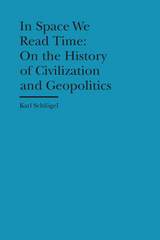 In Space We Read Time: On the History of Civilization and Geopolitics
Karl Schlögel
Bard Graduate Center, 2016 History is usually thought of as a tale of time, a string of events flowing in a particular chronological order. But as Karl Schlögel shows in this groundbreaking book, the where of history is just as important as the when. Schlögel relishes space the way a writer relishes a good story: on a quest for a type of history that takes full account of place, he explores everything from landscapes to cities, maps to railway timetables. Do you know the origin of the name “Everest”? What can the layout of towns tell us about the American Dream? In Space We Read Time reveals this and much, much more.
Here is both a model for thinking about history within physical space and a stimulating history of thought about space, as Schlögel reads historical periods and events within the context of their geographical location. Discussions range from the history of geography in France to what a town directory from 1930s Berlin can say about professional trades that have since disappeared. He takes a special interest in maps, which can serve many purposes—one poignant example being the German Jewish community’s 1938 atlas of emigration, which showed the few remaining possibilities for escape. Other topics include Thomas Jefferson’s map of the United States; the British survey of India; and the multiple cartographers with Woodrow Wilson at the Paris Peace Conference, where the aim was to redraw Europe’s boundaries on the basis of ethnicity. Moving deftly from the Austro-Hungarian Empire to 9/11 and from Vermeer’s paintings to the fall of the Berlin Wall, this intriguing book presents history from a completely new perspective.
In Spite of the Dark Silence
Jorge Volpi
Swan Isle Press, 2010 "He was named Jorge, like me, and for this his life hurts me twice." So writes Jorge Volpi in this highly original novel that presents a biographical perspective on the tragic life of the poet and chemist Jorge Cuesta. Cuesta was one of the founders of Los Contemporáneos, an influential twentieth-century literary movement. The poetic voice of Cuesta's verses can be heard throughout, offering insights into the creative and destructive forces and impulses in his work that eventually led to a mental ward—and a shocking suicide at thirty-eight. The fictional "Jorge," as narrator, embarks on an obsessive quest to understand the life of the long-dead poet, with the distance between subject and researcher blurring as he finds himself struggling to understand his own life. It is a brave search for anyone willing to gaze into the mirror of mortality "in spite of the dark silence."
In Splendid Isolation: A History of the Willie Commelin Scholten Phytopathology Laboratory, 1894-1992
Patricia E. Faasse
Amsterdam University Press, 2009
For almost a hundred years, the Willie Commelin Scholten laboratory was the hub of phytopathology research in the Netherlands, where generations of students learned the principles of plant pathology. In Splendid Isolation reconstructs the history of this unique institution, from its beginnings as a small private laboratory in the late nineteenth century to its final days as a renowned university research center. This unique volume chronicles how the laboratory’s scientific reputation spread far beyond the country’s borders as it diagnosed and researched thousands of plant diseases.
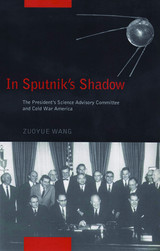 In Sputnik's Shadow: The President's Science Advisory Committee and Cold War America
Wang, Zuoyue
Rutgers University Press, 2009 In today’s world of rapid advancements in science and technology, we need to scrutinize more than ever the historical forces that shape our perceptions of what these new possibilities can and cannot do for social progress. In Sputnik’s Shadow provides a lens to do just that, by tracing the rise and fall of the President’s Science Advisory Committee from its ascendance under Eisenhower in the wake of the Soviet launching of Sputnik to its demise during the Nixon years. Members of this committee shared a strong sense of technological skepticism; they were just as inclined to advise the president about what technology couldn’t do—for national security, space exploration, arms control, and environmental protection—as about what it could do.
Zuoyue Wang examines key turning points during the twentieth century, including the beginning of the Cold War, the debates over nuclear weapons, the Sputnik crisis in 1957, the struggle over the Vietnam War, and the eventual end of the Cold War, showing how the involvement of scientists in executive policymaking evolved over time. Bringing new insights to the intellectual, social, and cultural histories of the era, this book not only depicts the drama of Cold War American science, it gives perspective to how we think about technological advancements today.
In Stalin's Time: Middleclass Values in Soviet Fiction
Vera S. Dunham
Duke University Press, 1990 This new edition of In Stalin’s Time, which brings back into print Vera Dunham’s 1976 landmark study of popular fiction in the Soviet Union during the Stalin regime, is updated to include new material by the author and a new introduction by Richard Sheldon. Dunham describes how the middle-brow or postwar establishmentarian literature of the Stalinist period was a product of a “Big Deal” intended to propagate values and establish an alliance between the regime and the middle class. Both descriptive and analytical, Dunham’s complex picture of “high totalitarianism” not only reveals insights into the details of Soviet life but illuminates important theoretical questions about the role of literature in the political structure of Soviet society.
 In Step with the Times: Mapiko Masquerades of Mozambique
Paolo Israel
Ohio University Press, 2014 The helmet-shaped mapiko masks of Mozambique have garnered admiration from African art scholars and collectors alike, due to their striking aesthetics and their grotesque allure. This book restores to mapiko its historic and artistic context, charting in detail the transformations of this masquerading tradition throughout the twentieth century.
Based on field research spanning seven years, this study shows how mapiko has undergone continuous reinvention by visionary individuals, has diversified into genres with broad generational appeal, and has enacted historical events and political engagements. This dense history of creativity and change has been sustained by a culture of competition deeply ingrained within the logic of ritual itself. The desire to outshine rivals on the dance ground drives performers to search for the new, the astonishing, and the topical. It is this spirit of rivalry and one-upmanship that keeps mapiko attuned to the times that it traverses.
In Step with the Times is illustrated with vibrant photographs of mapiko masks and performances. It marks the most radical attempt to date to historicize an African performative tradition.
In Struggle
Harvard University Press, 1981 With its radical ideology and tactics, the Student Nonviolent Coordinating Committee (SNCC) was the cutting edge of the civil rights movement in the '60s. This sympathetic yet even-handed book records for the first time the complete story of SNCC's evolution, of its successes and its difficulties in the ongoing struggle to end white repression.
 In Struggle: SNCC and the Black Awakening of the 1960s, With a New Introduction and Epilogue by the Author
Clayborne Carson
Harvard University Press, 1995 With its radical ideology and effective tactics, the Student Nonviolent Coordinating Committee (SNCC) was the cutting edge of the civil rights movement during the 1960s. This sympathetic yet evenhanded book records for the first time the complete story of SNCC’s evolution, of its successes and its difficulties in the ongoing struggle to end white oppression.
At its birth, SNCC was composed of black college students who shared an ideology of moral radicalism. This ideology, with its emphasis on nonviolence, challenged Southern segregation. SNCC students were the earliest civil rights fighters of the Second Reconstruction. They conducted sit-ins at lunch counters, spearheaded the freedom rides, and organized voter registration, which shook white complacency and awakened black political consciousness. In the process, Clayborne Carson shows, SNCC changed from a group that endorsed white middle-class values to one that questioned the basic assumptions of liberal ideology and raised the fist for black power. Indeed, SNCC’s radical and penetrating analysis of the American power structure reached beyond the black community to help spark wider social protests of the 1960s, such as the anti–Vietnam War movement.
Carson’s history of SNCC goes behind the scene to determine why the group’s ideological evolution was accompanied by bitter power struggles within the organization. Using interviews, transcripts of meetings, unpublished position papers, and recently released FBI documents, he reveals how a radical group is subject to enormous, often divisive pressures as it fights the difficult battle for social change.
|
|
